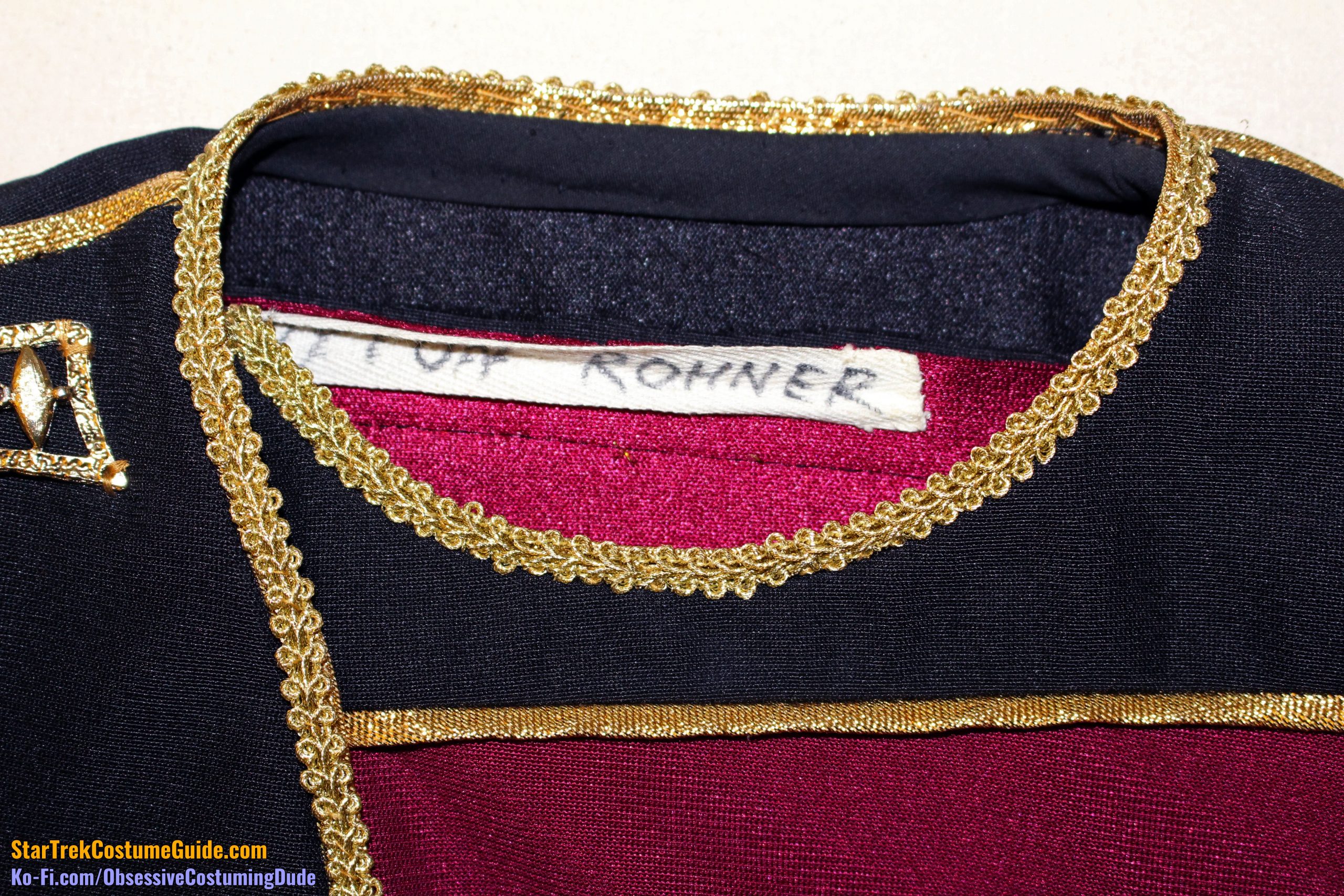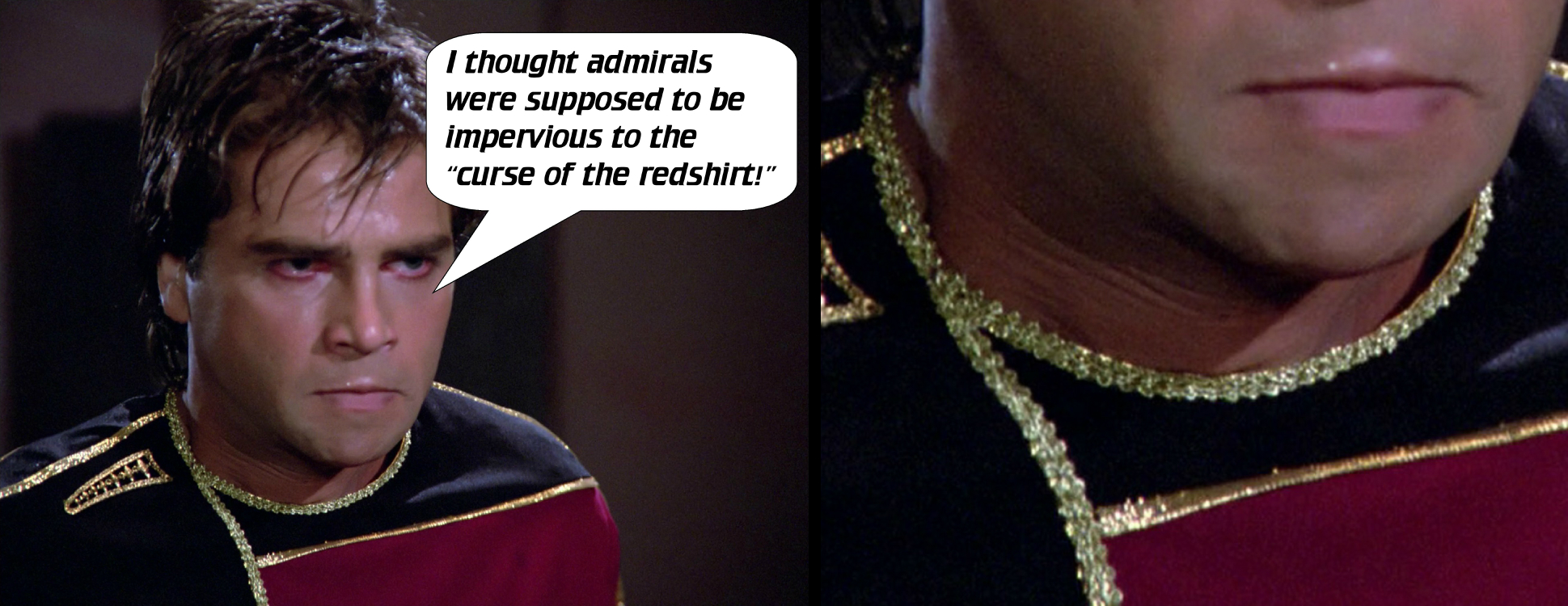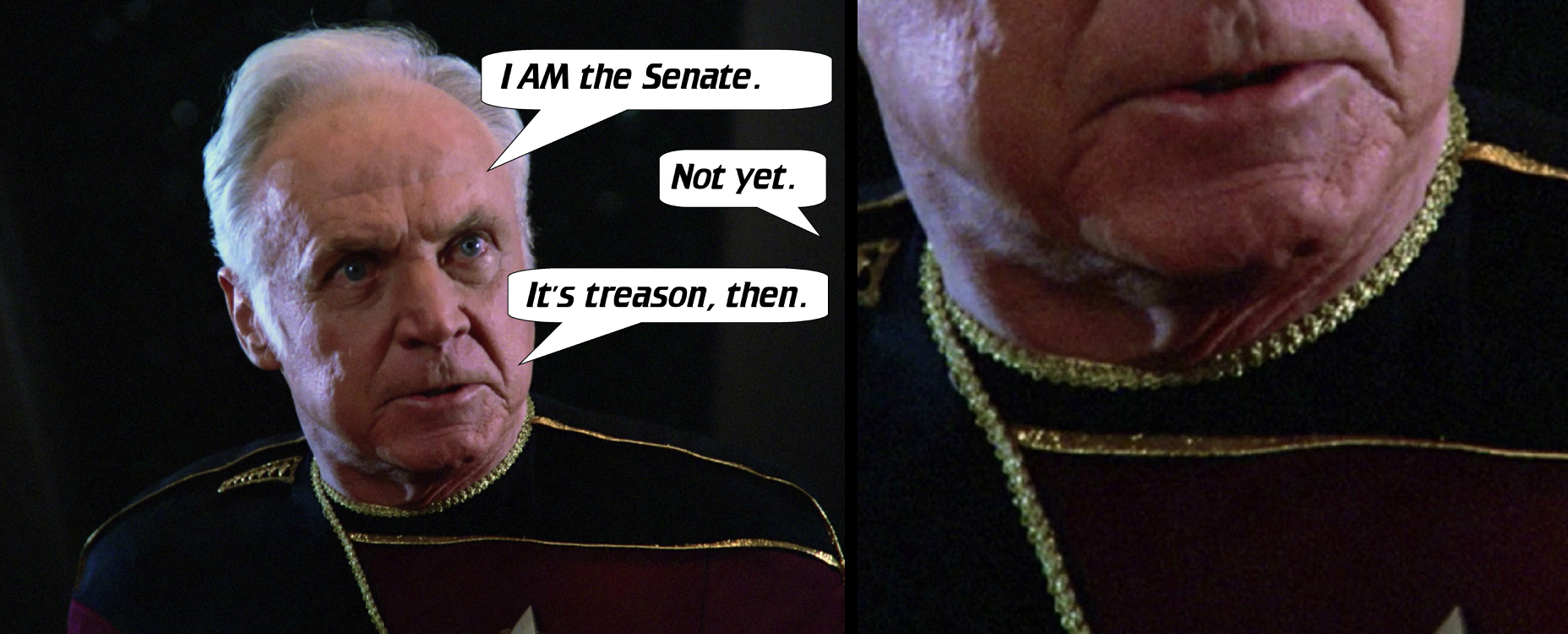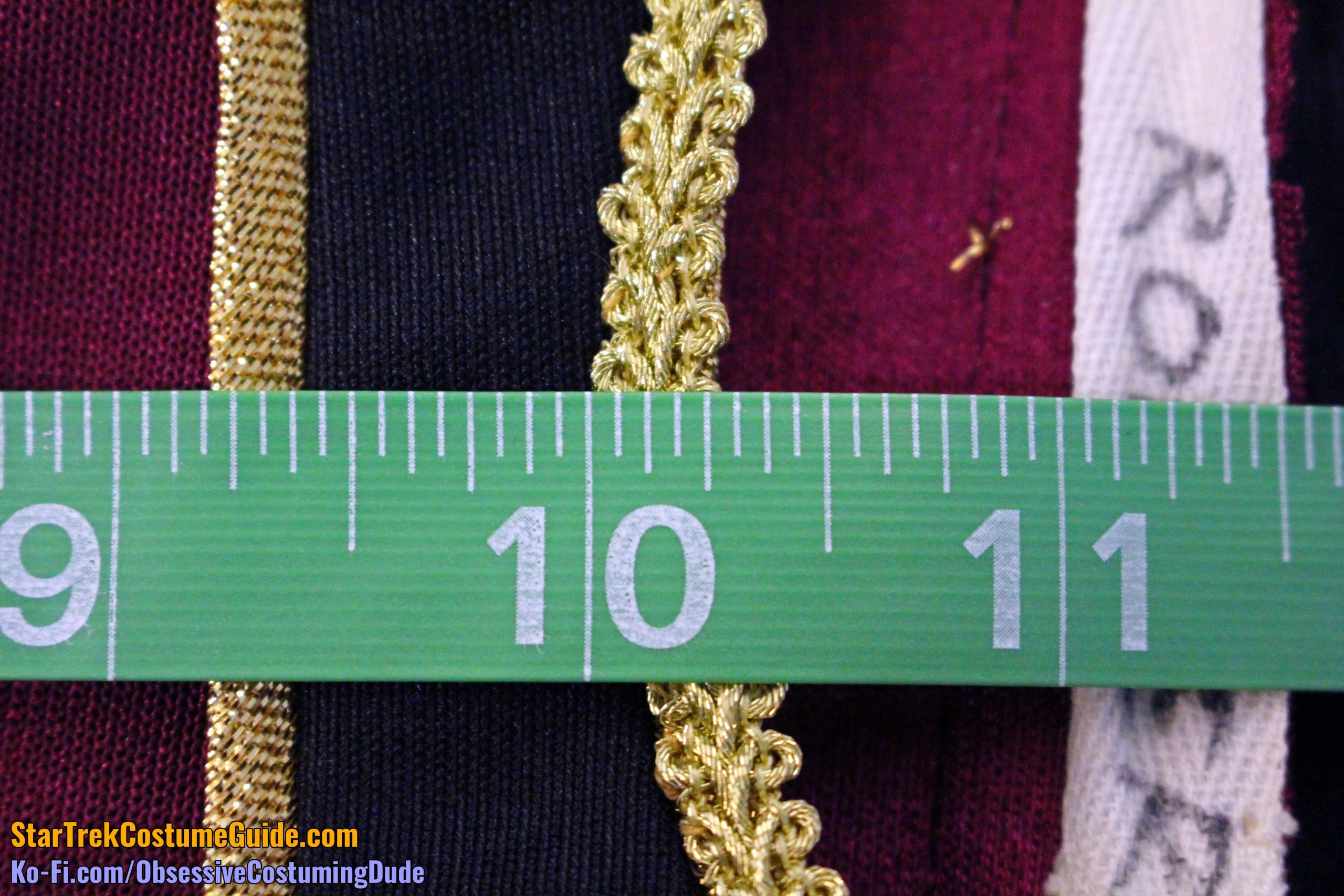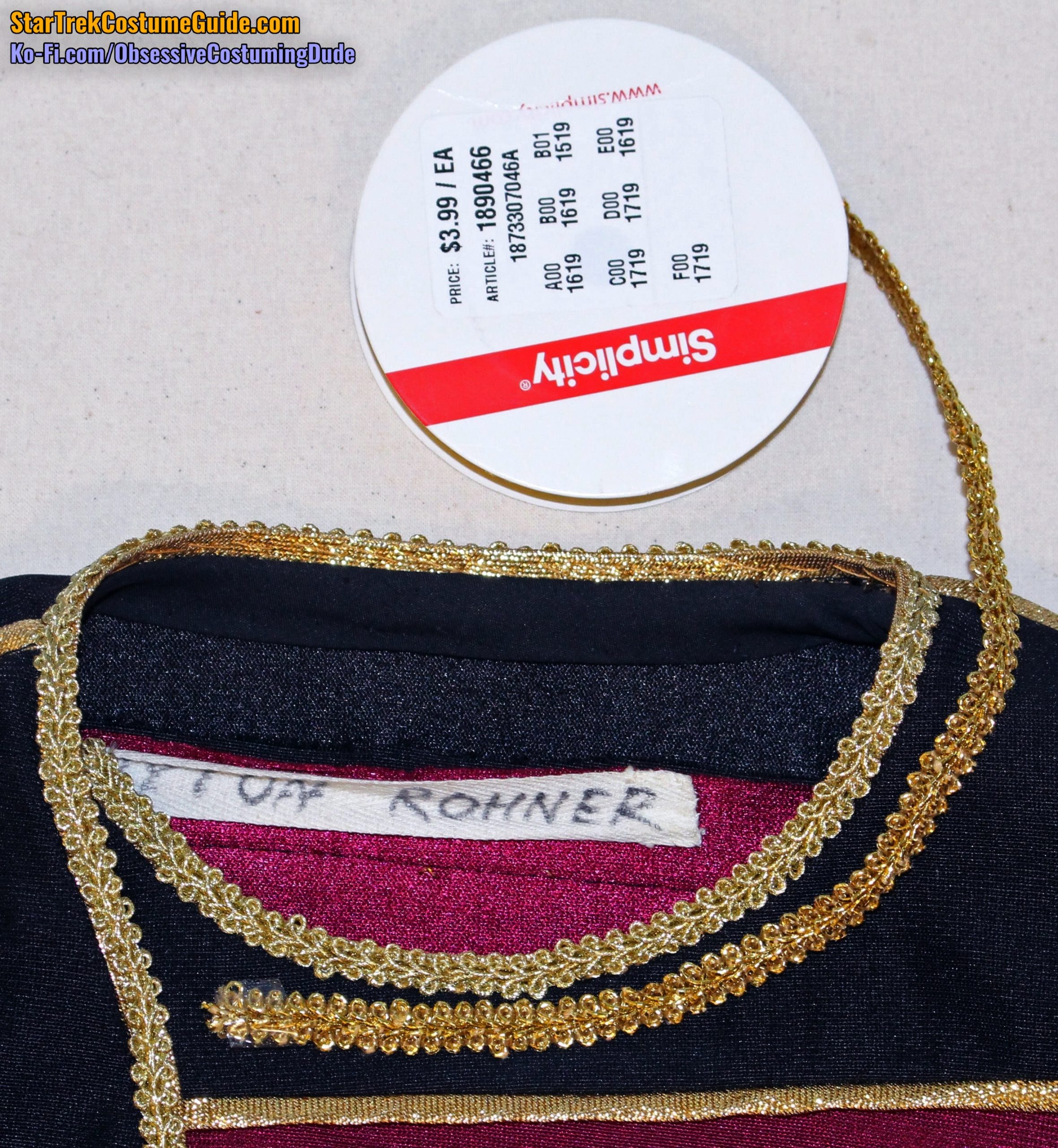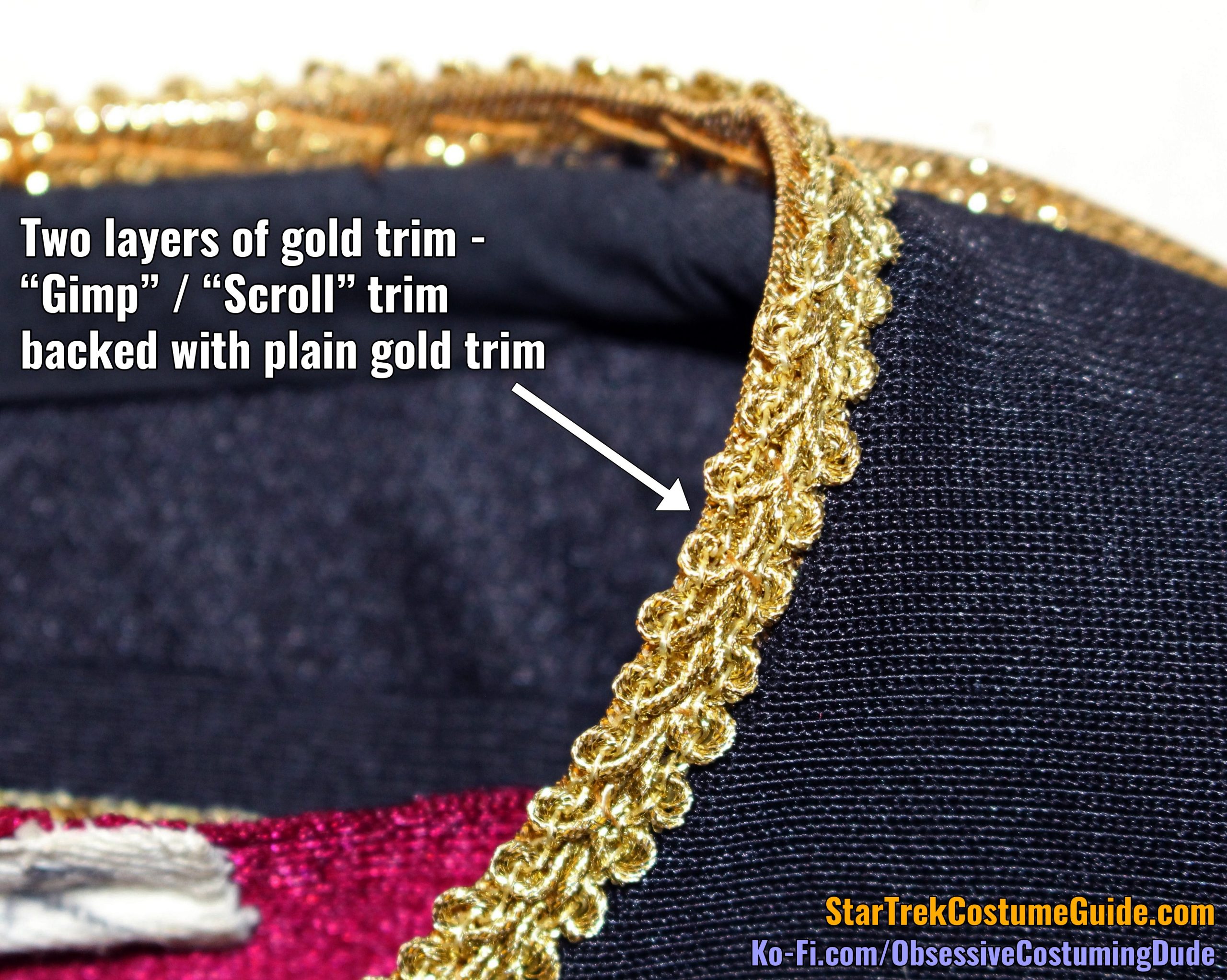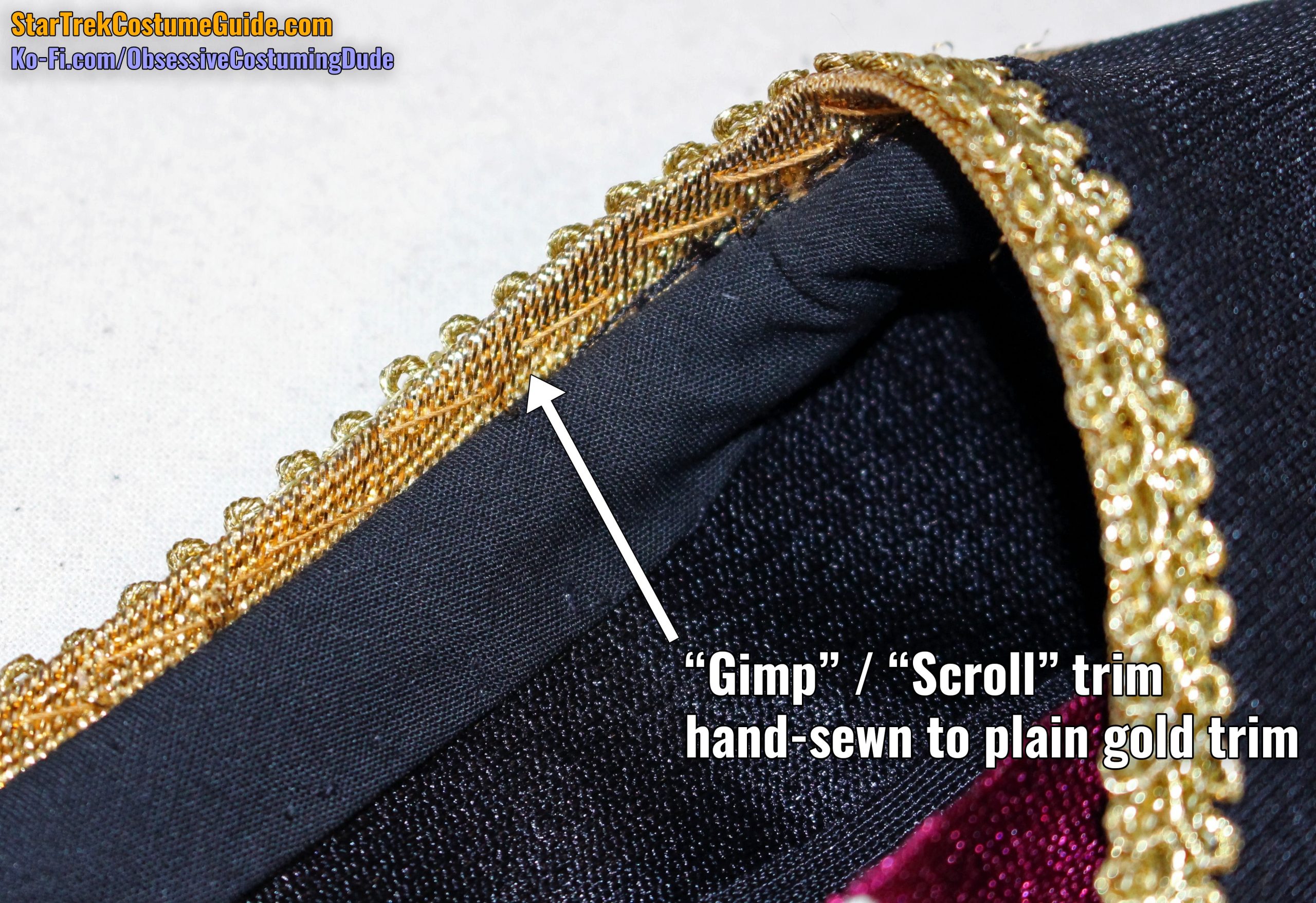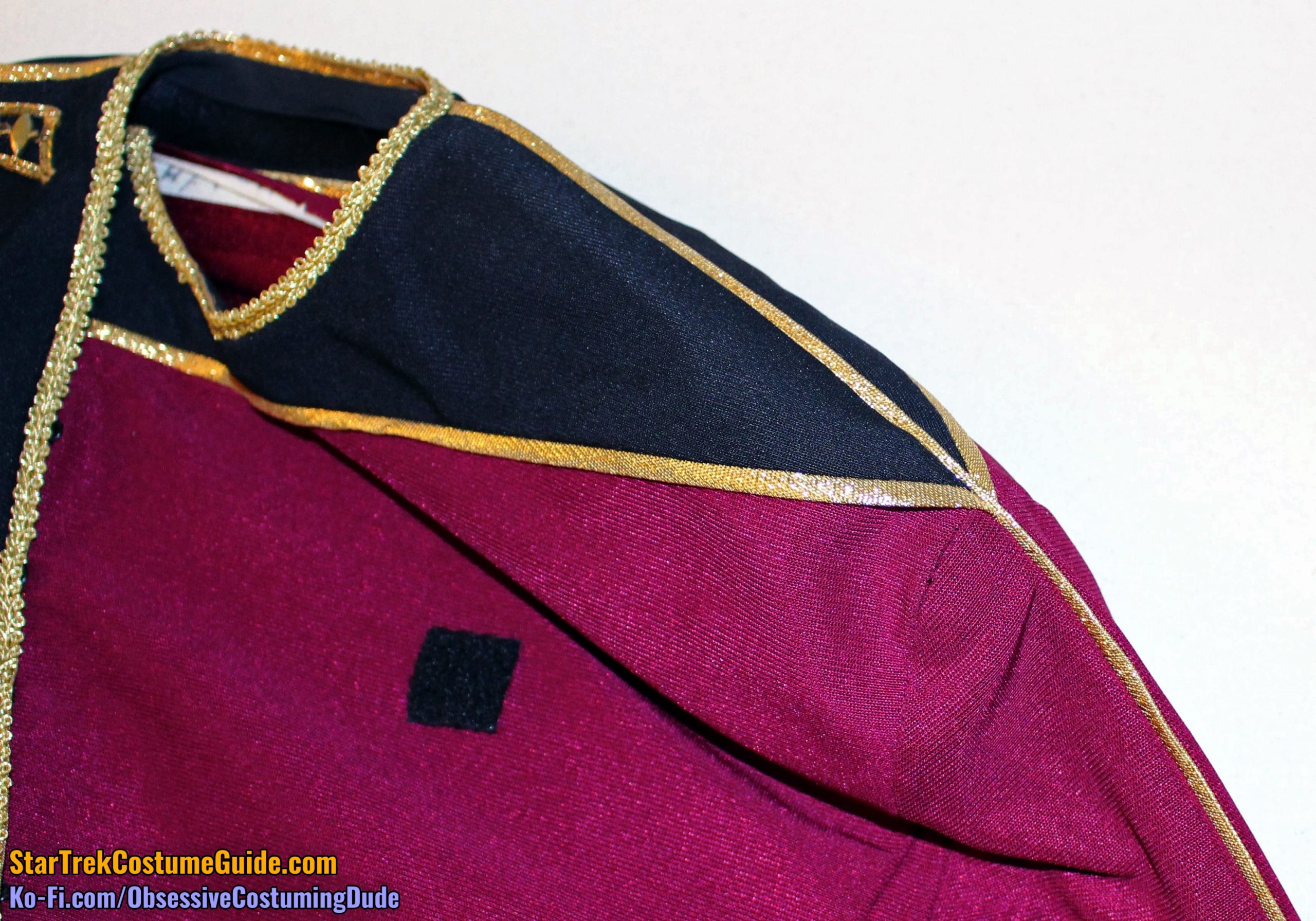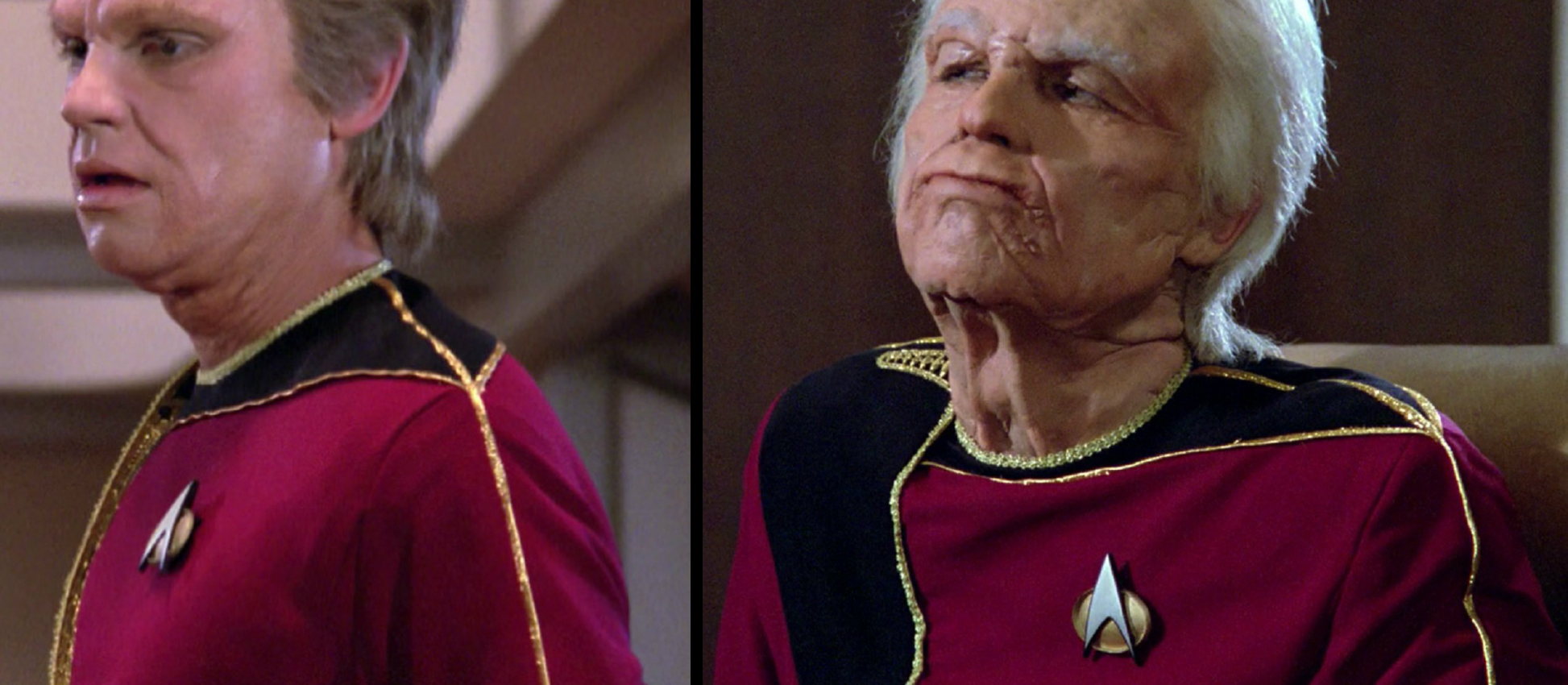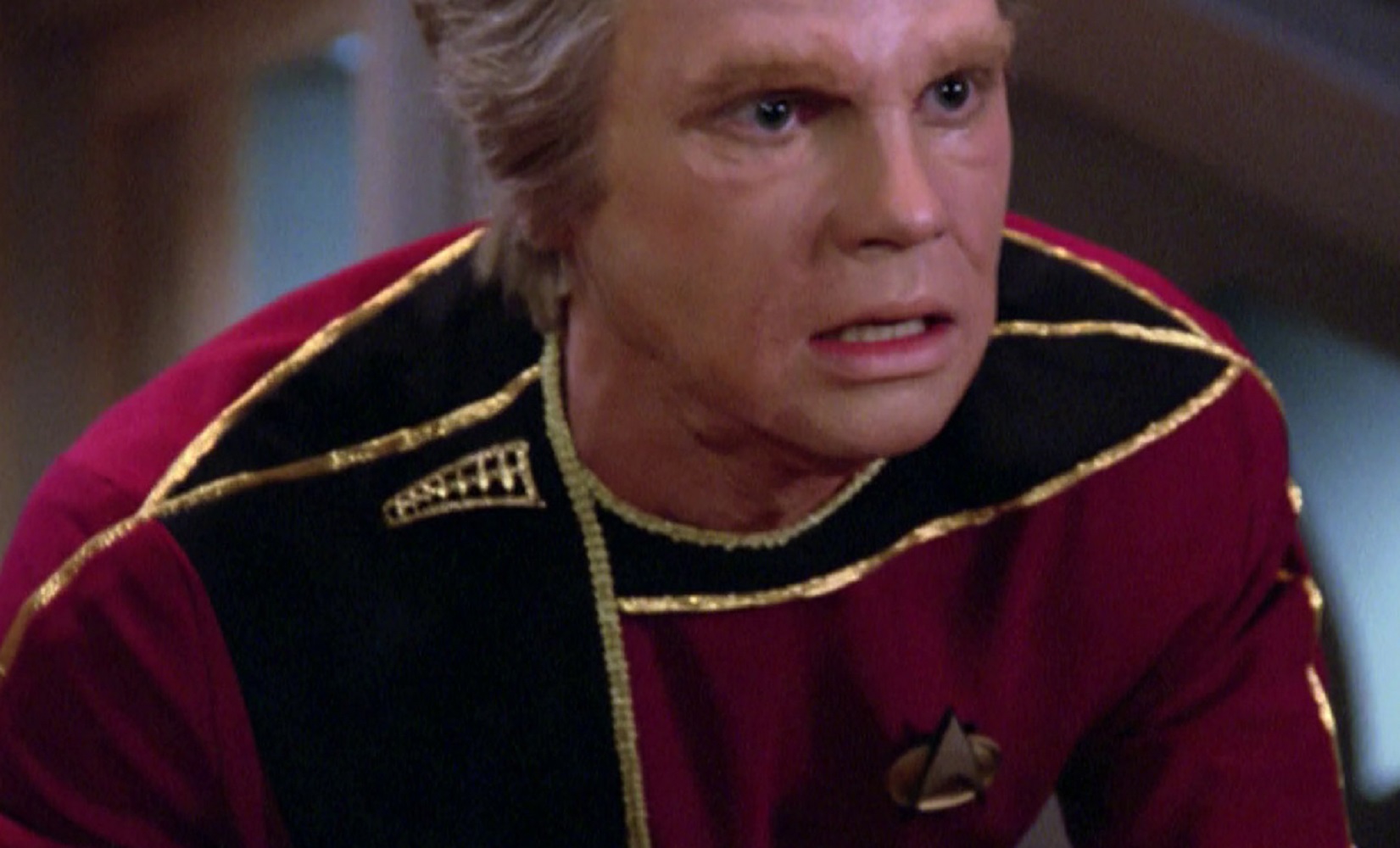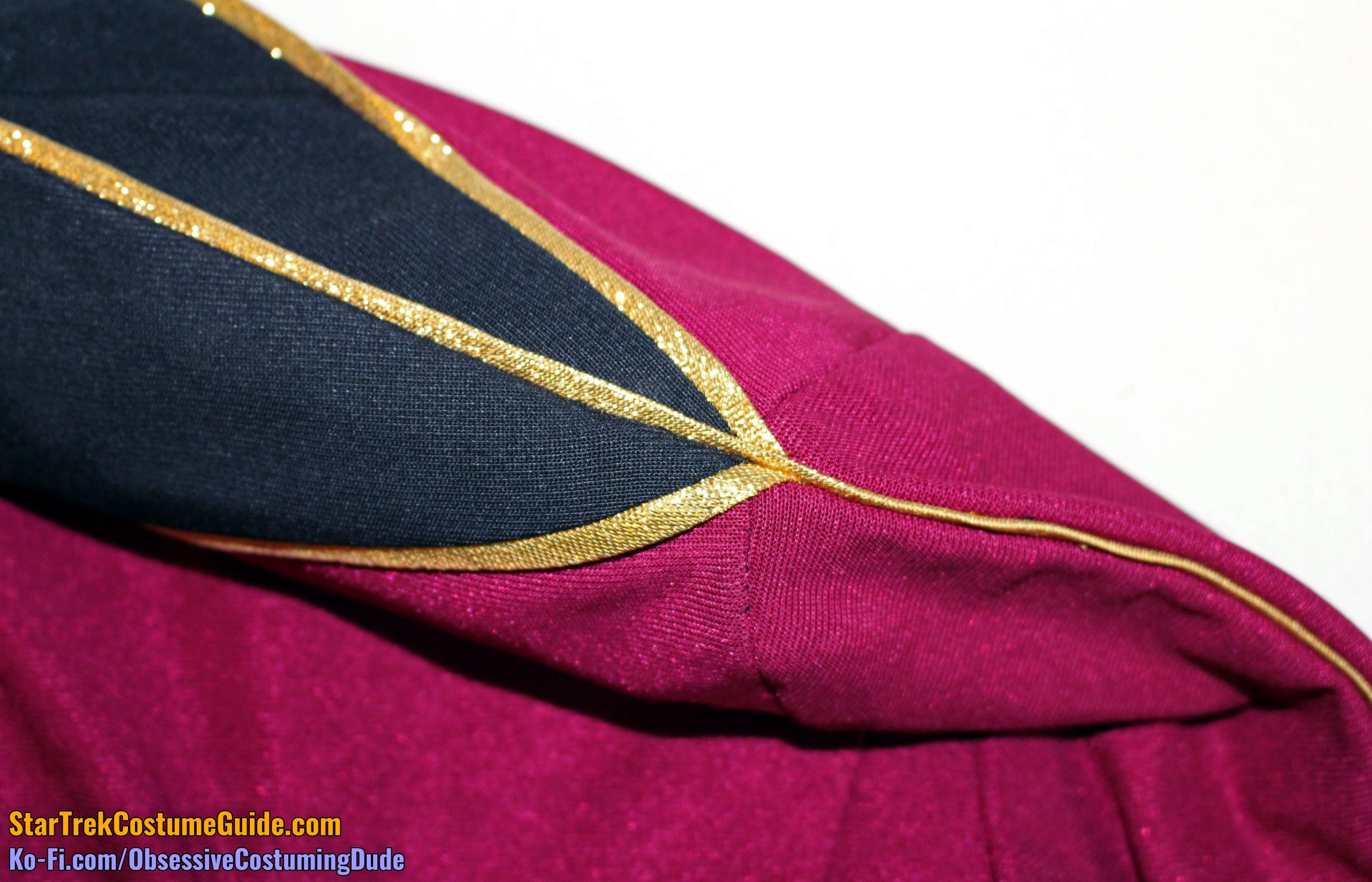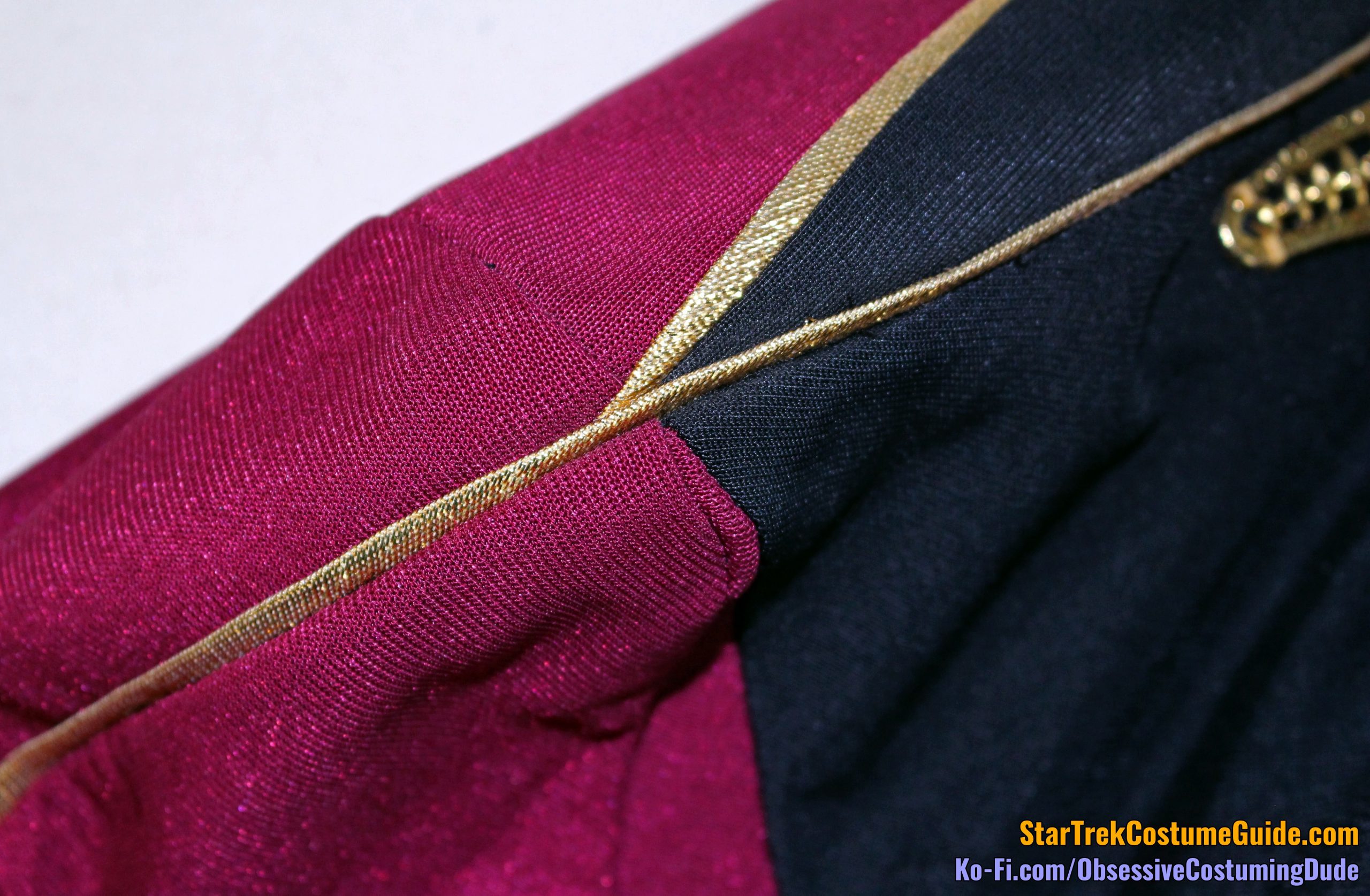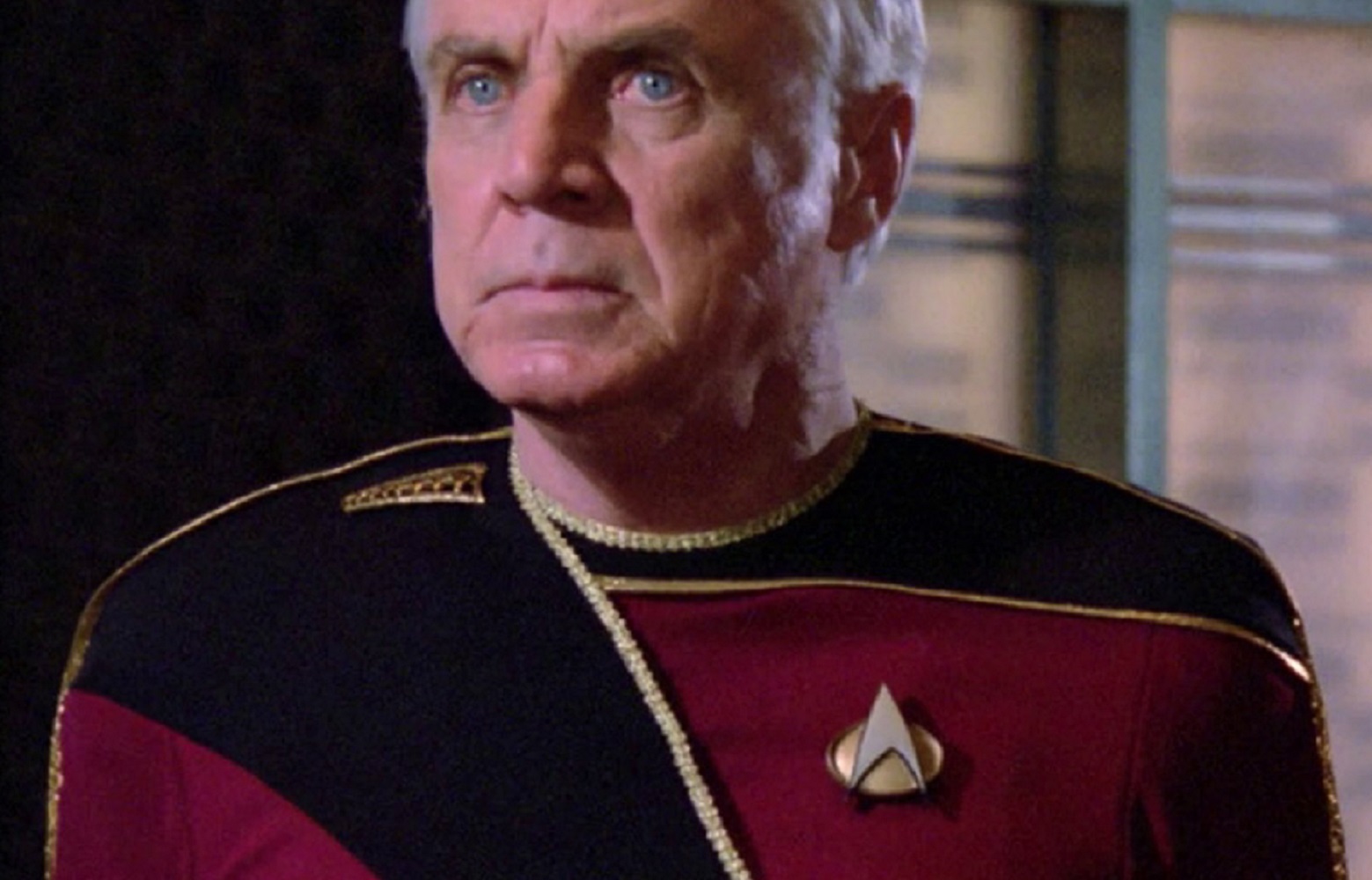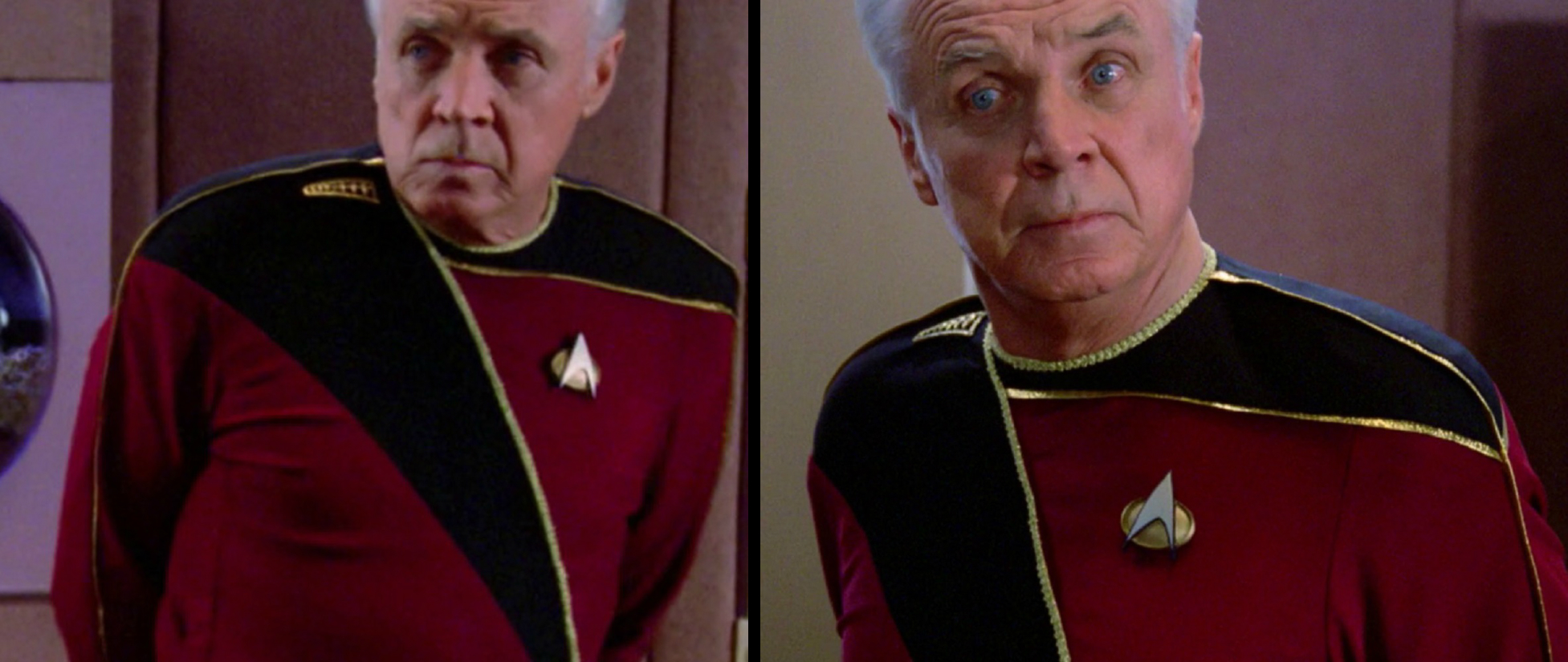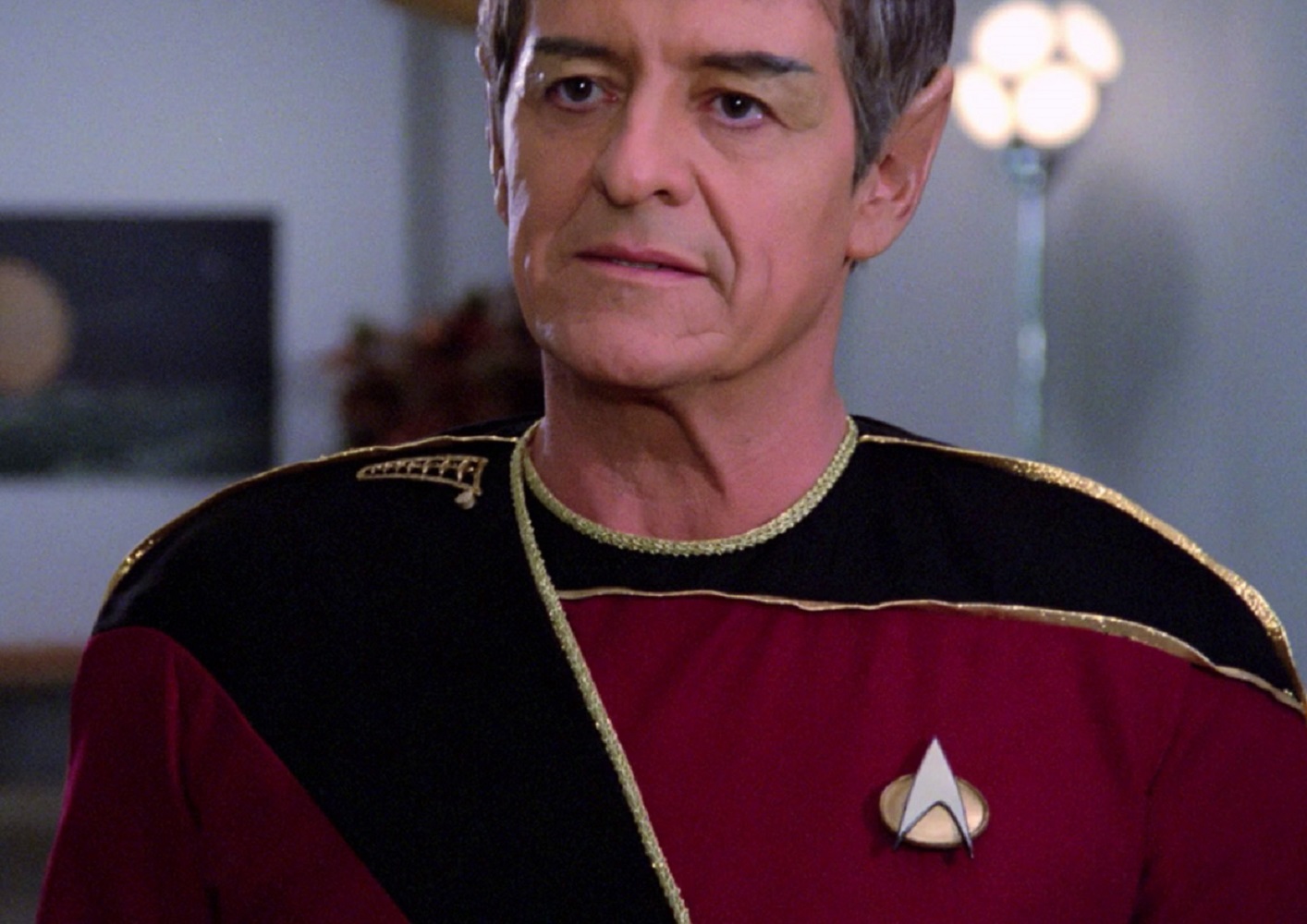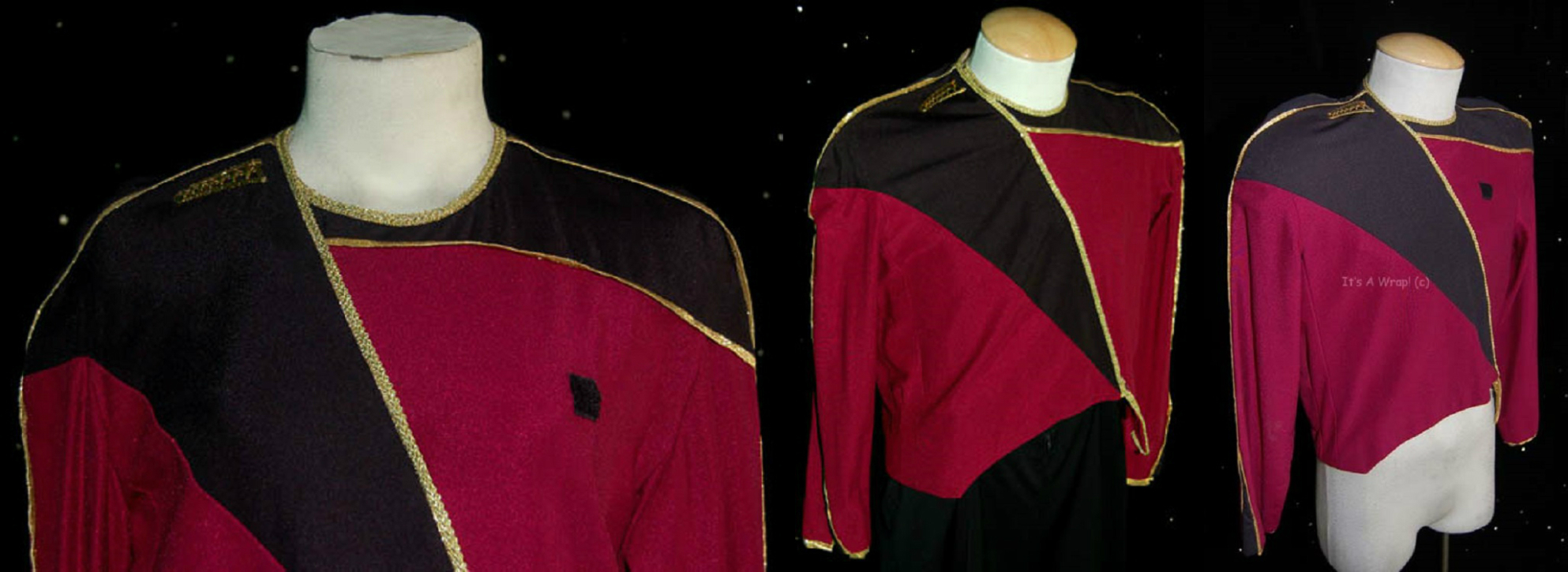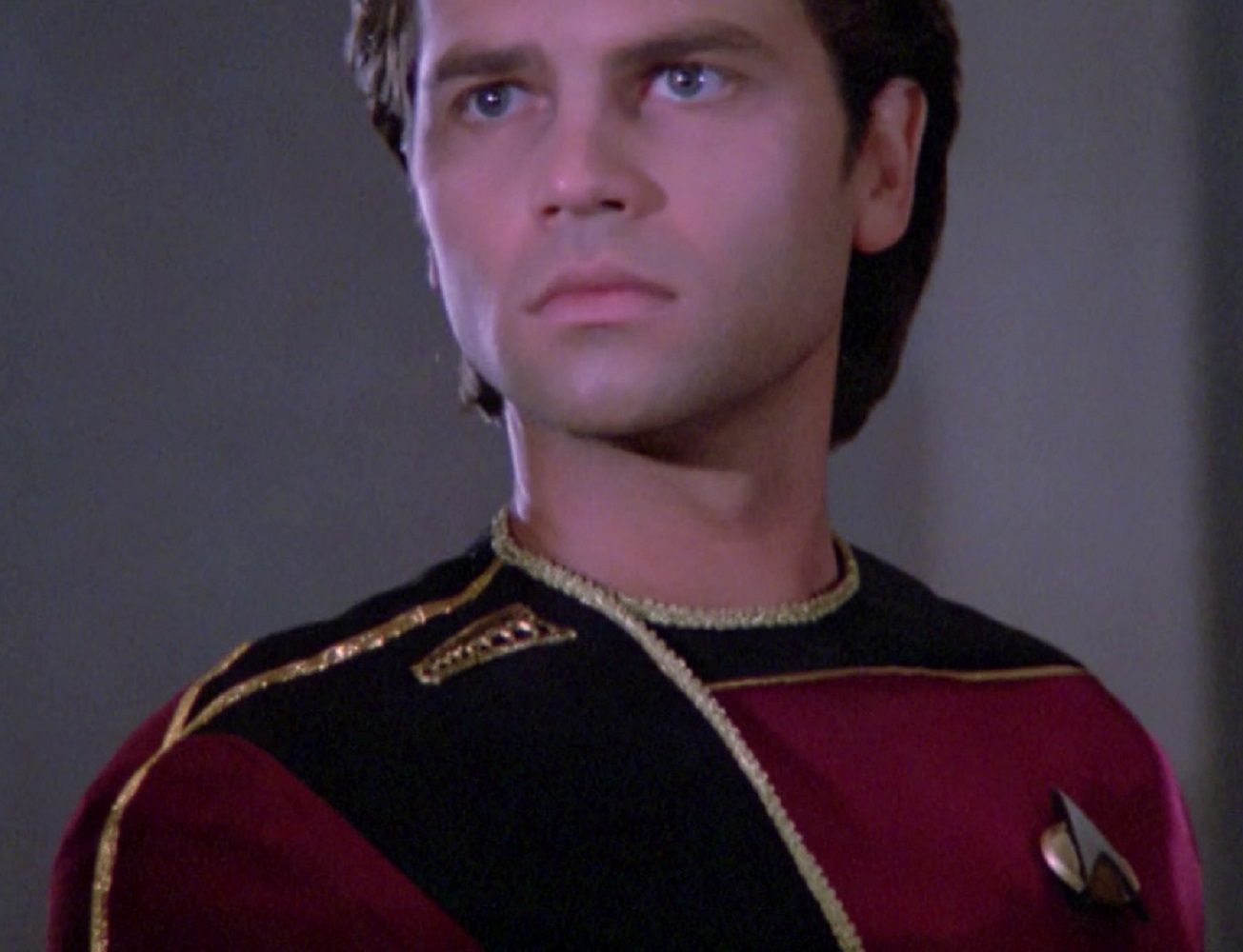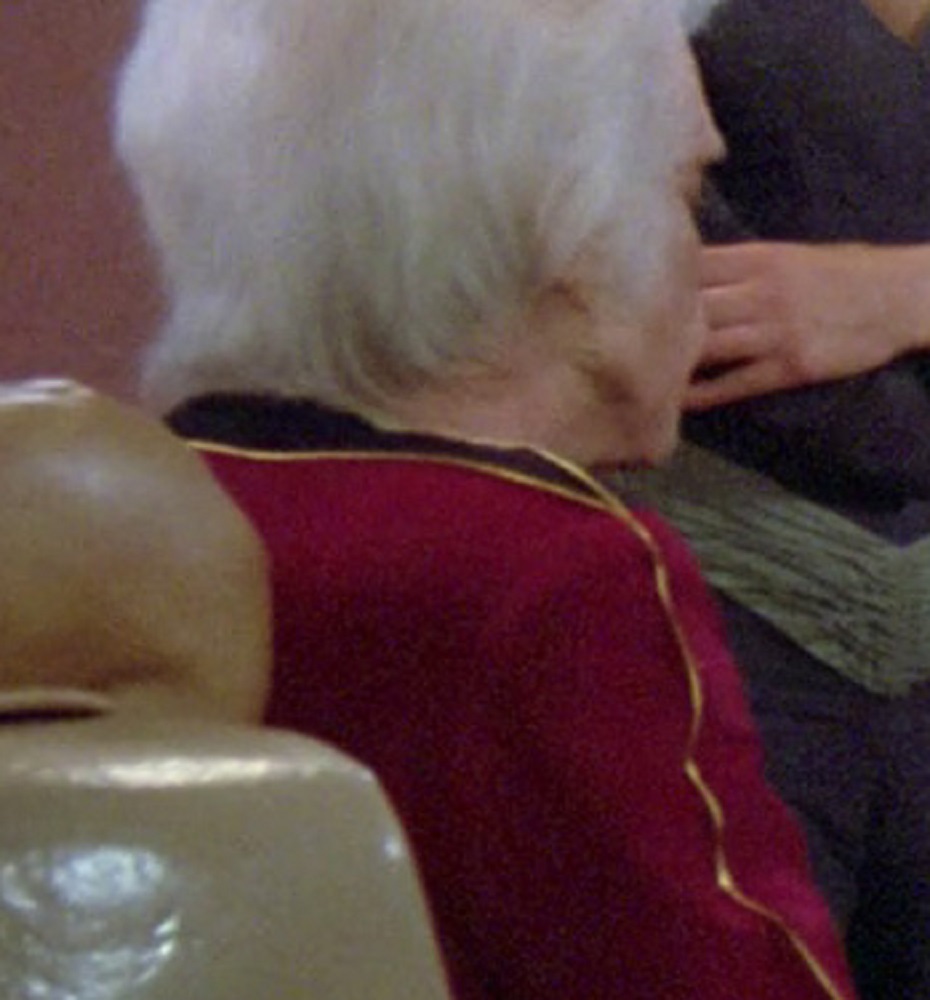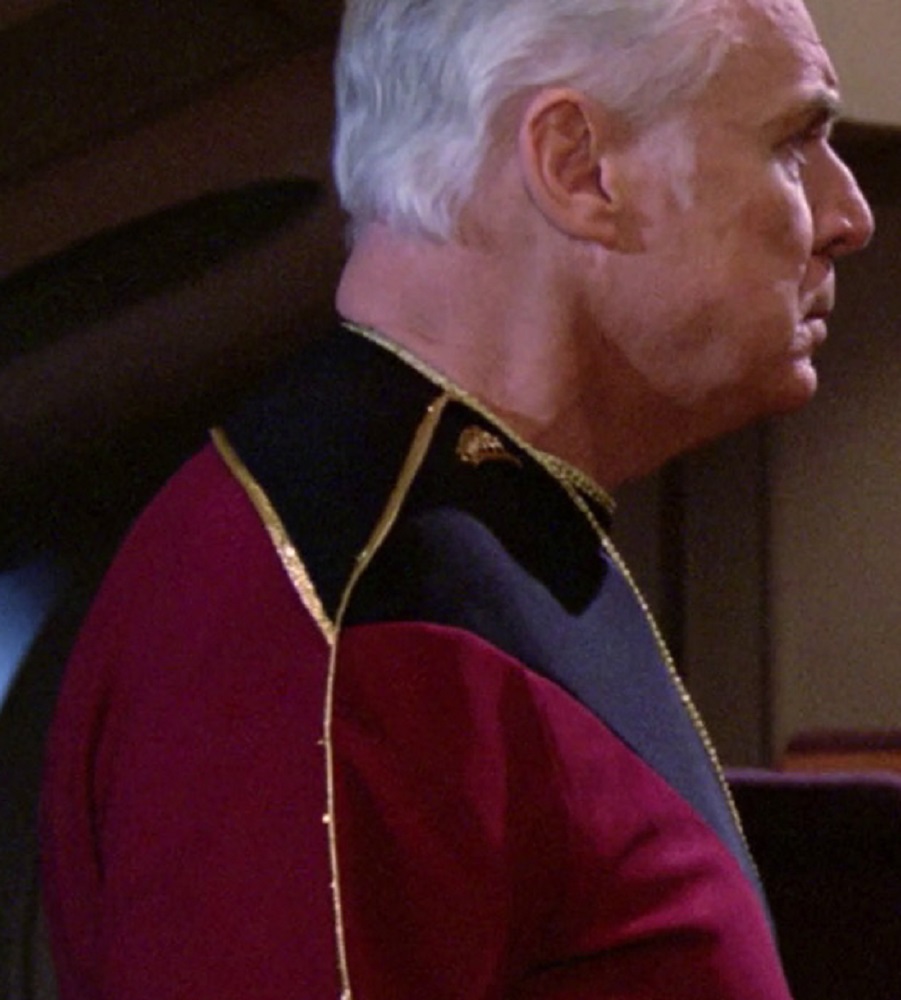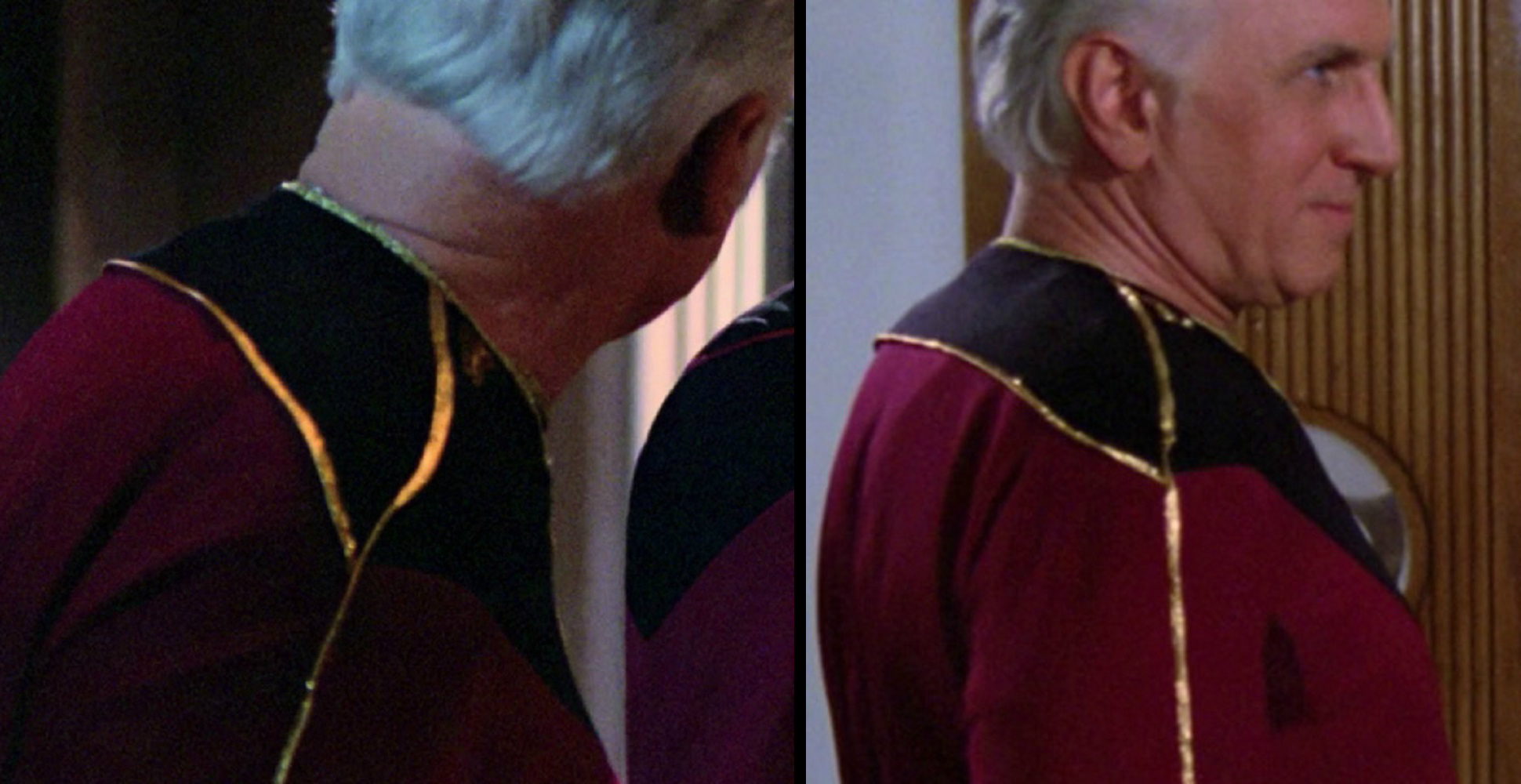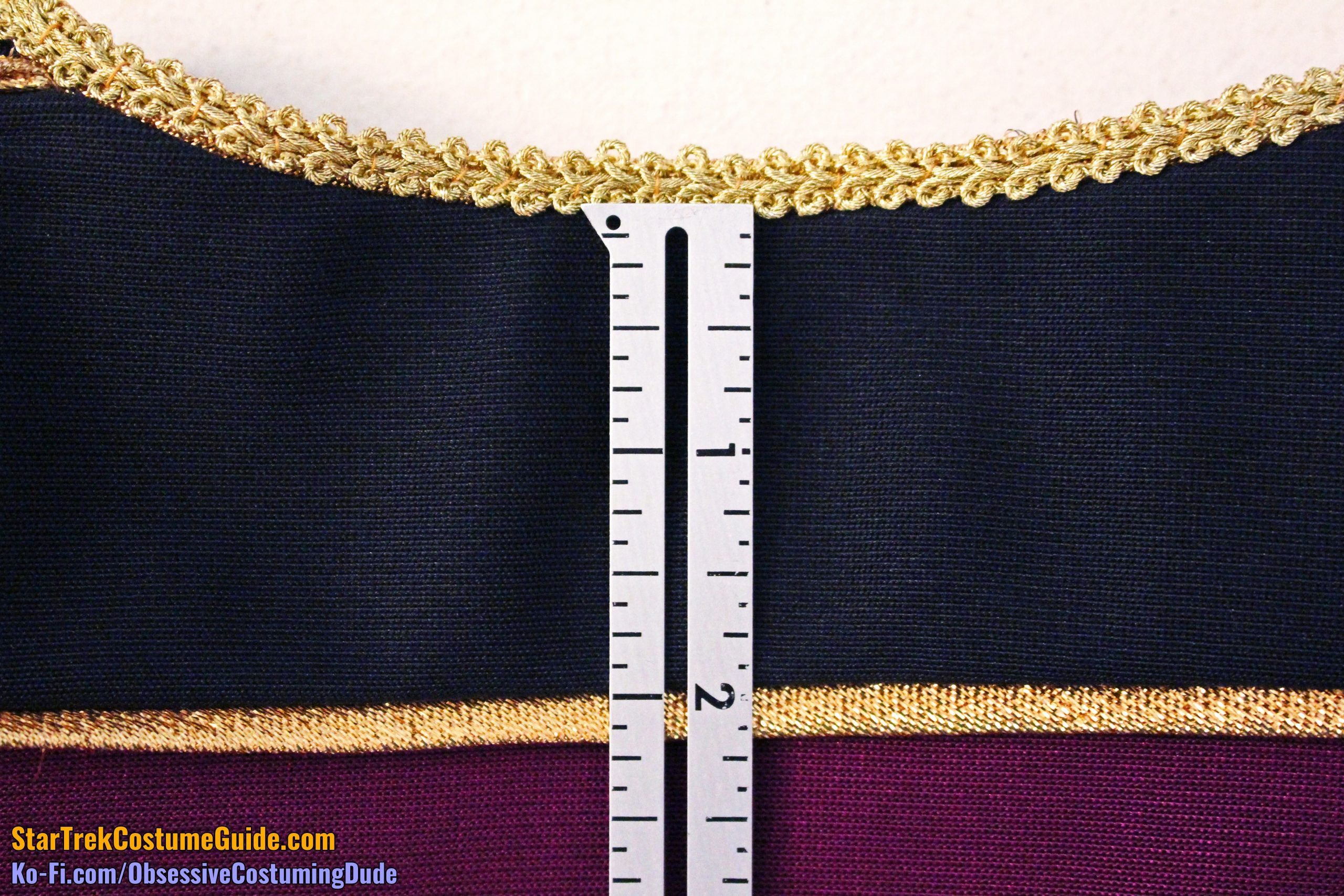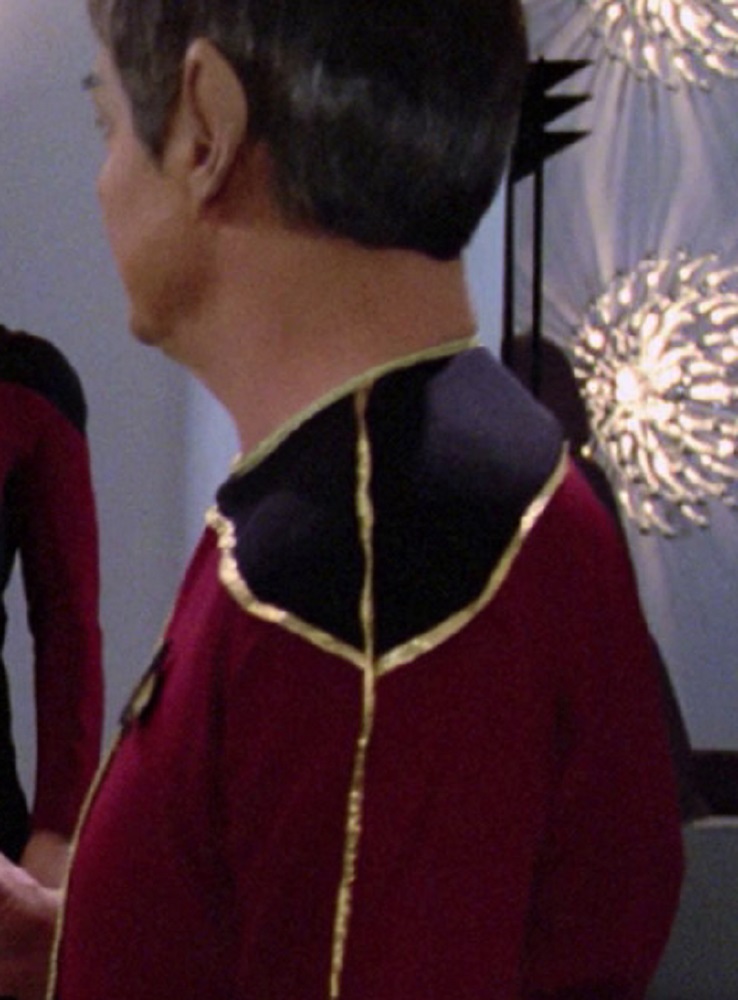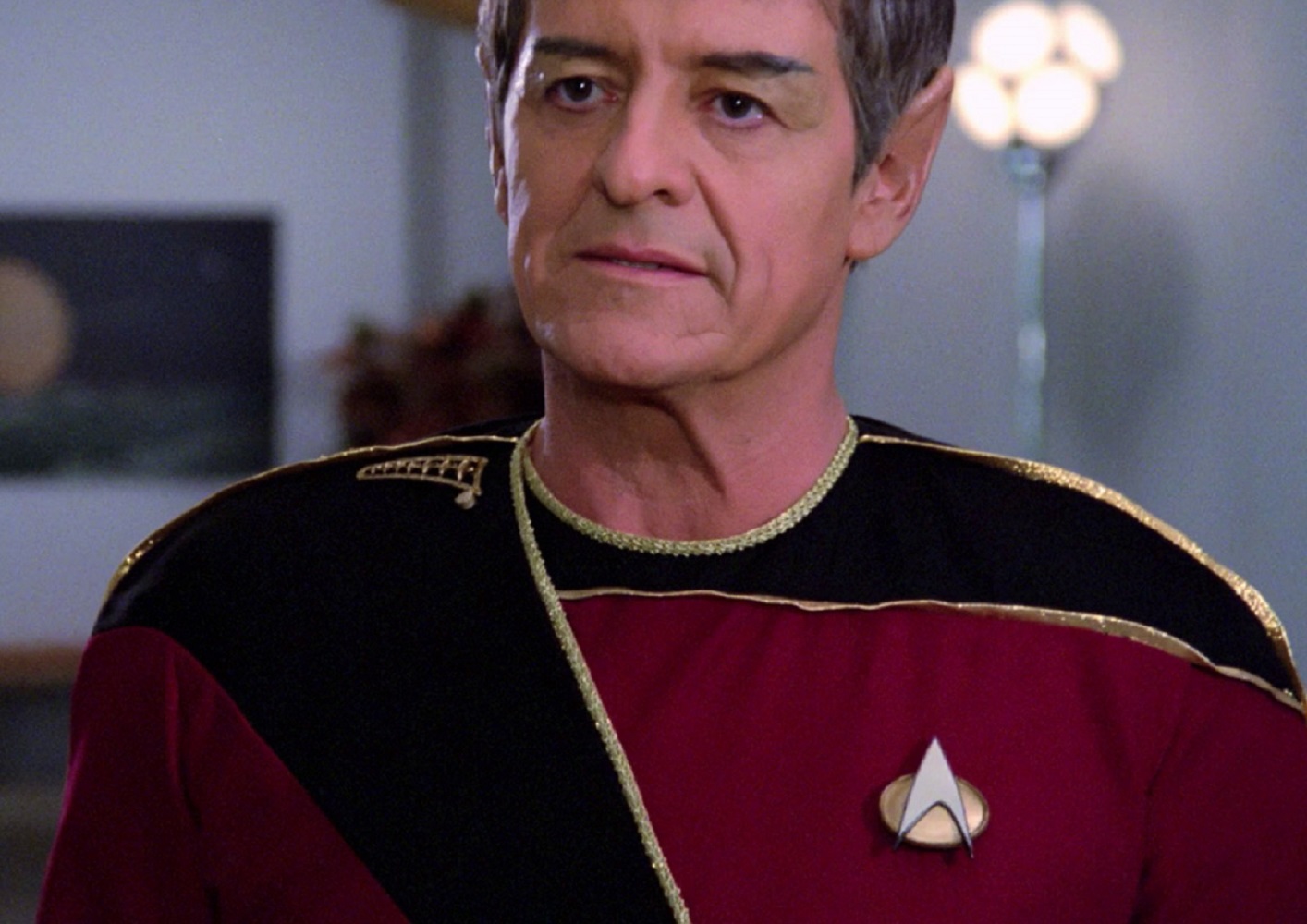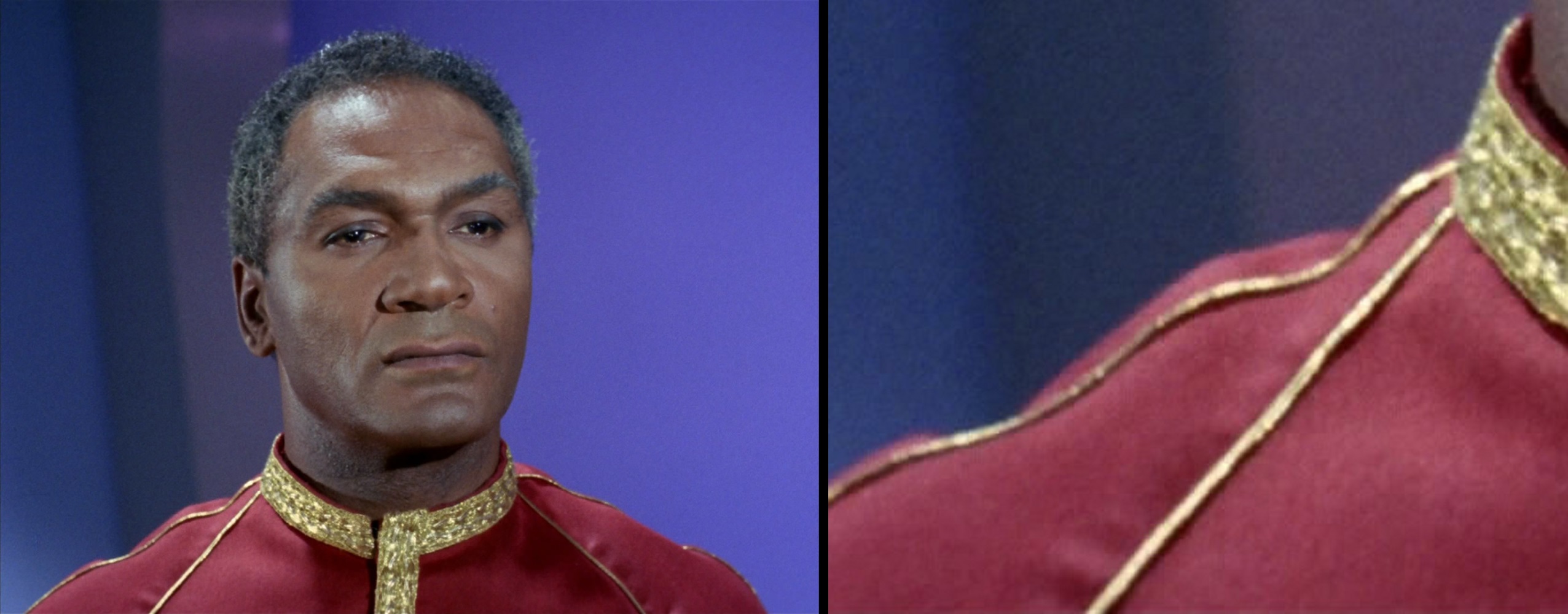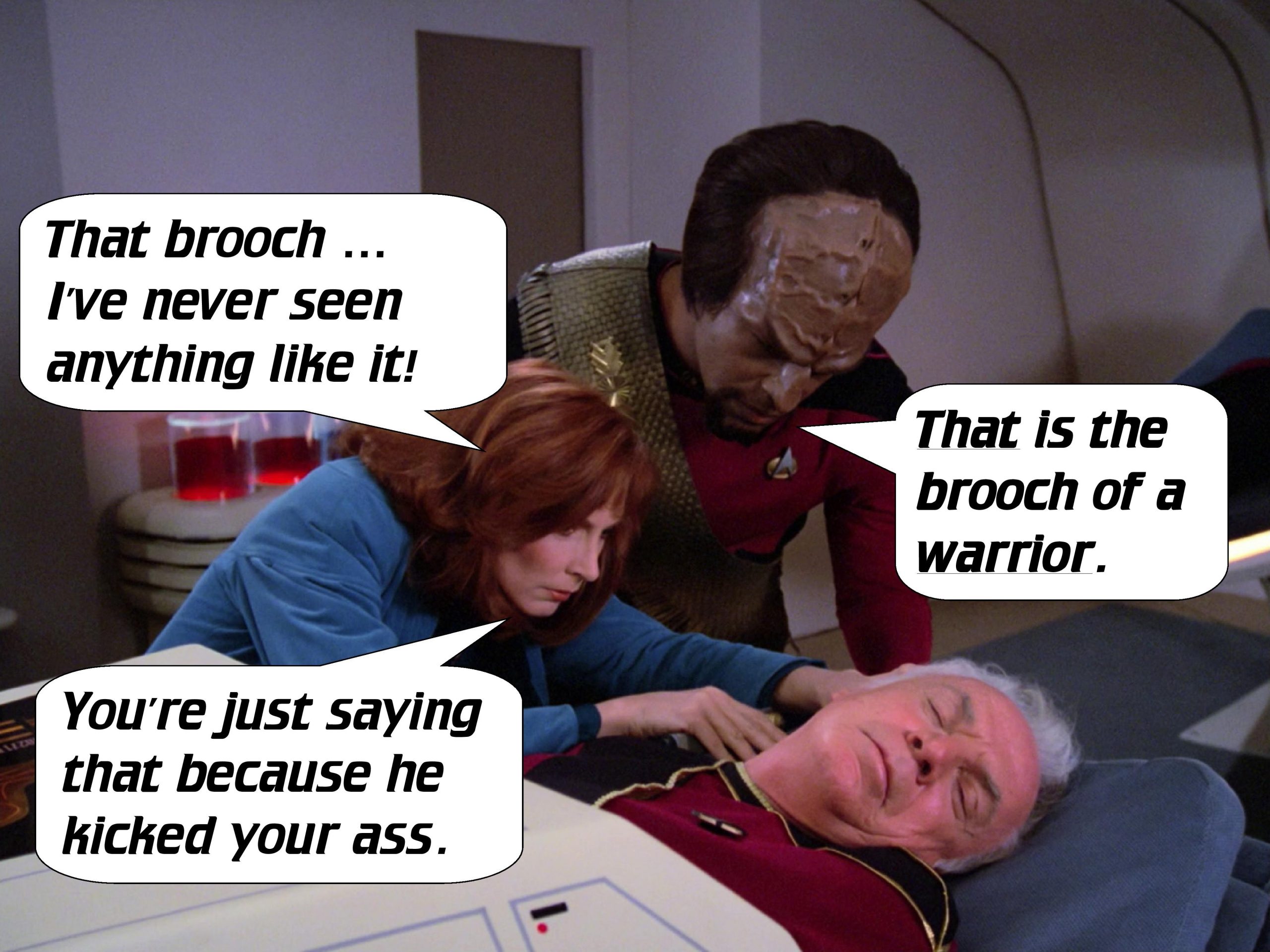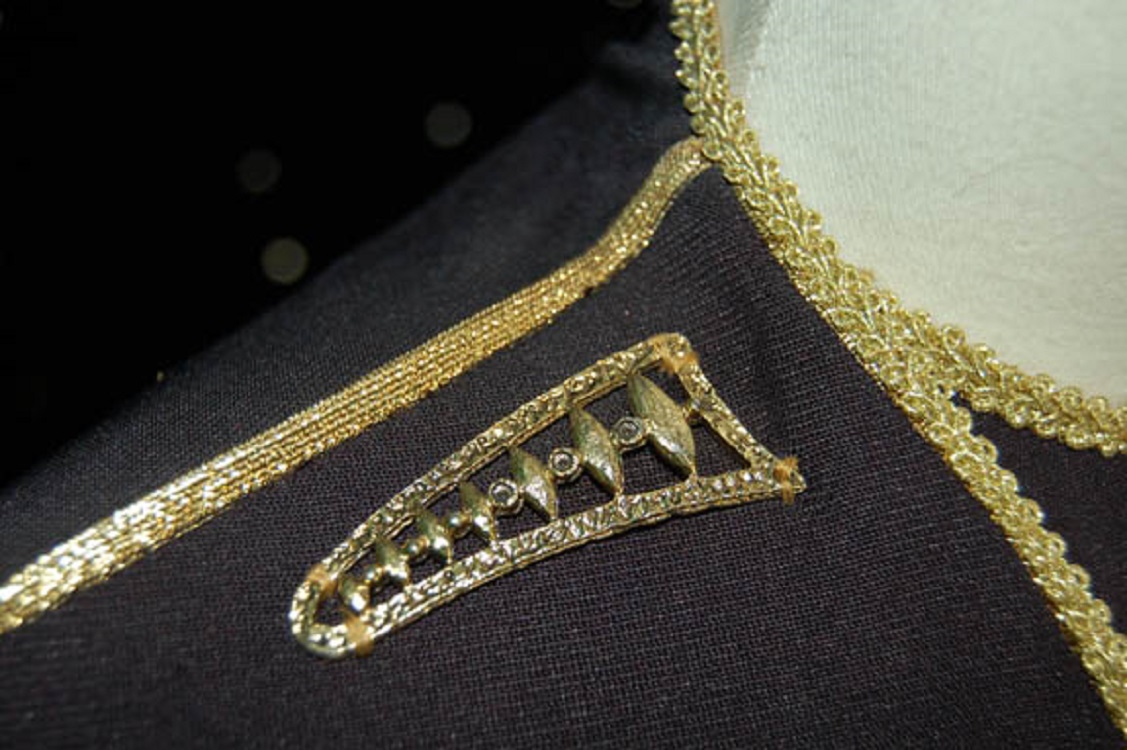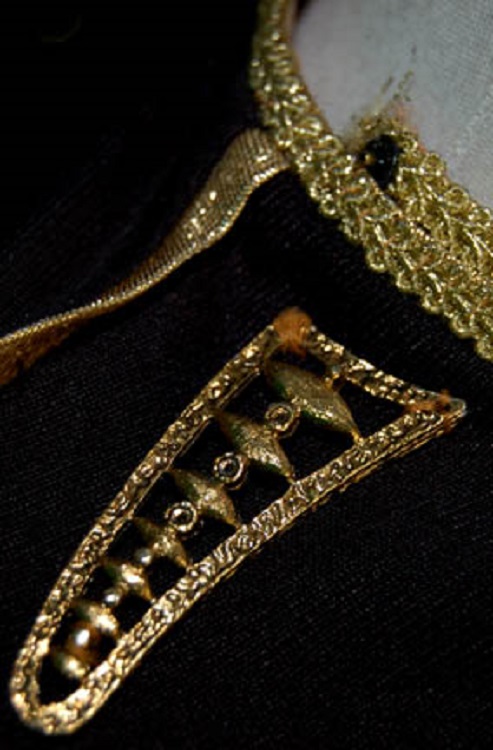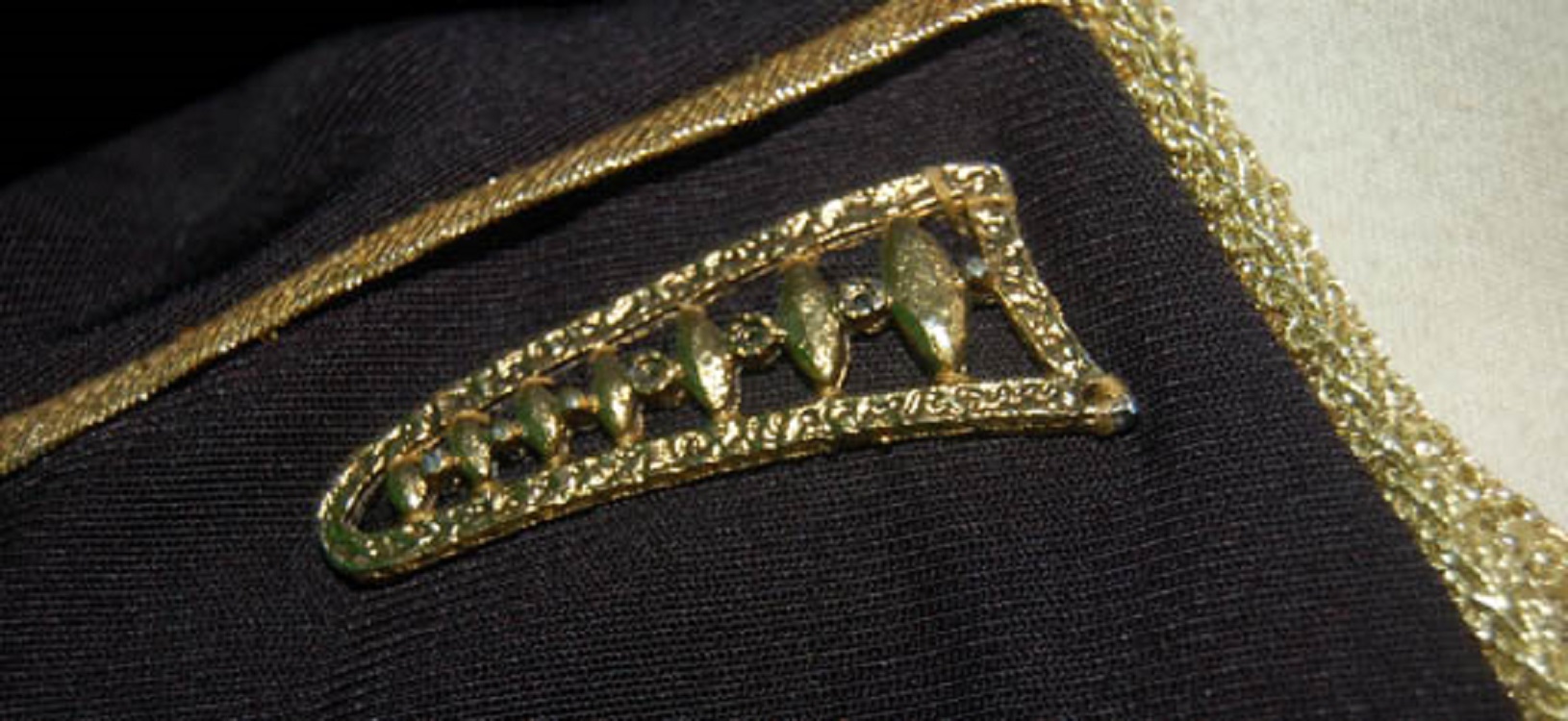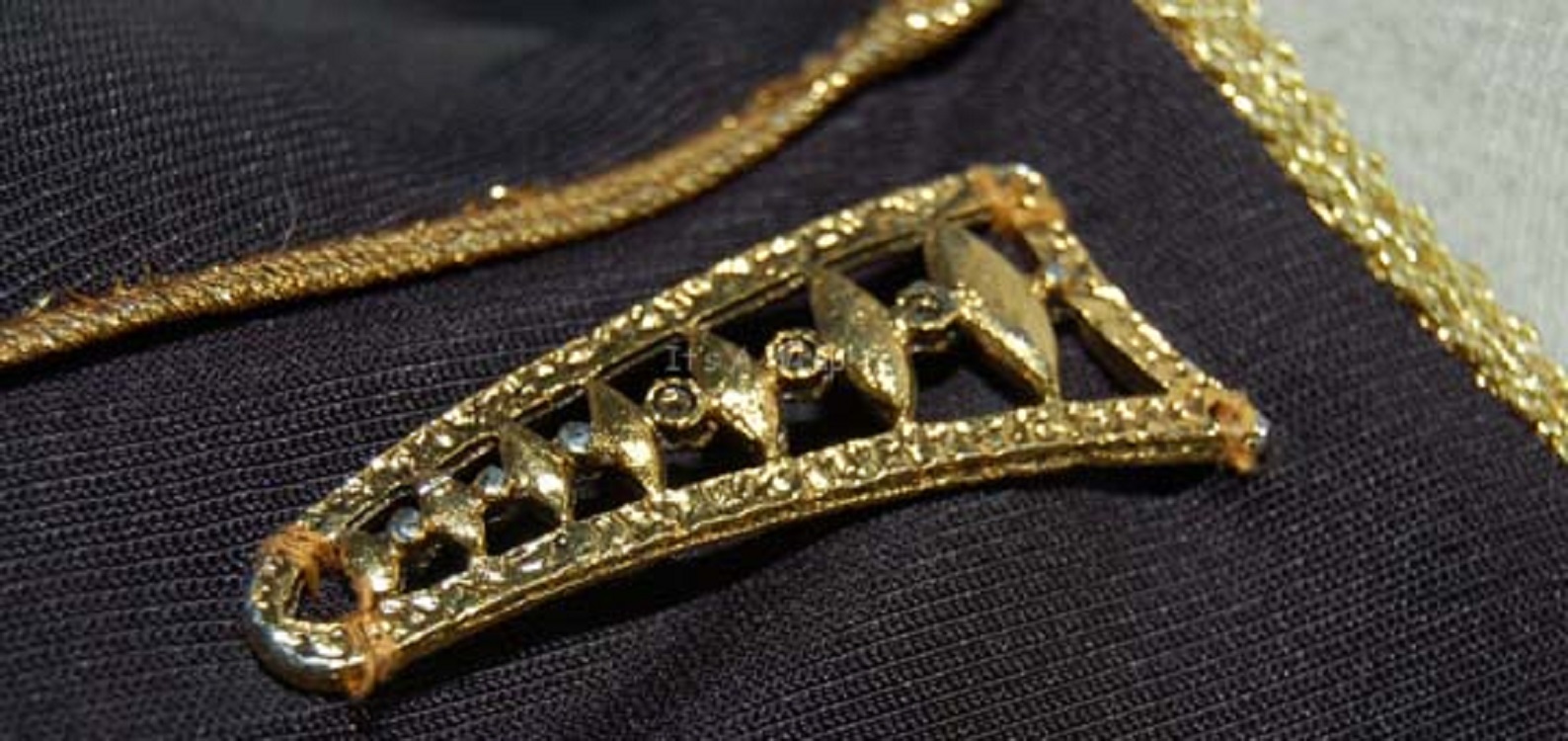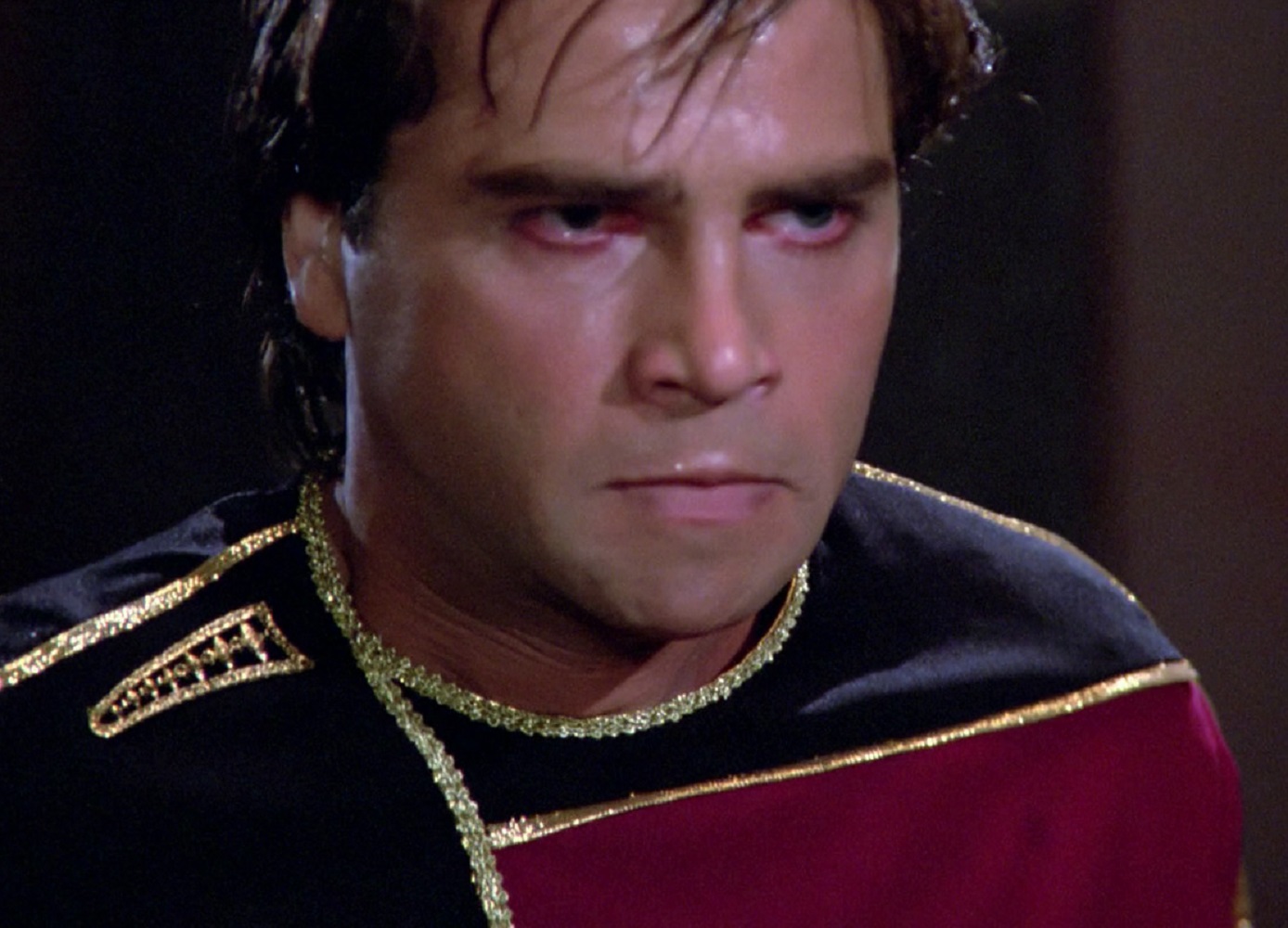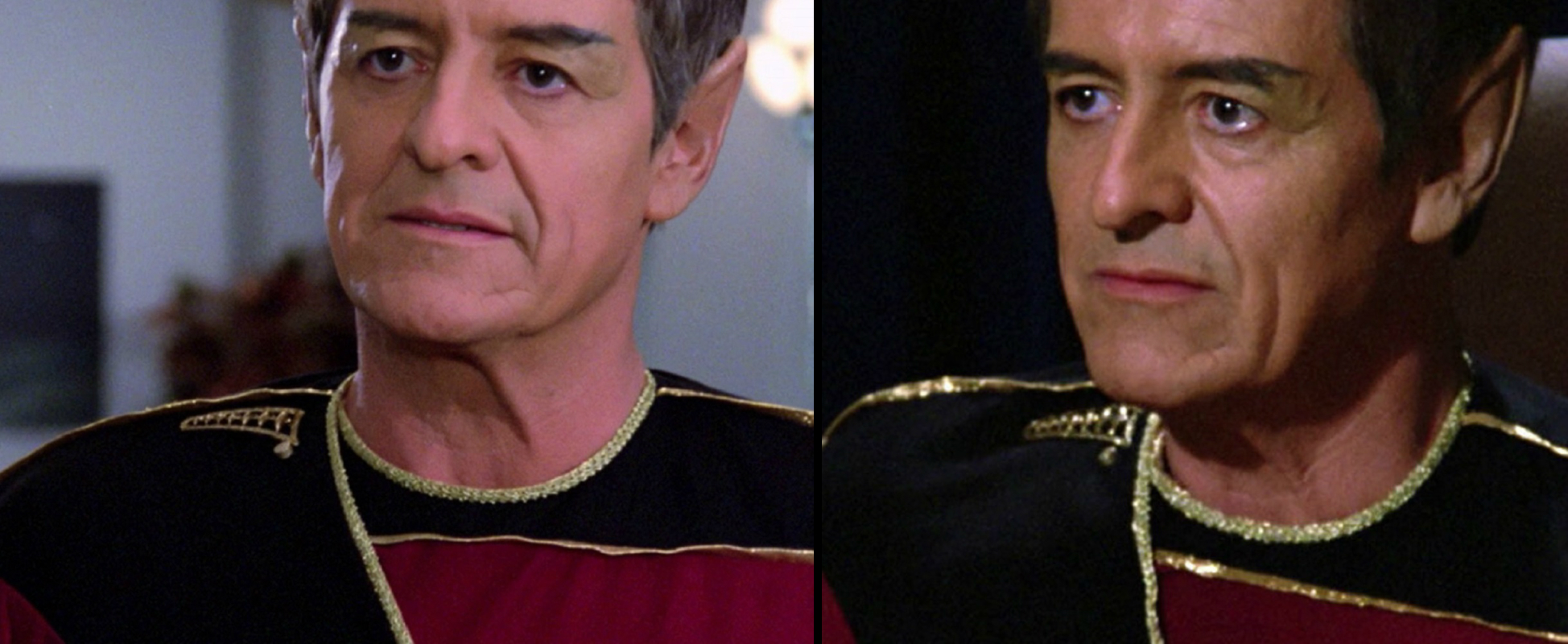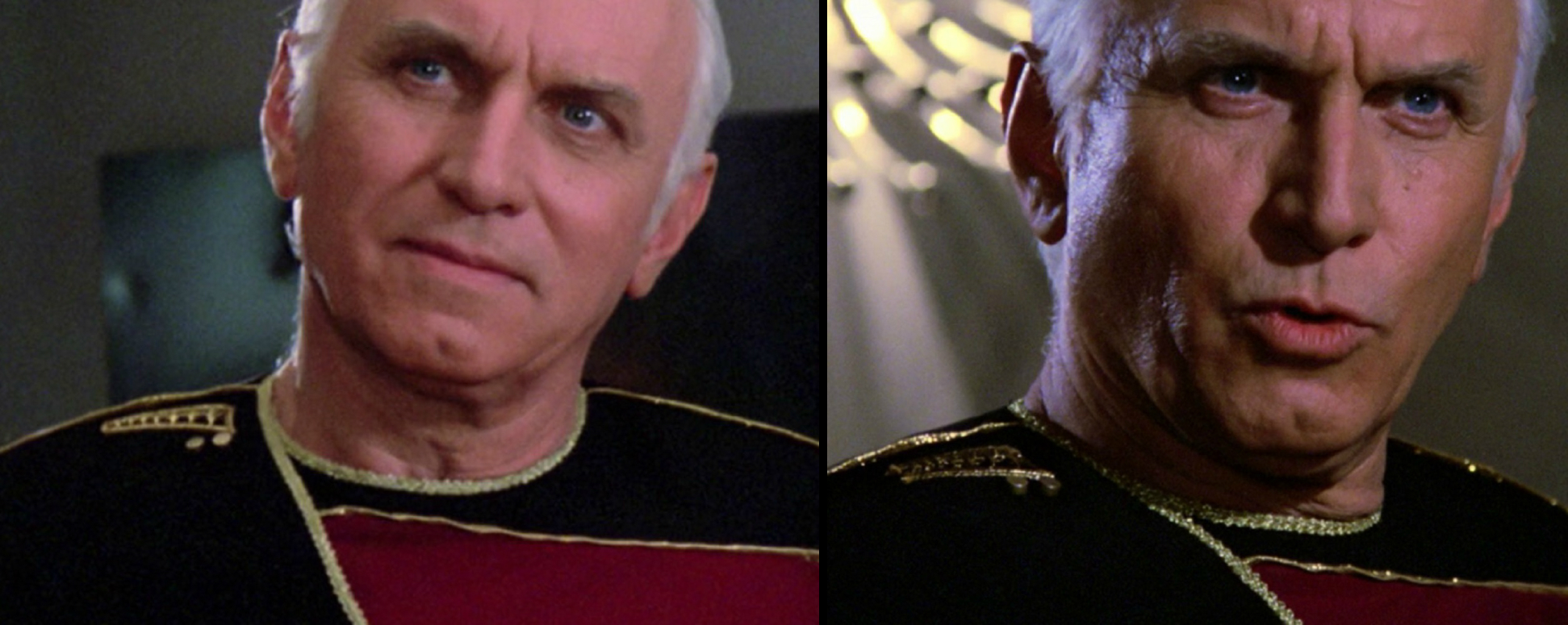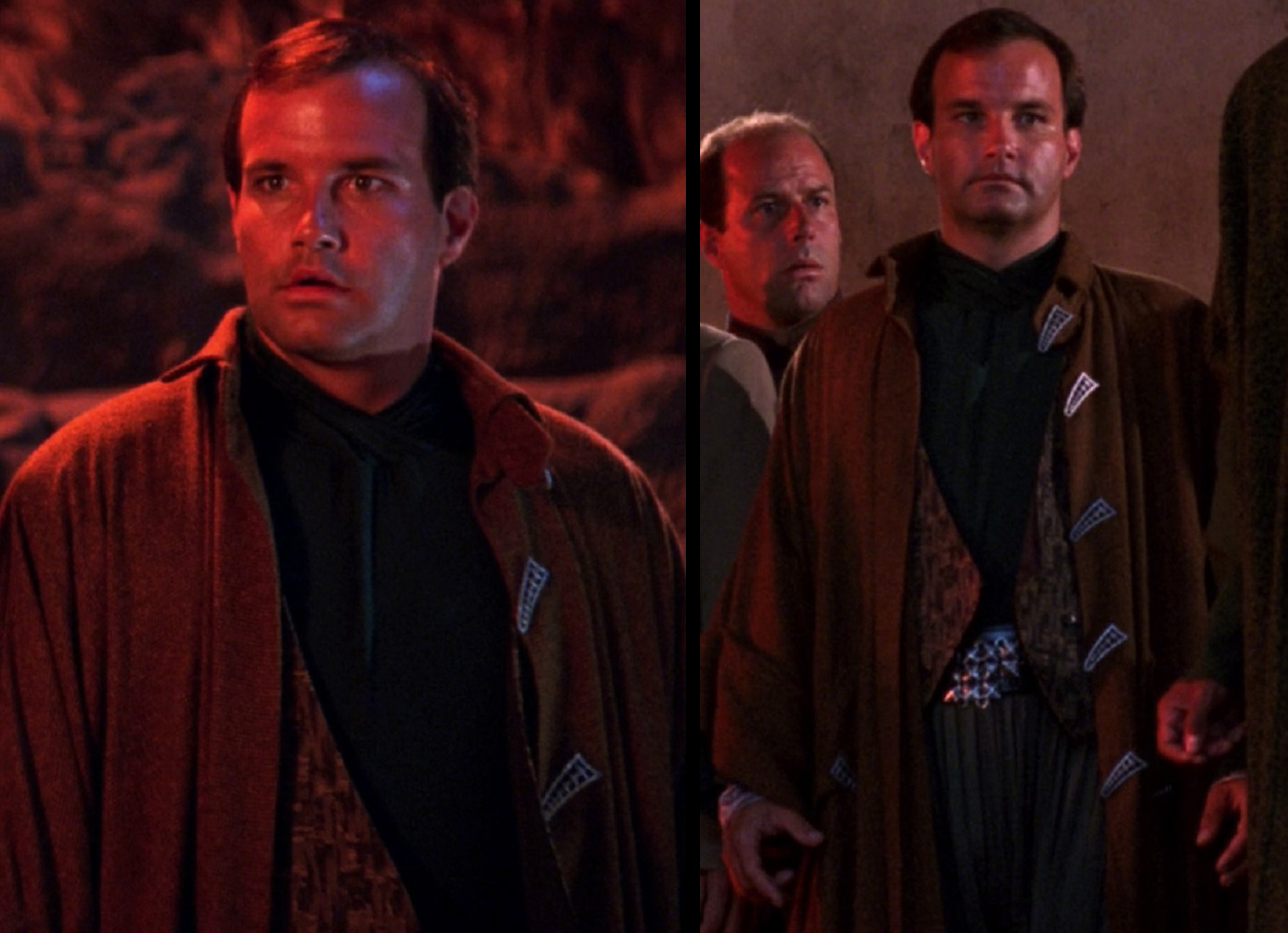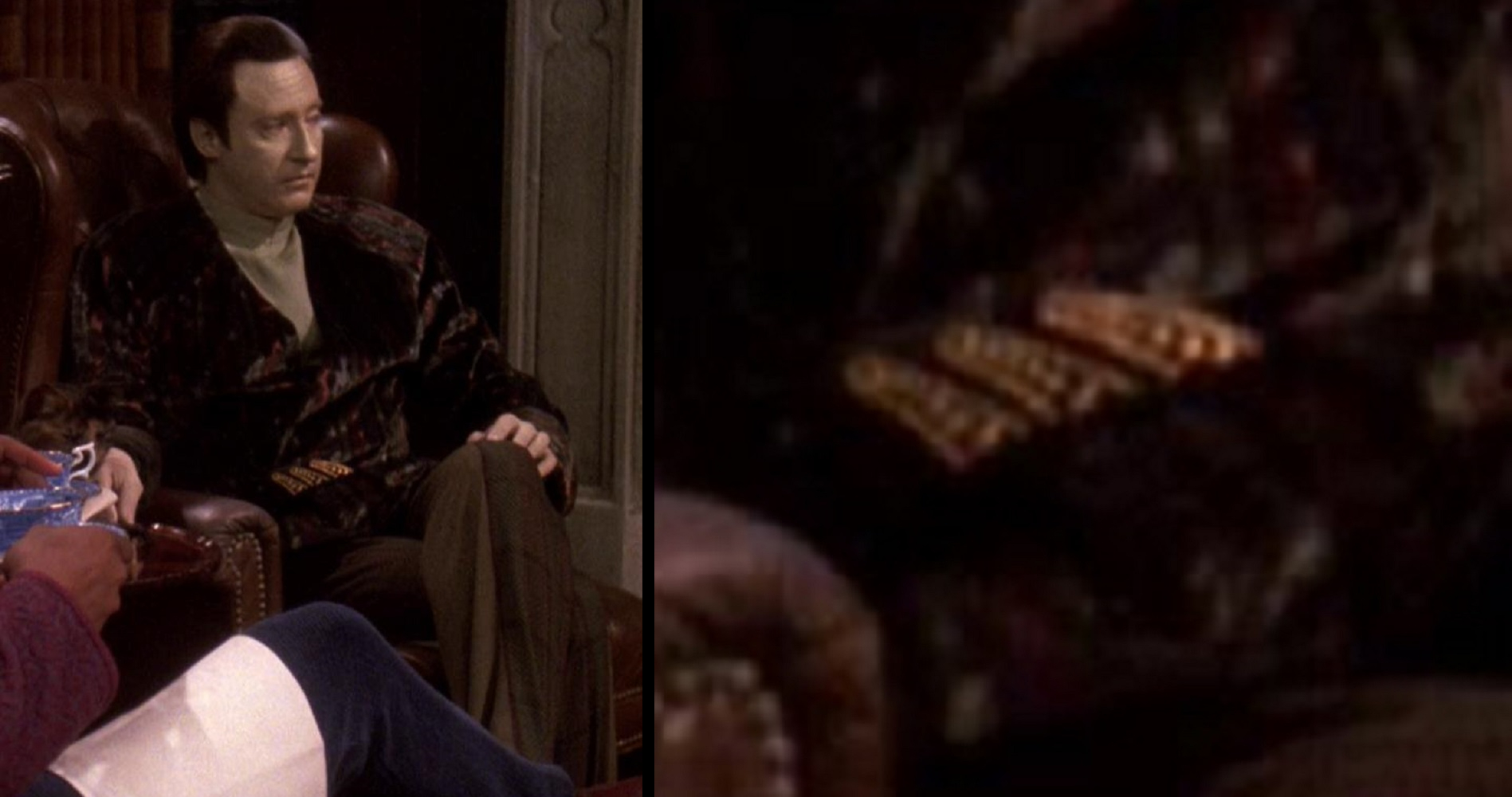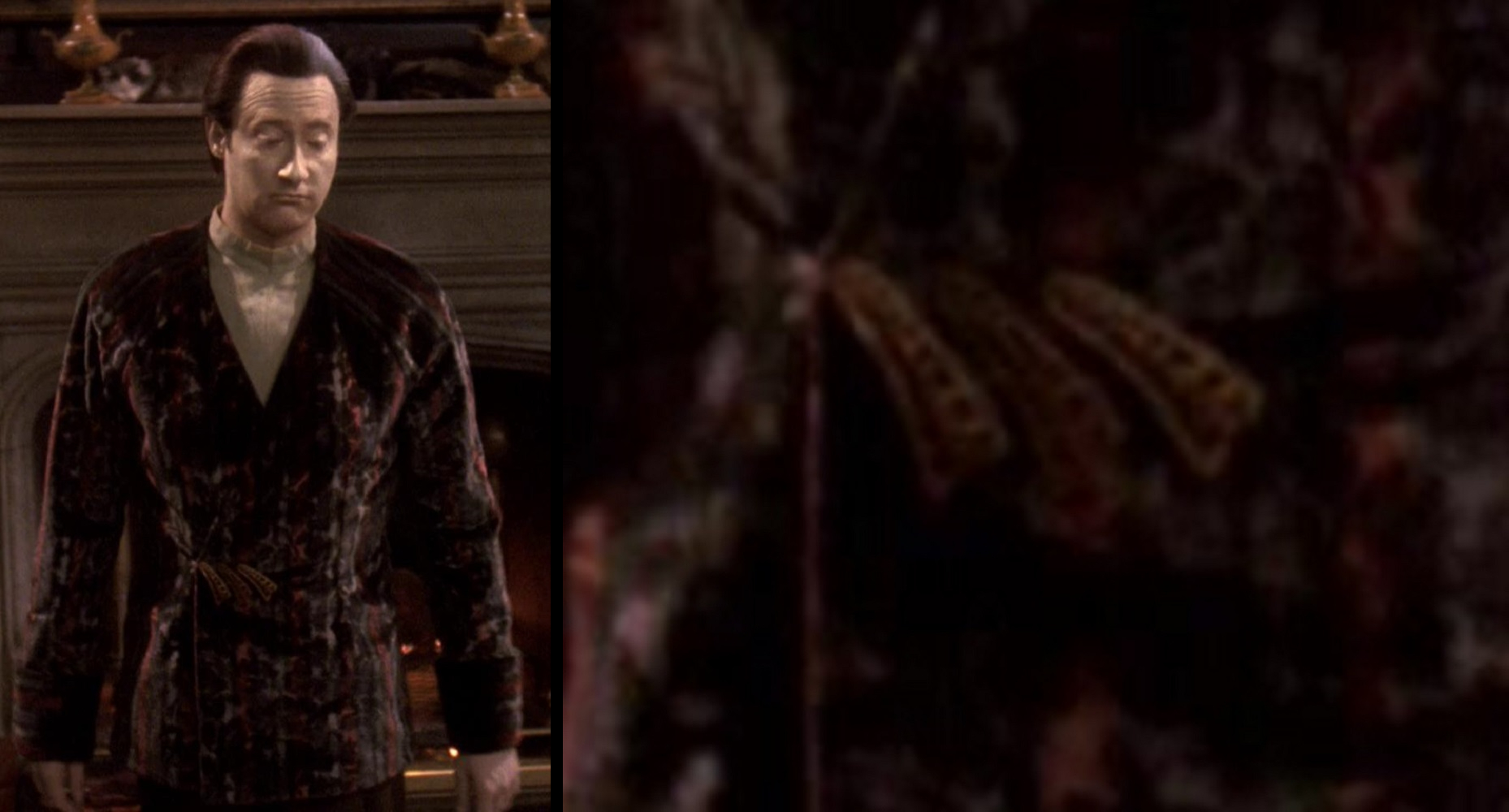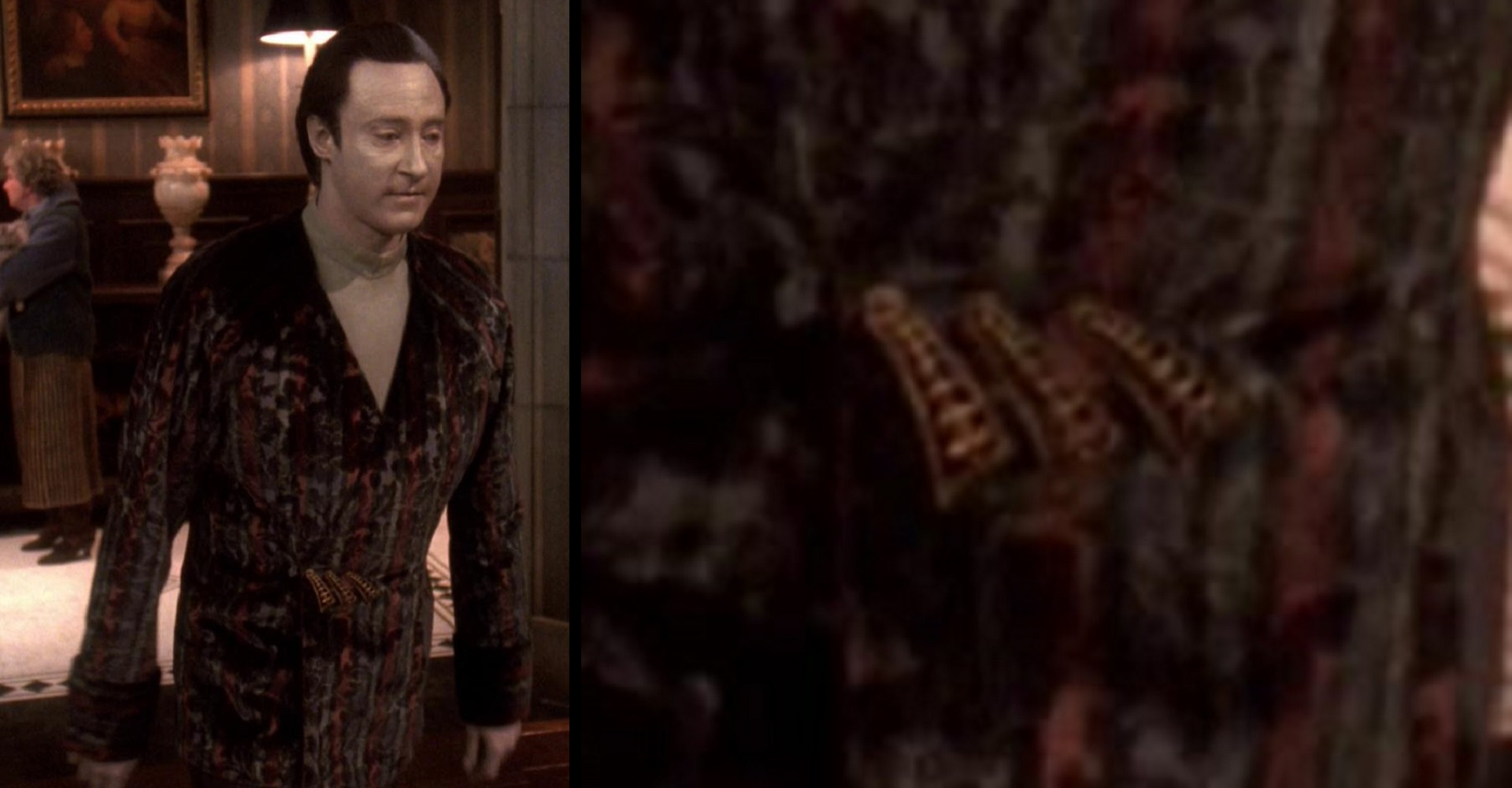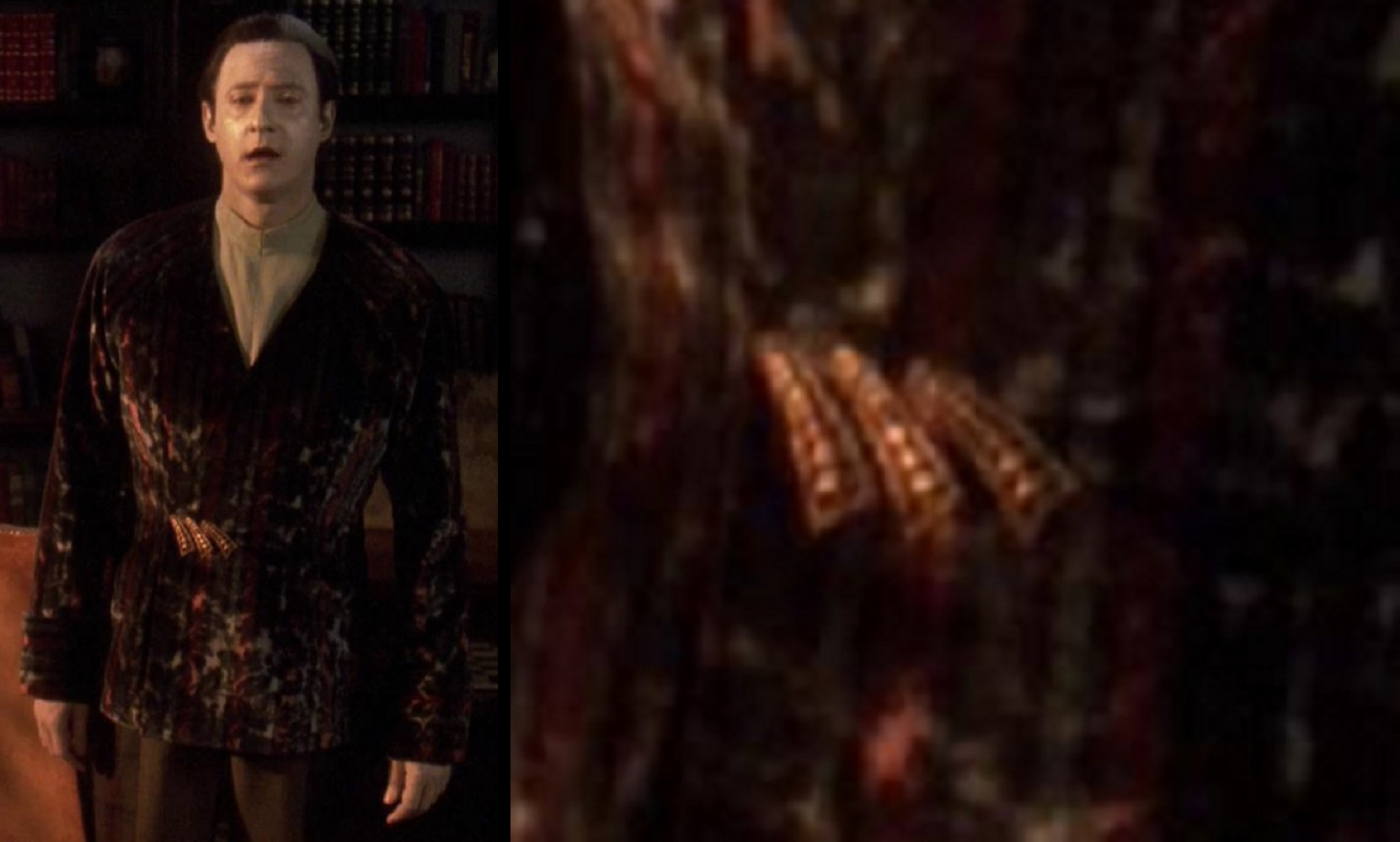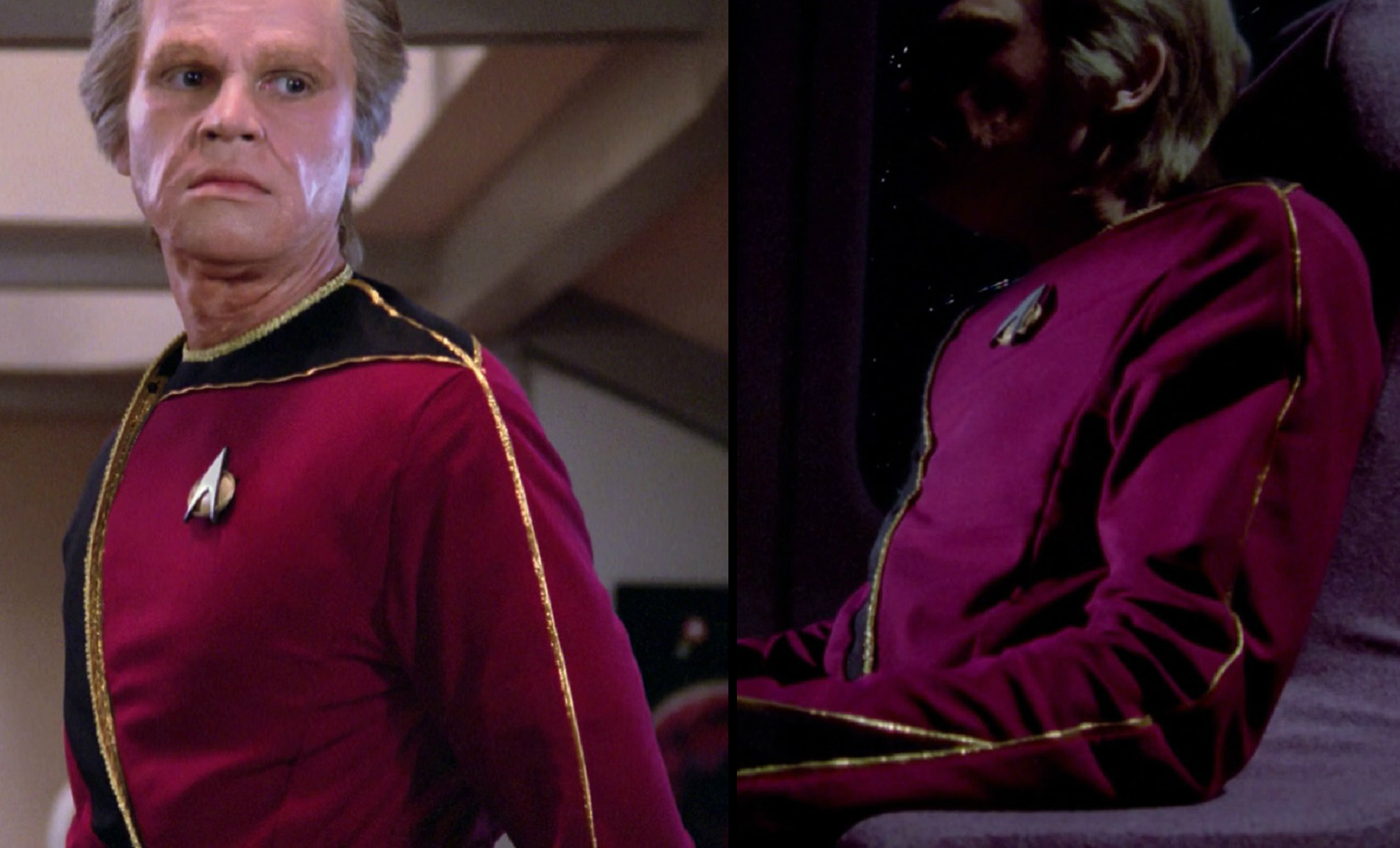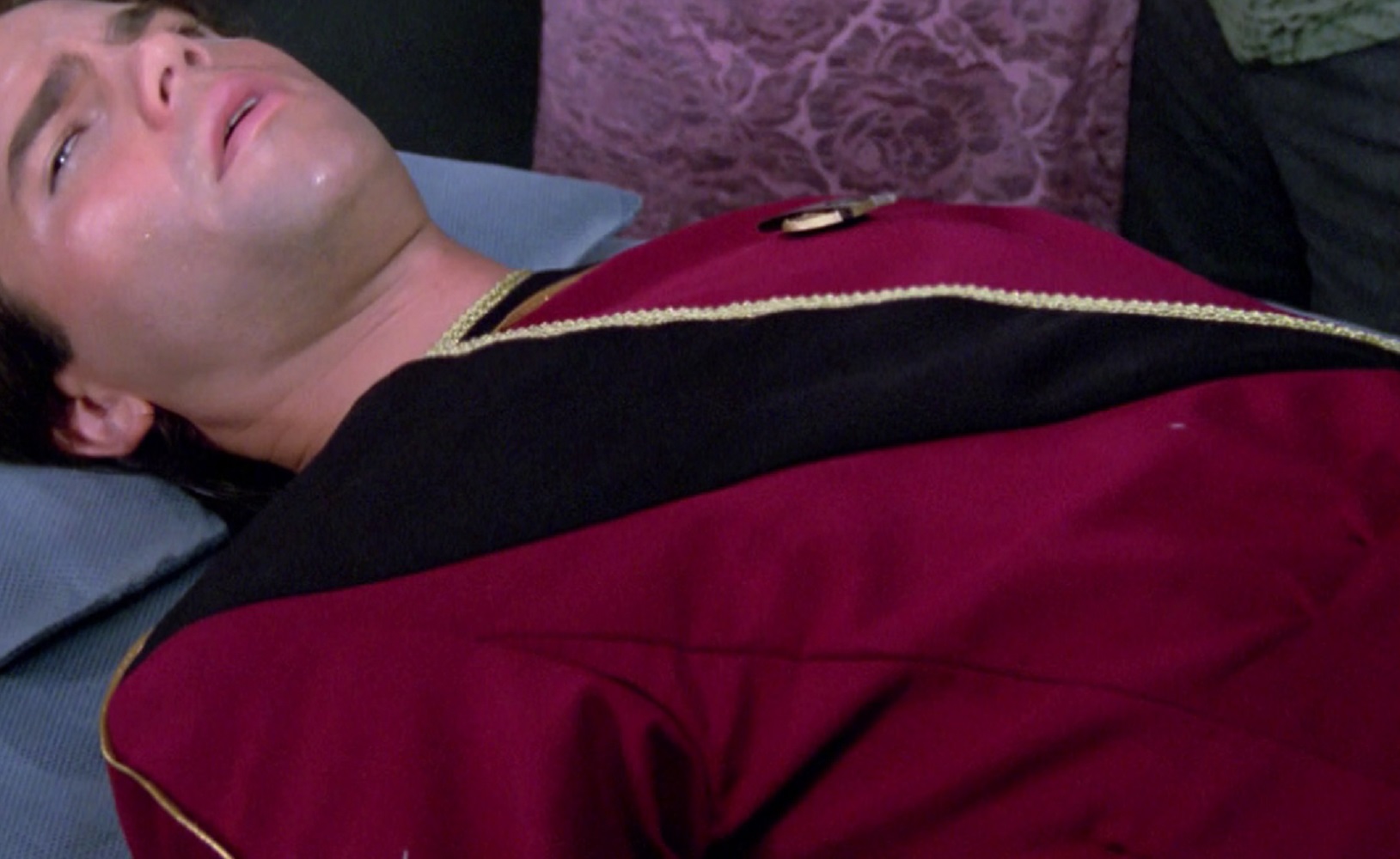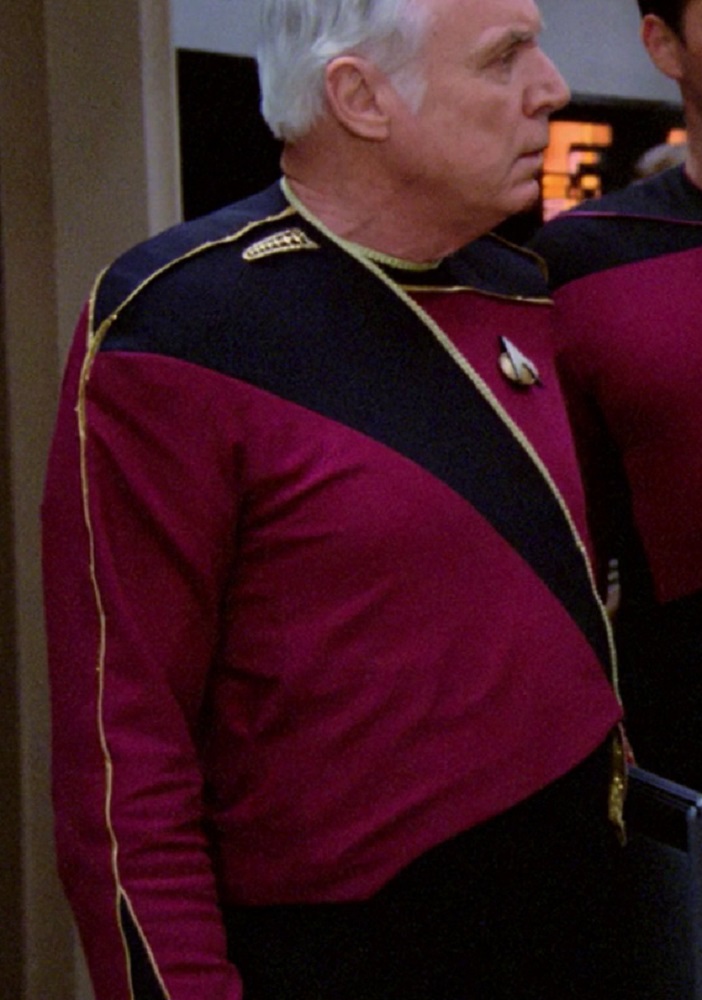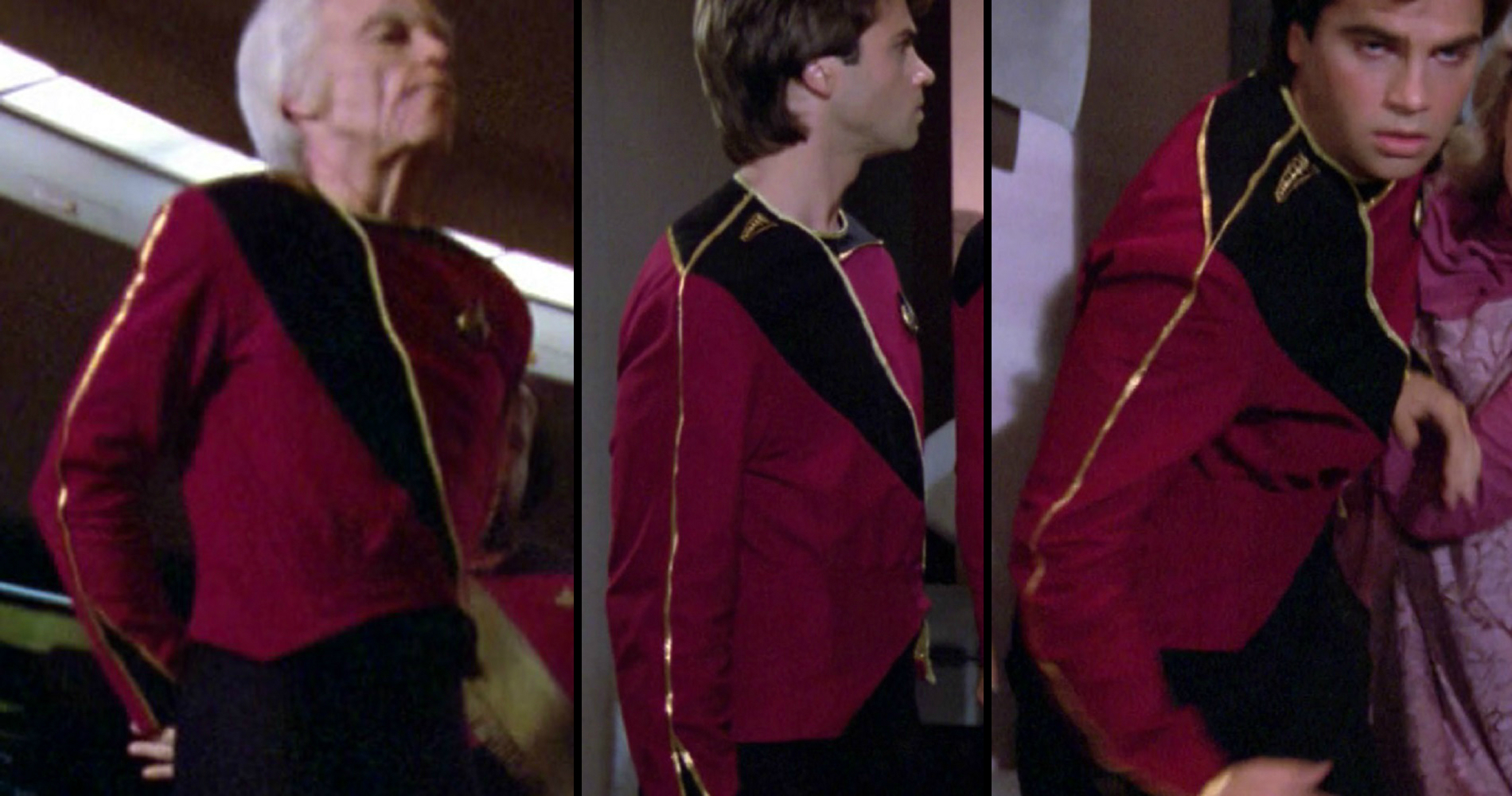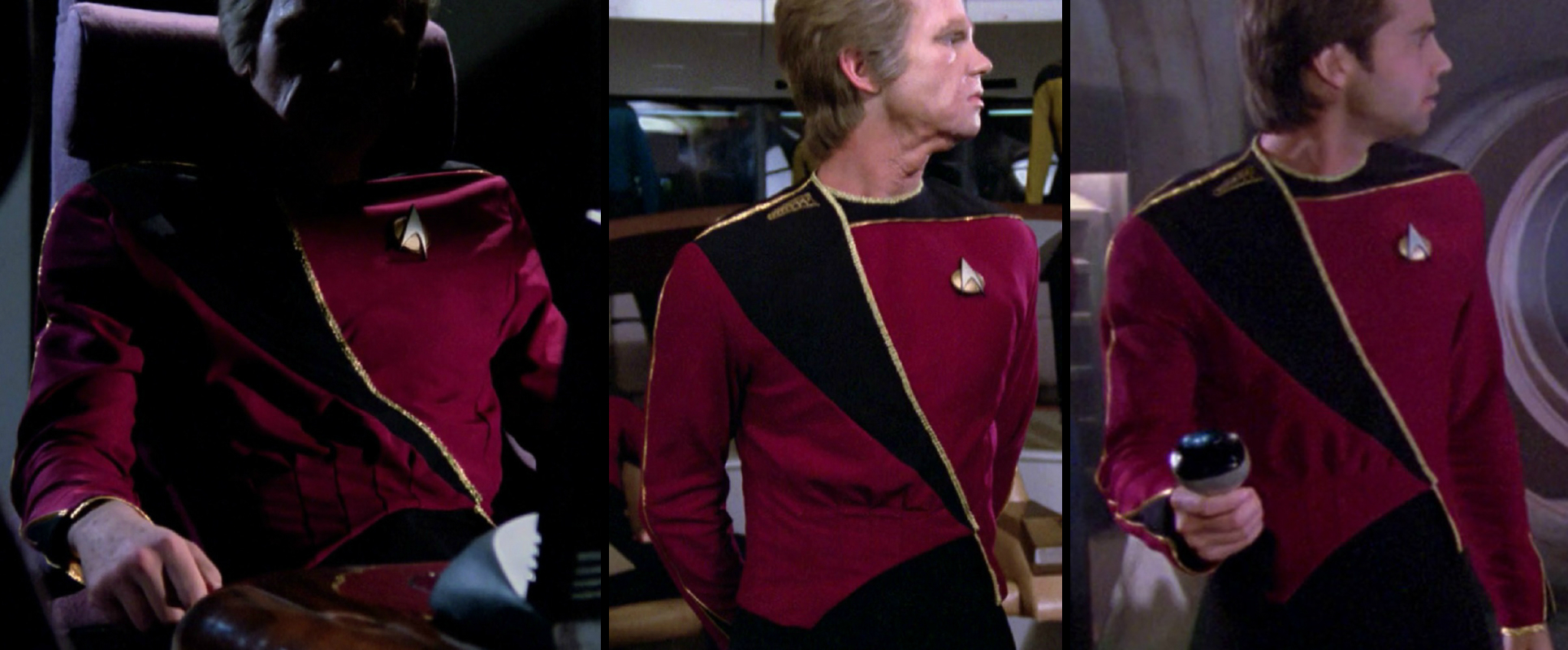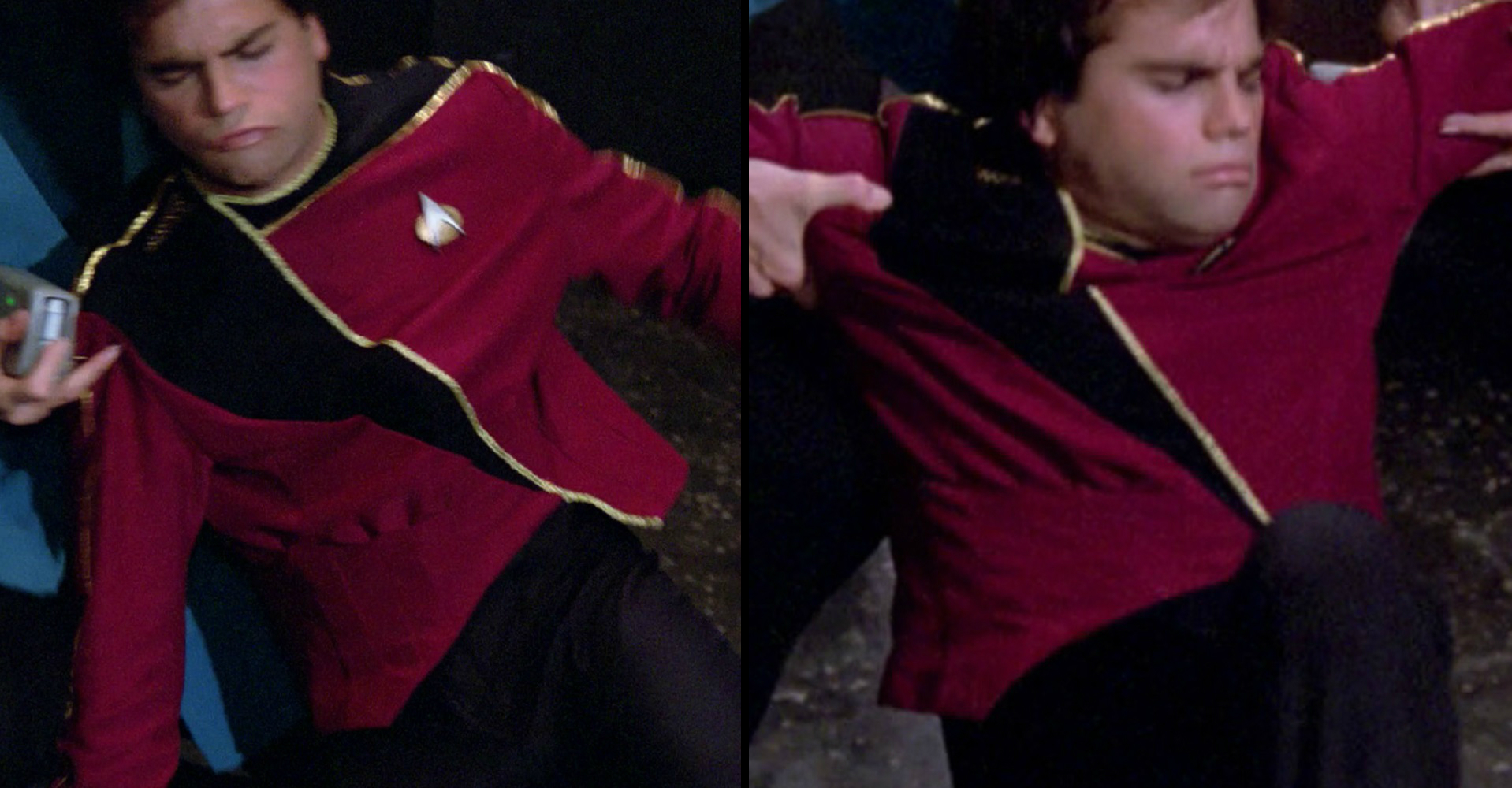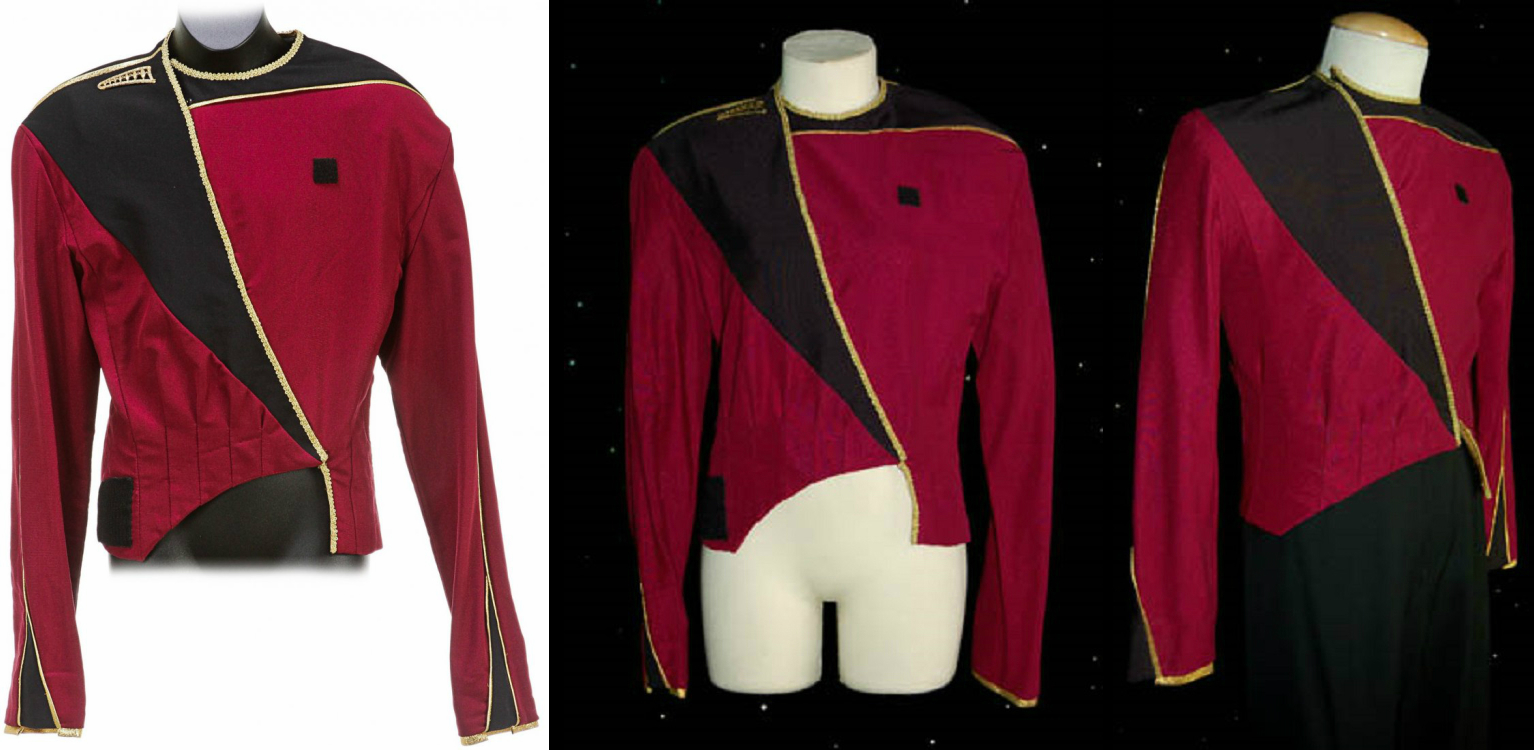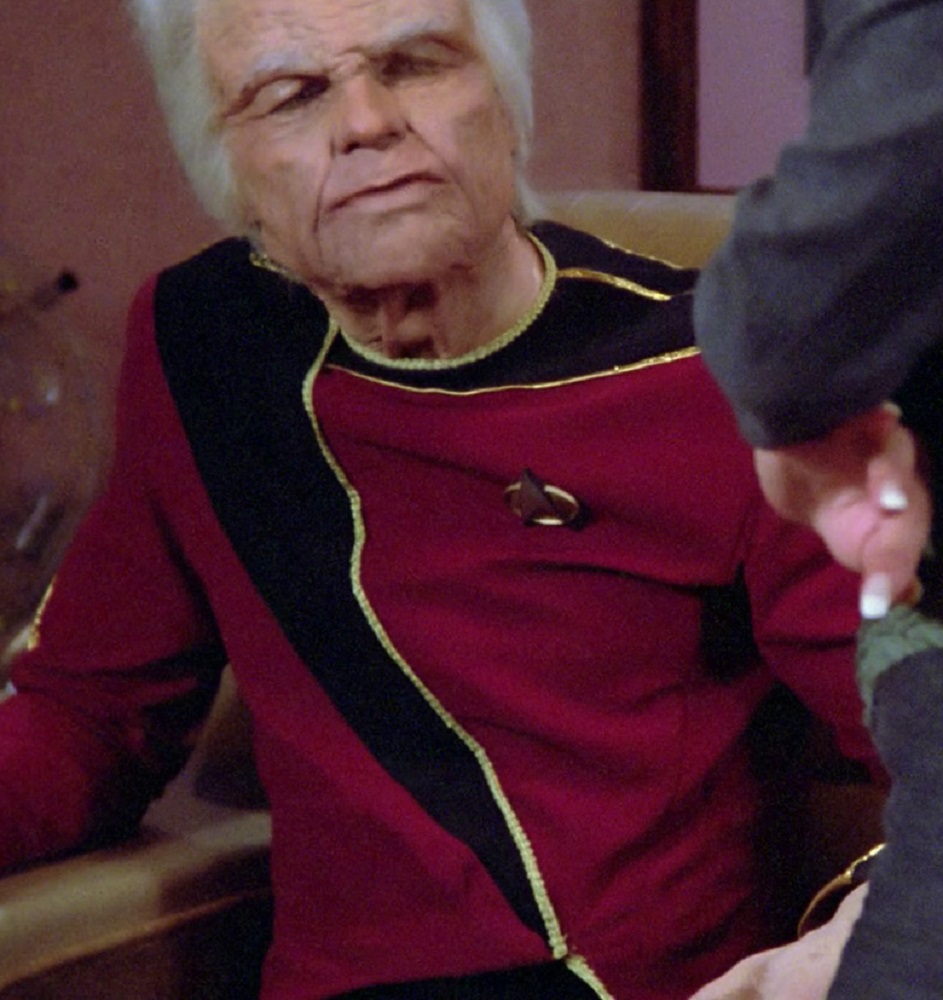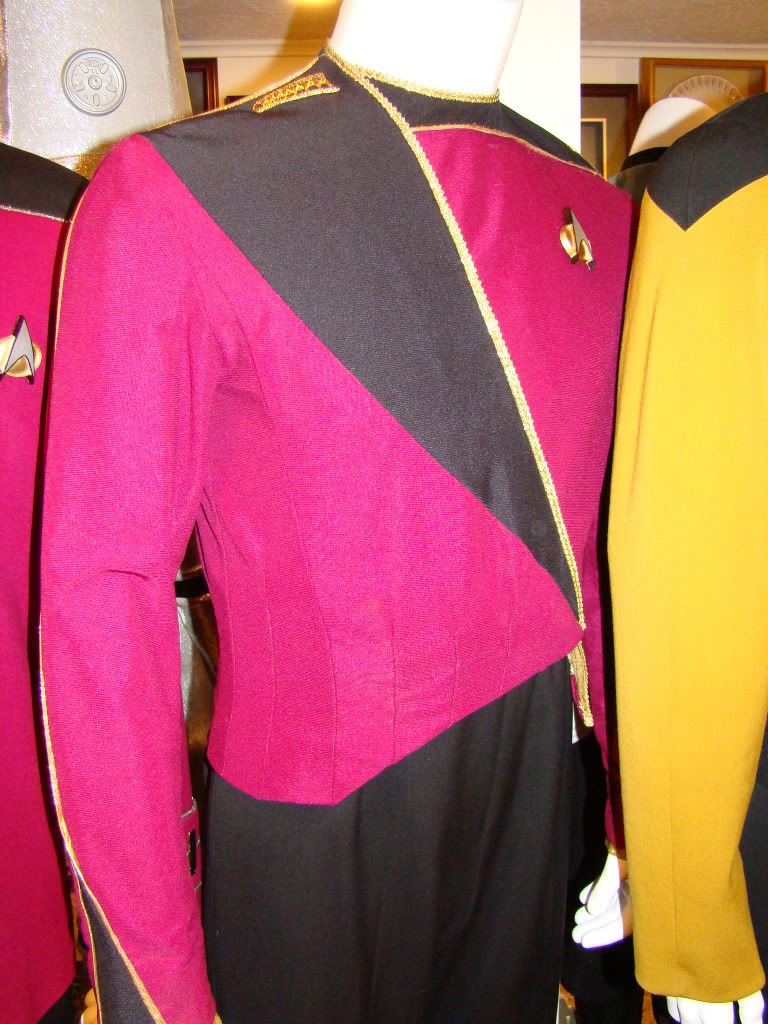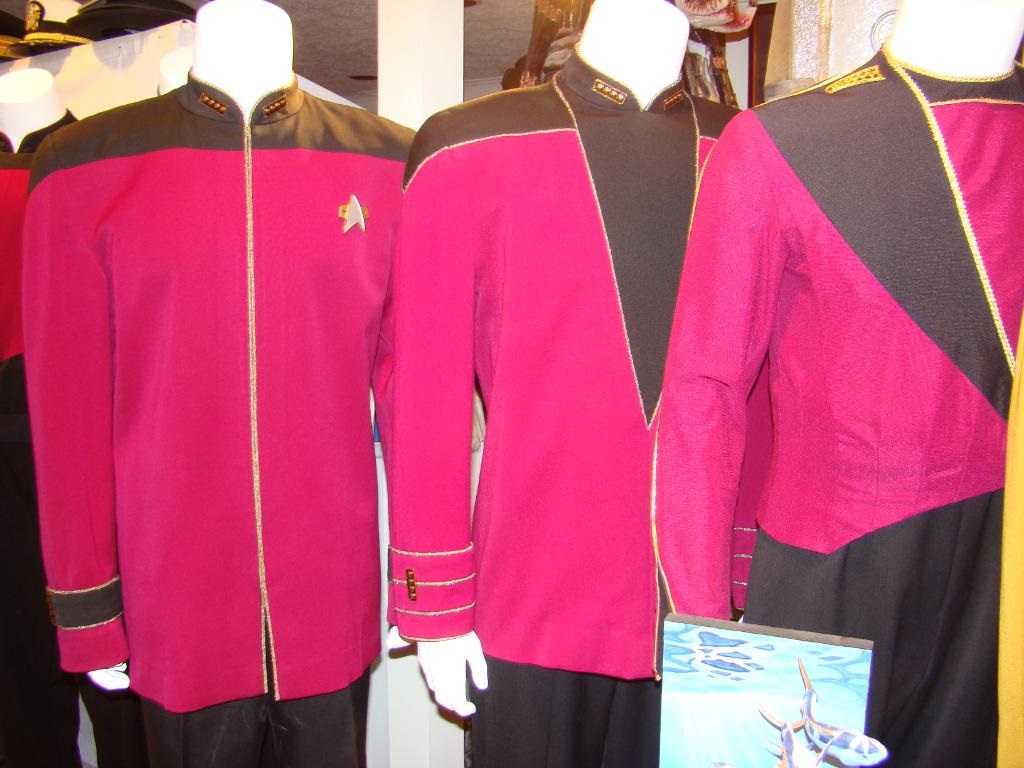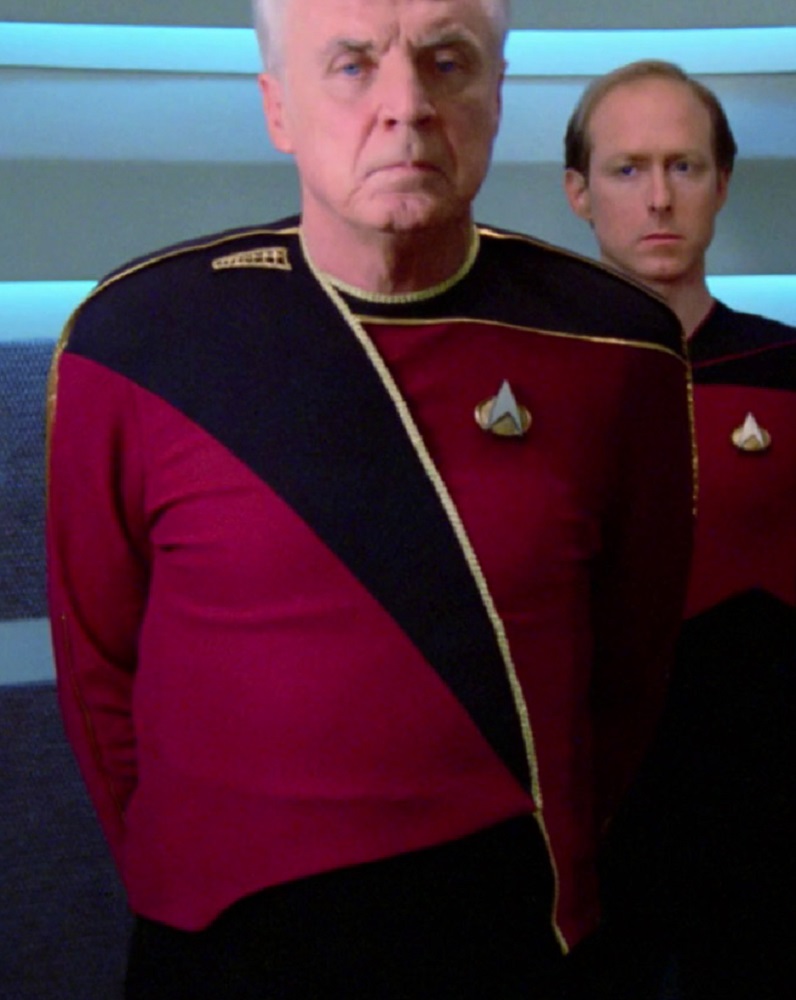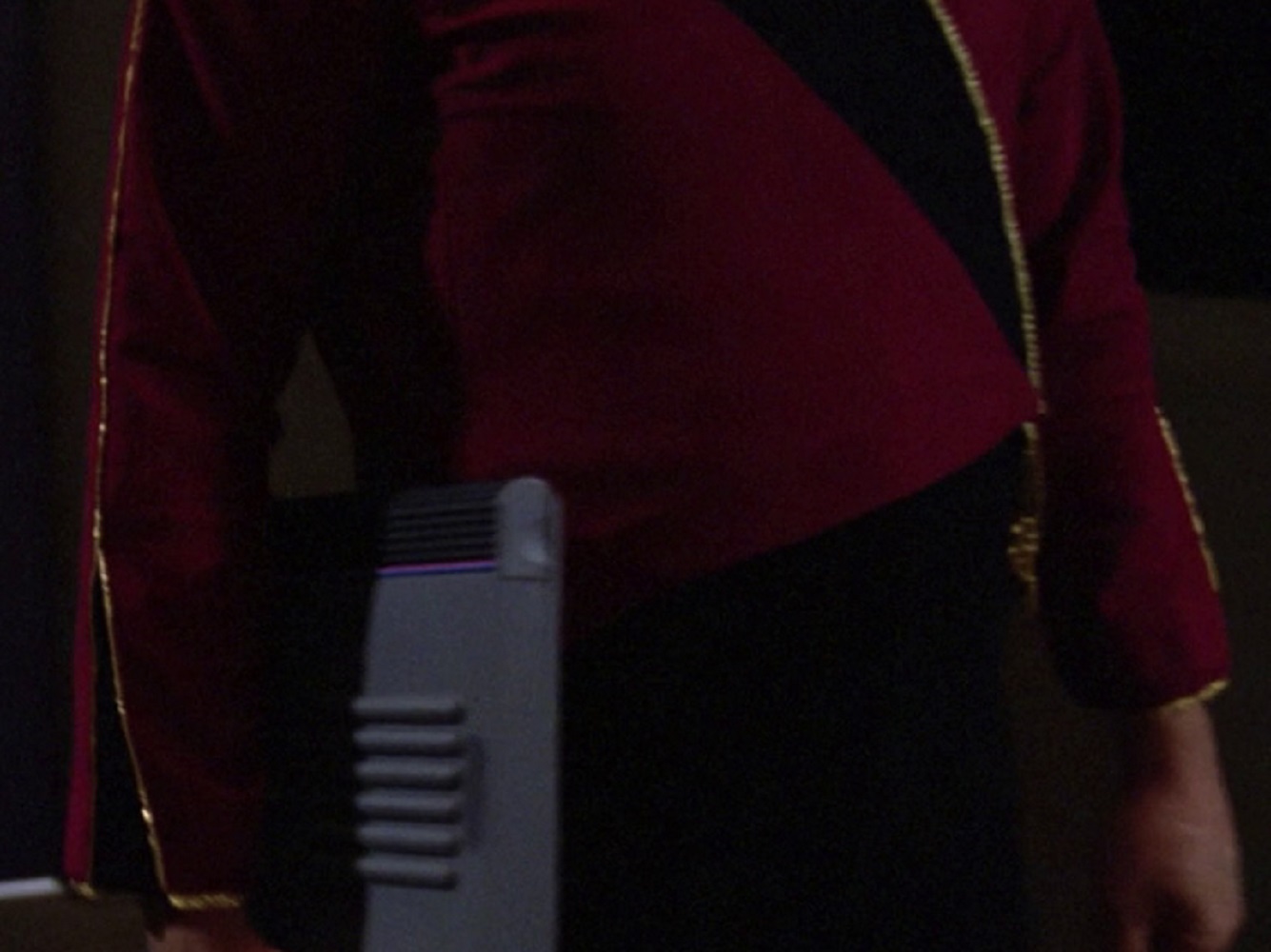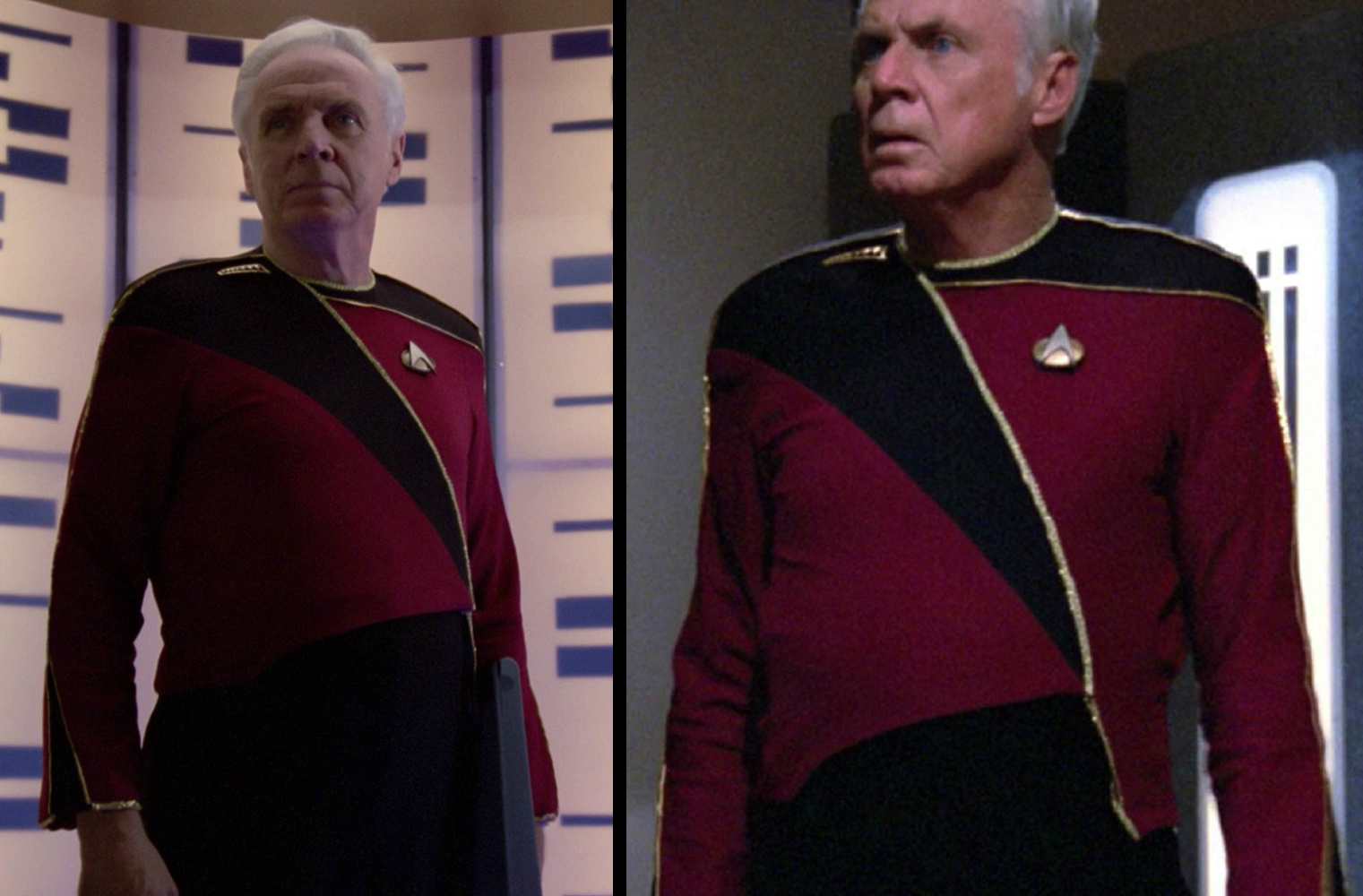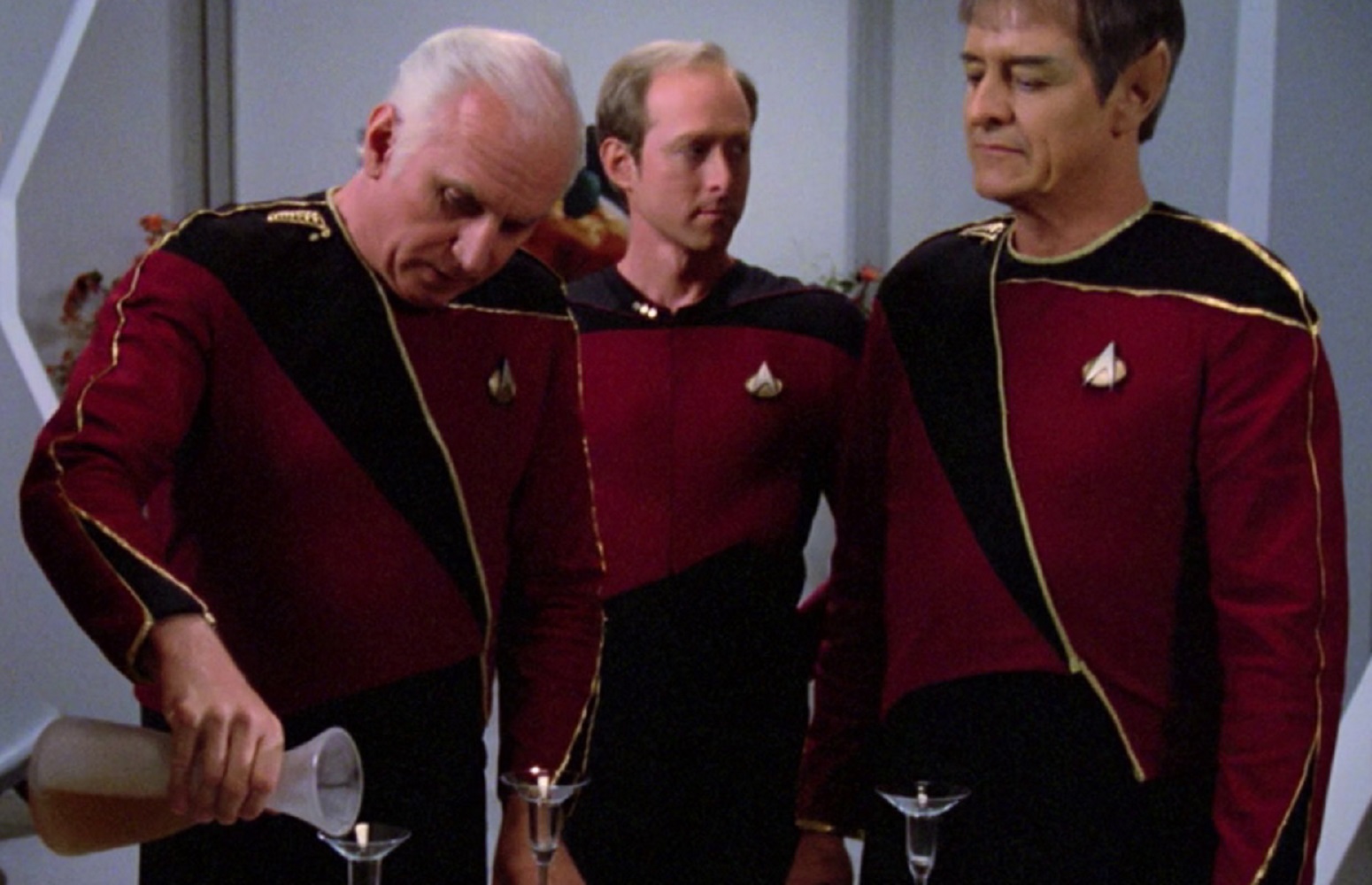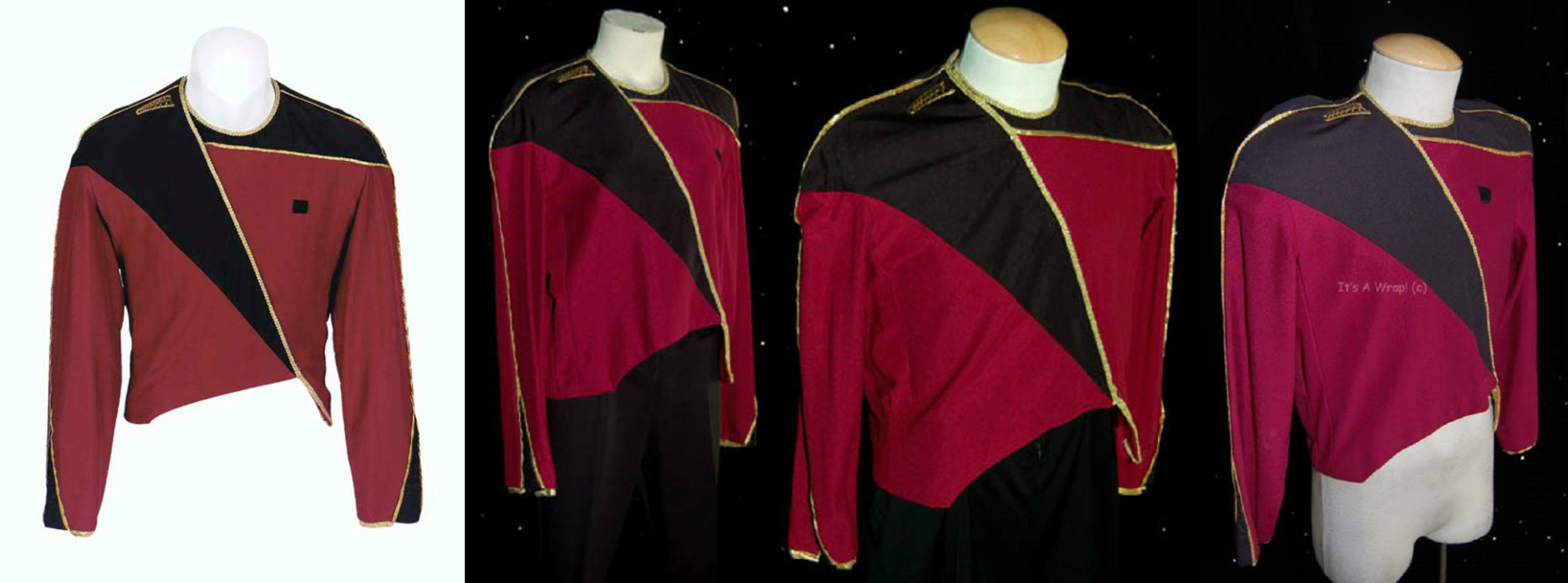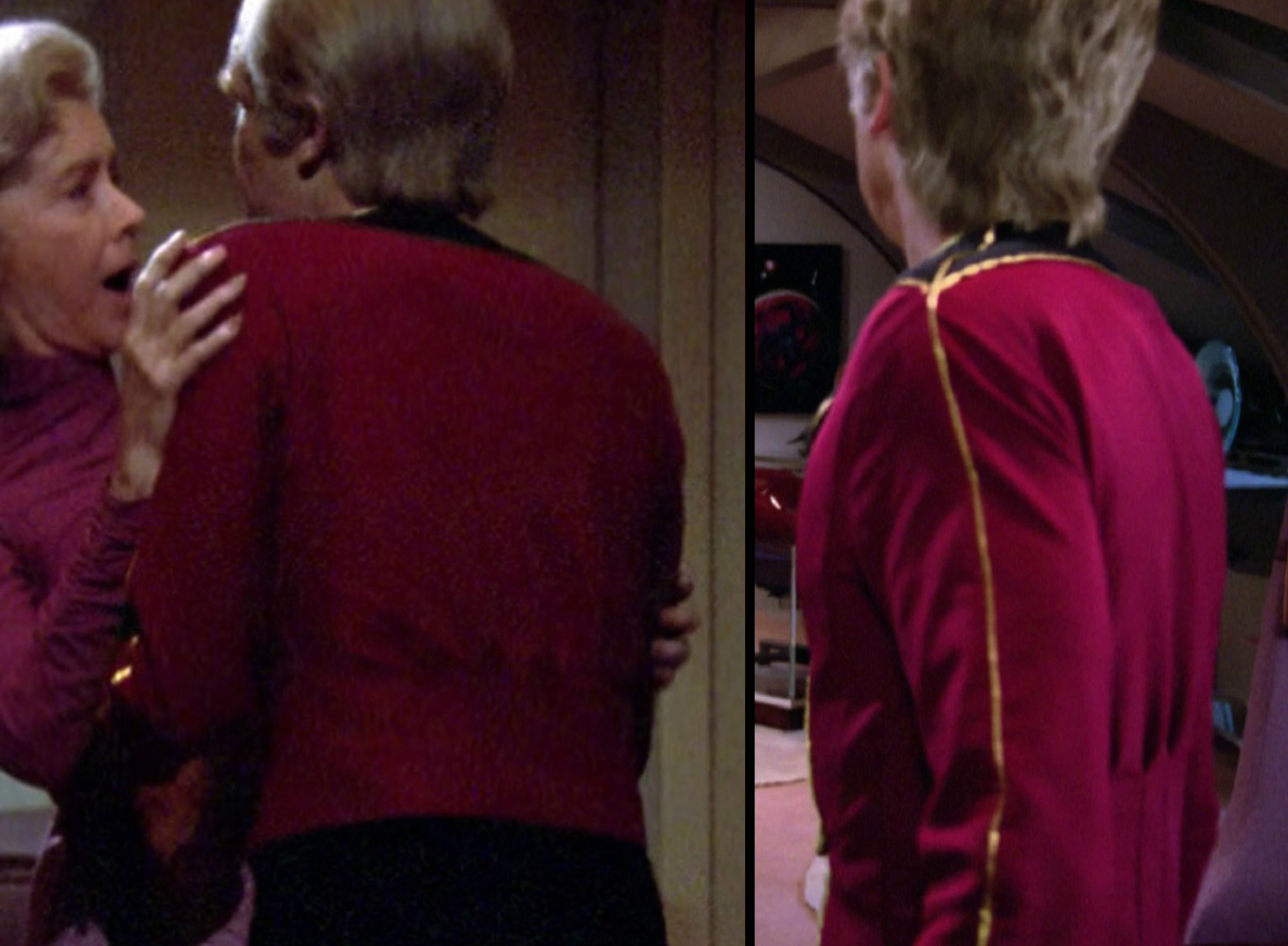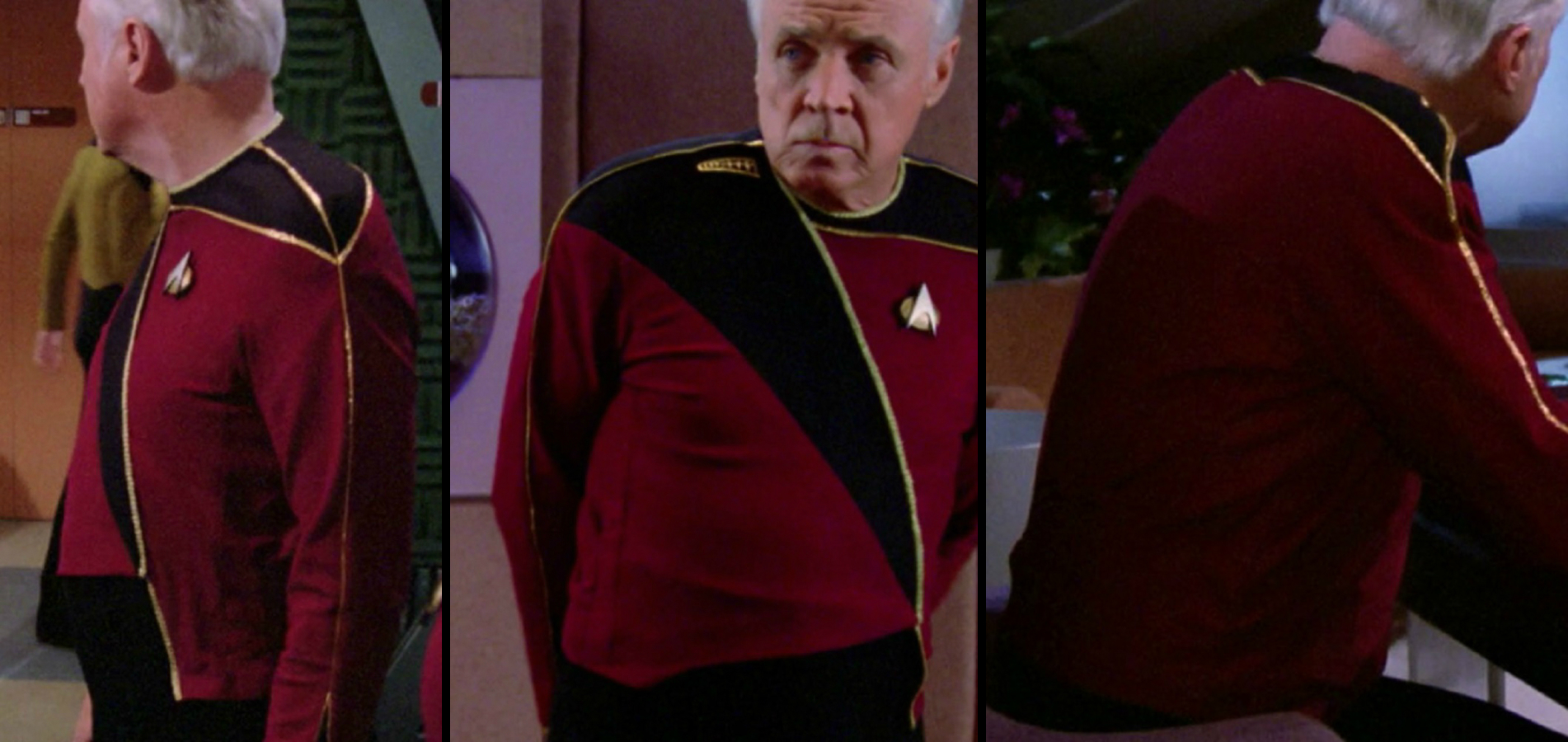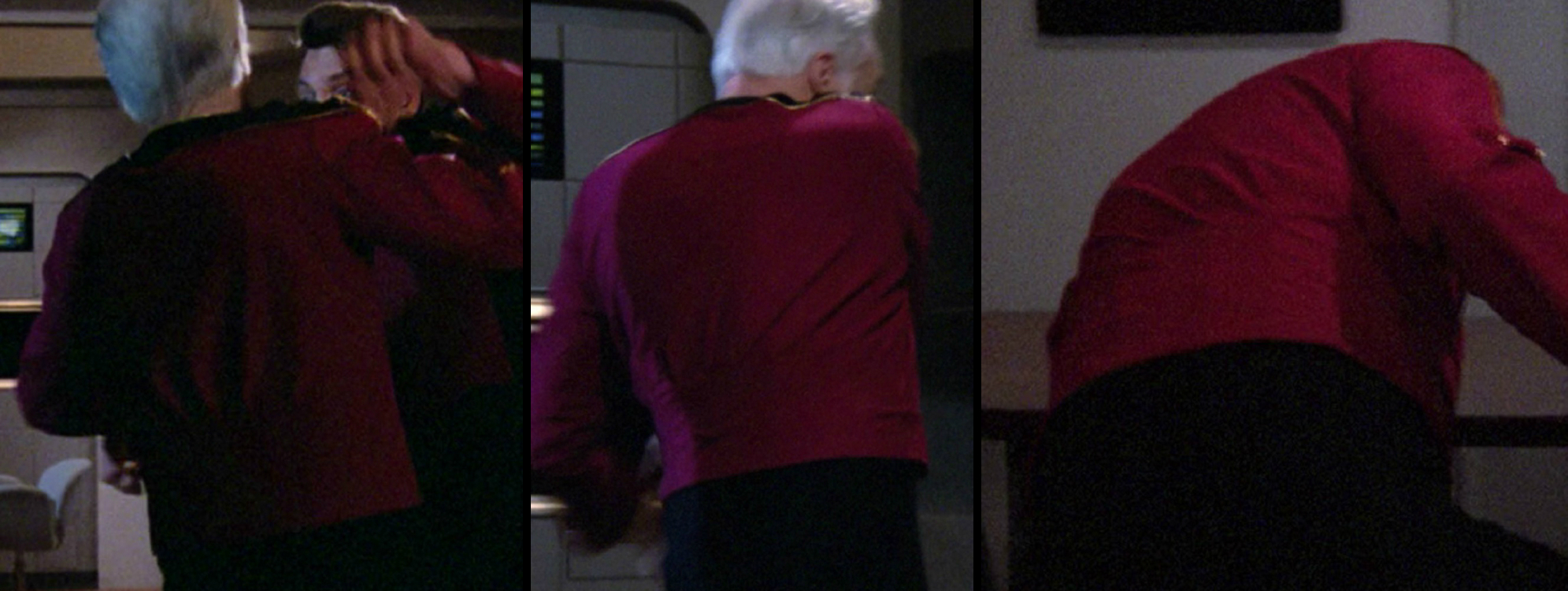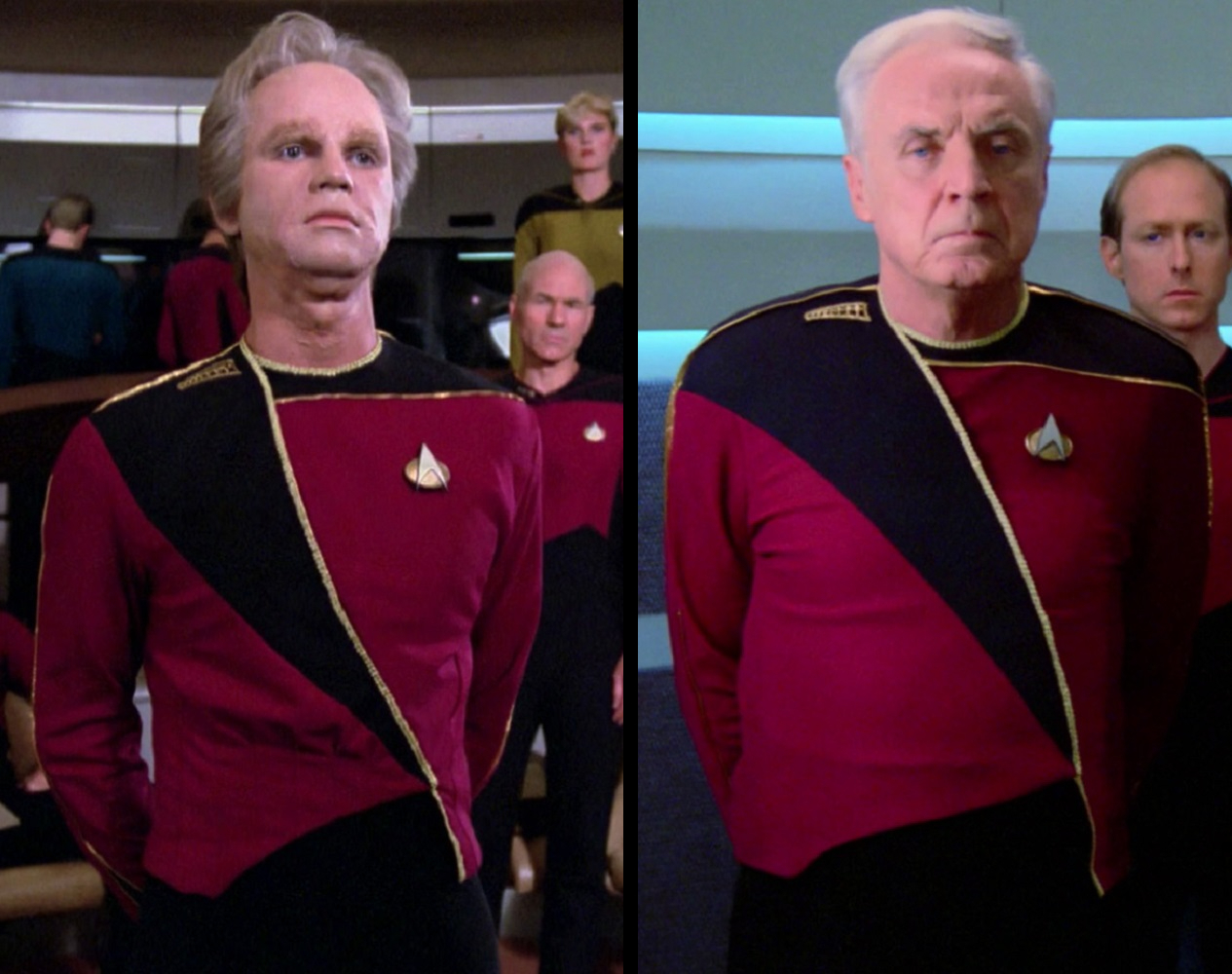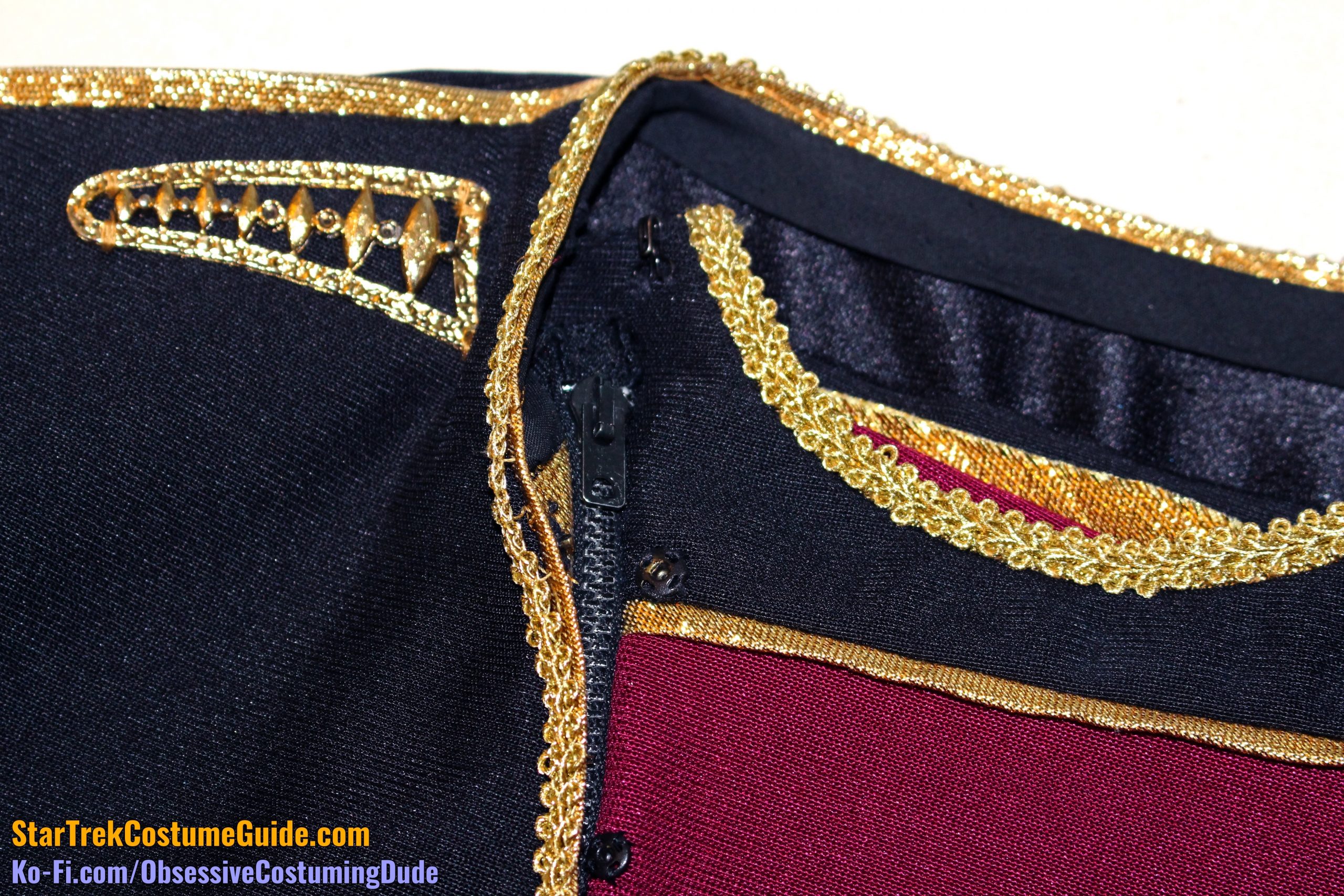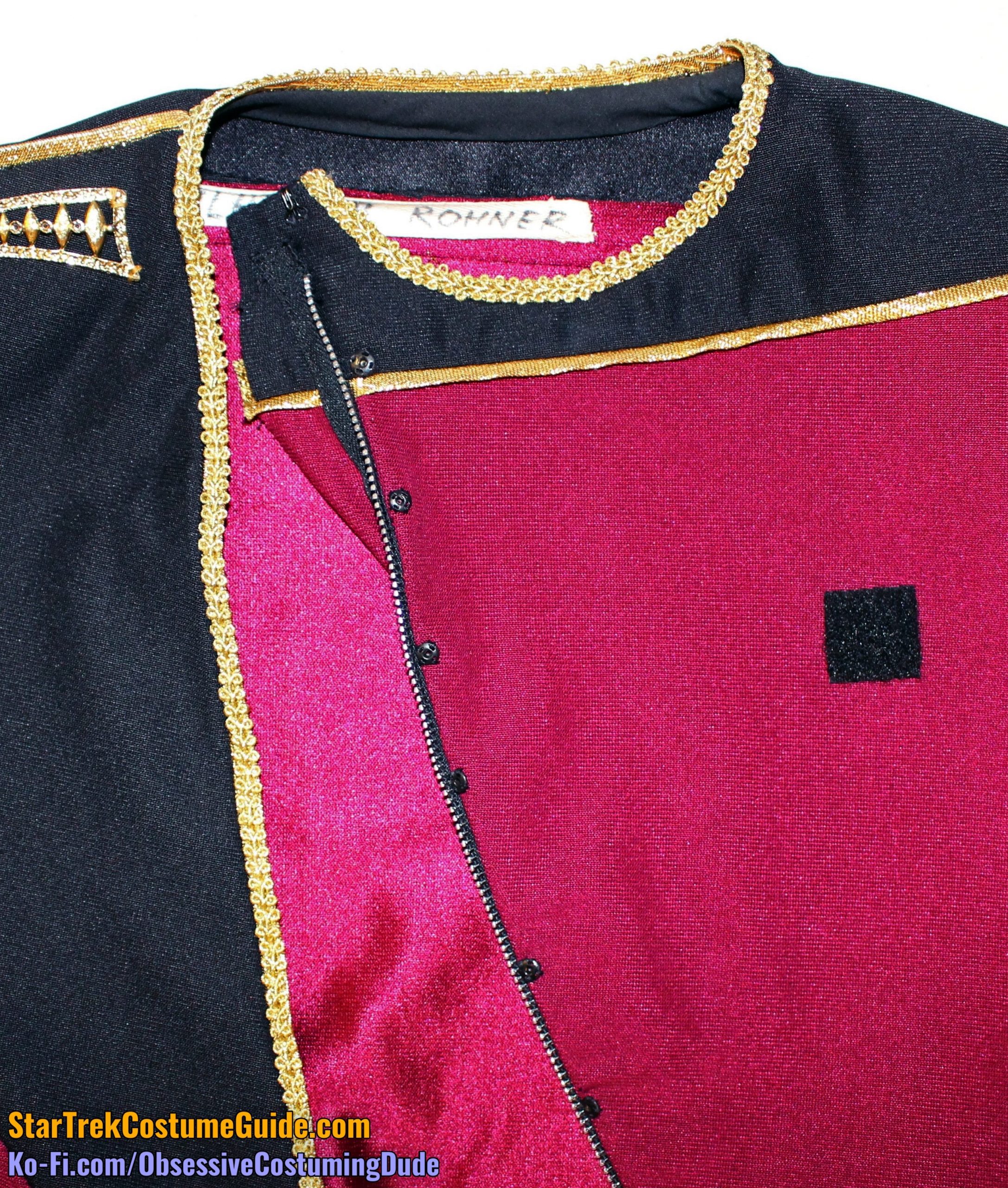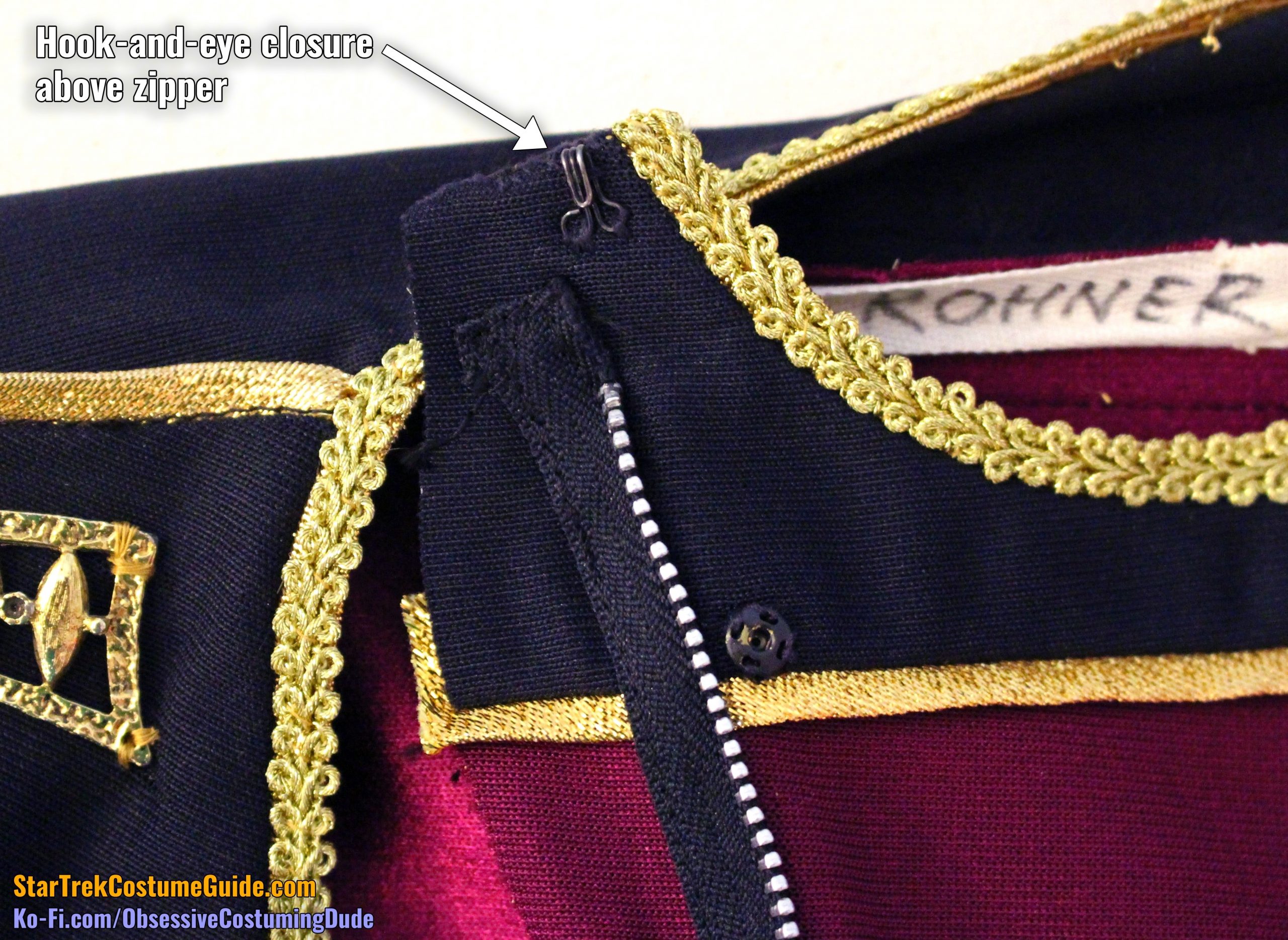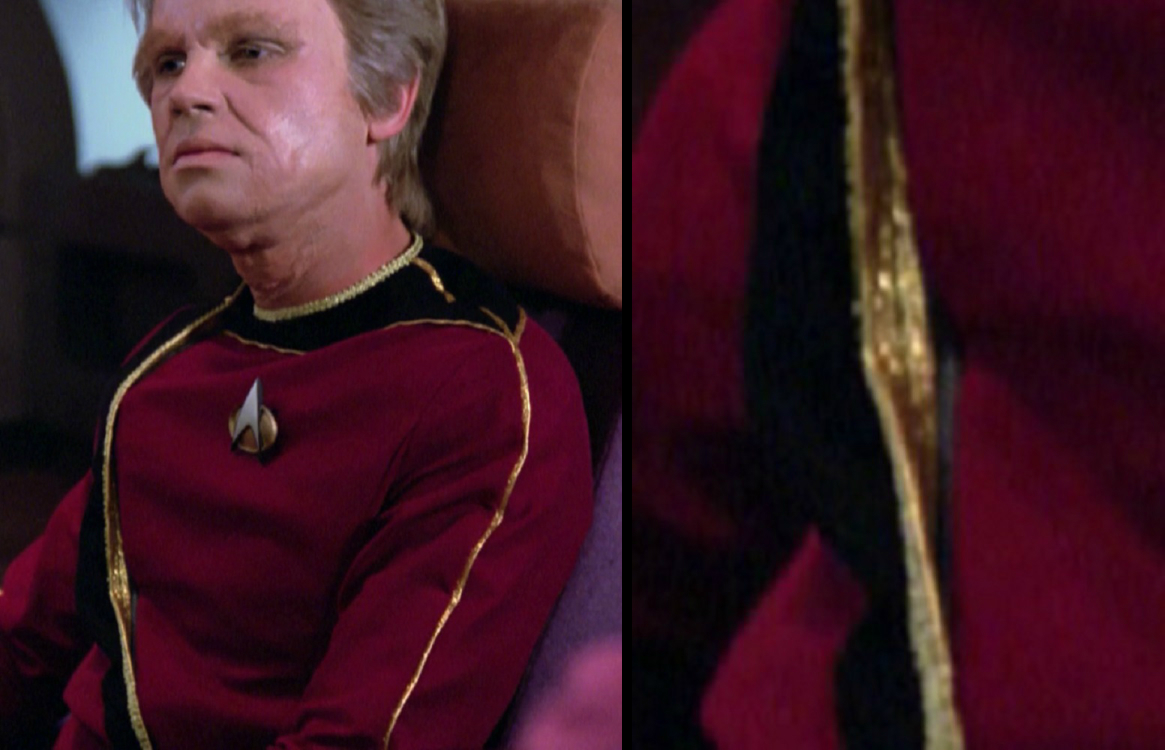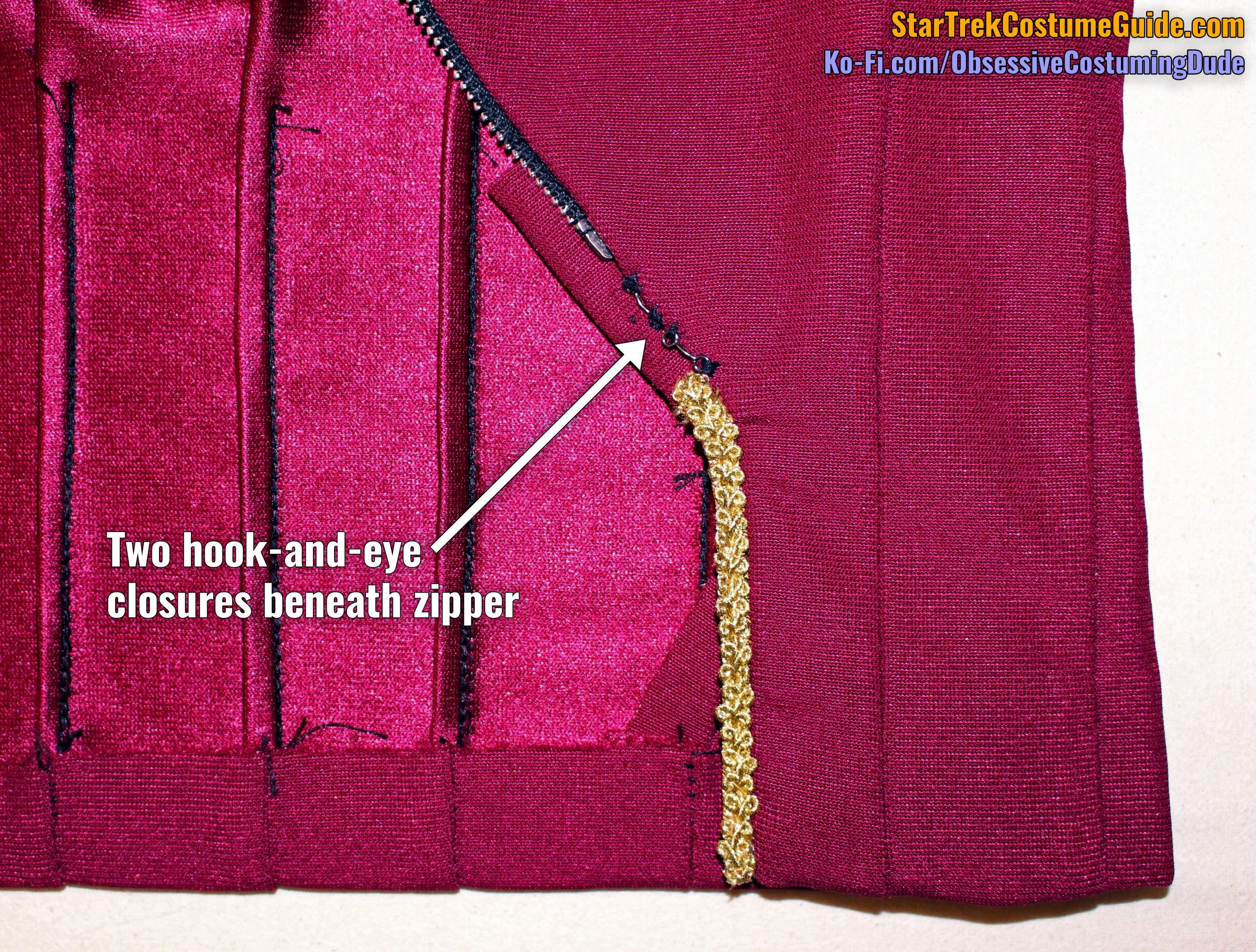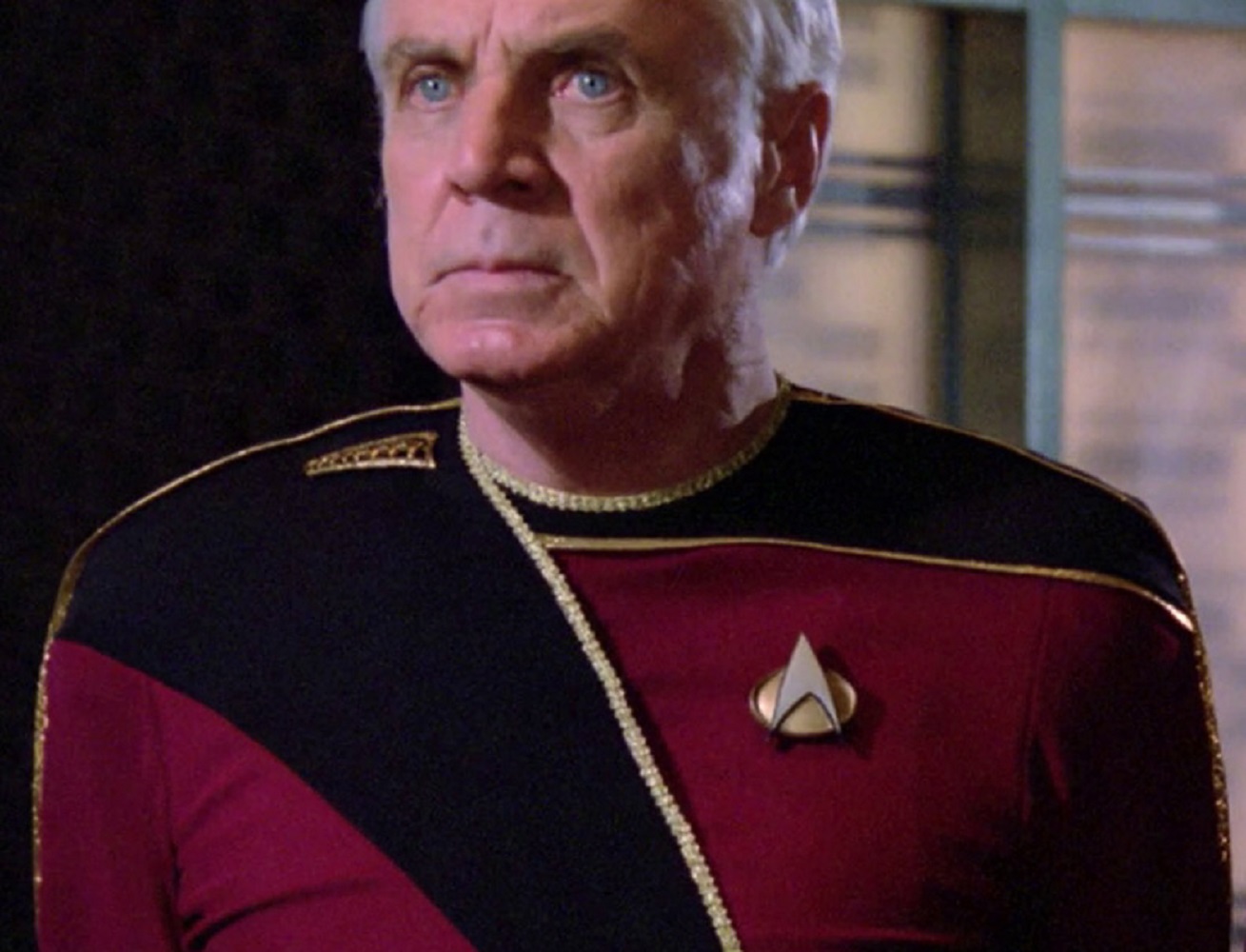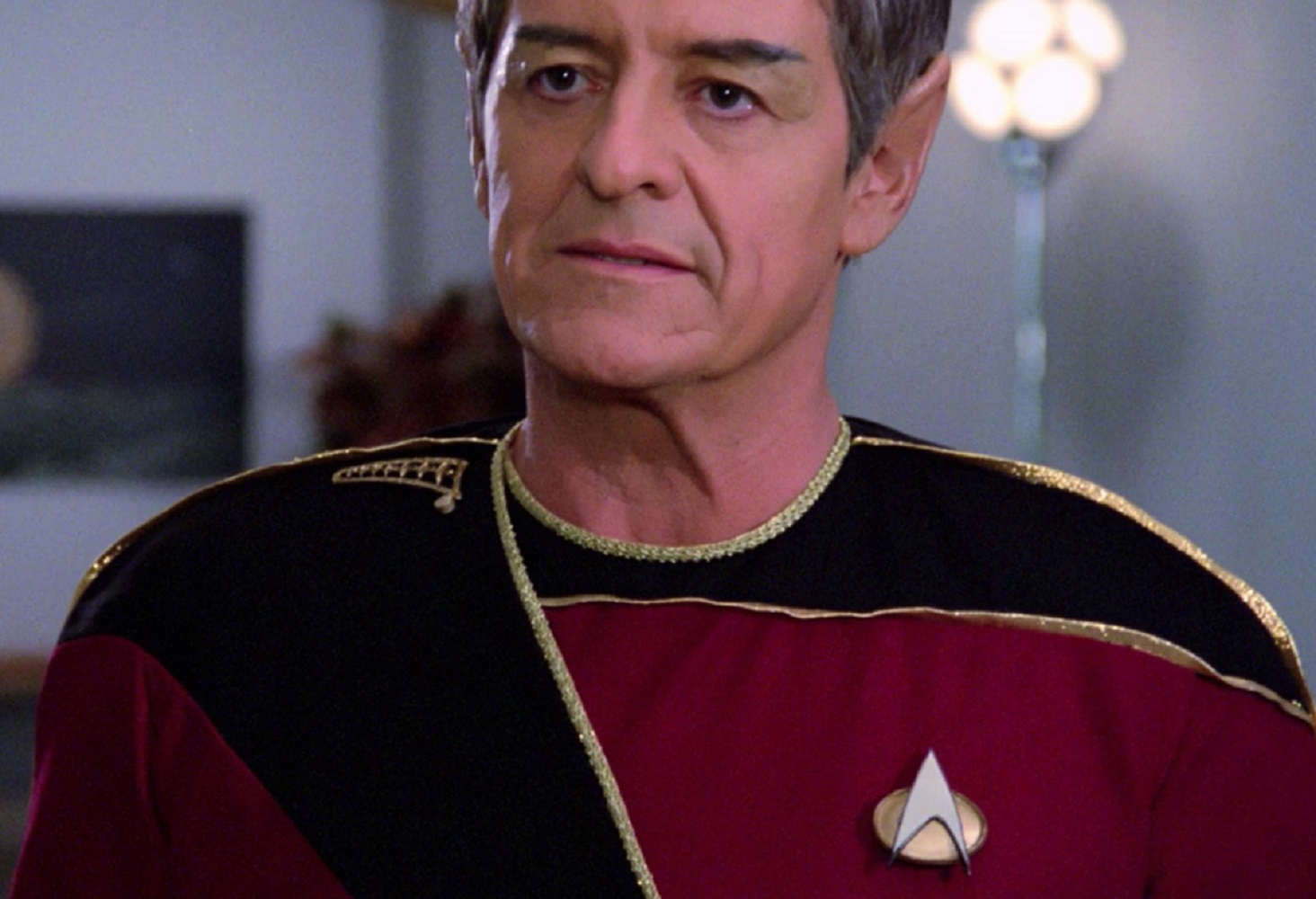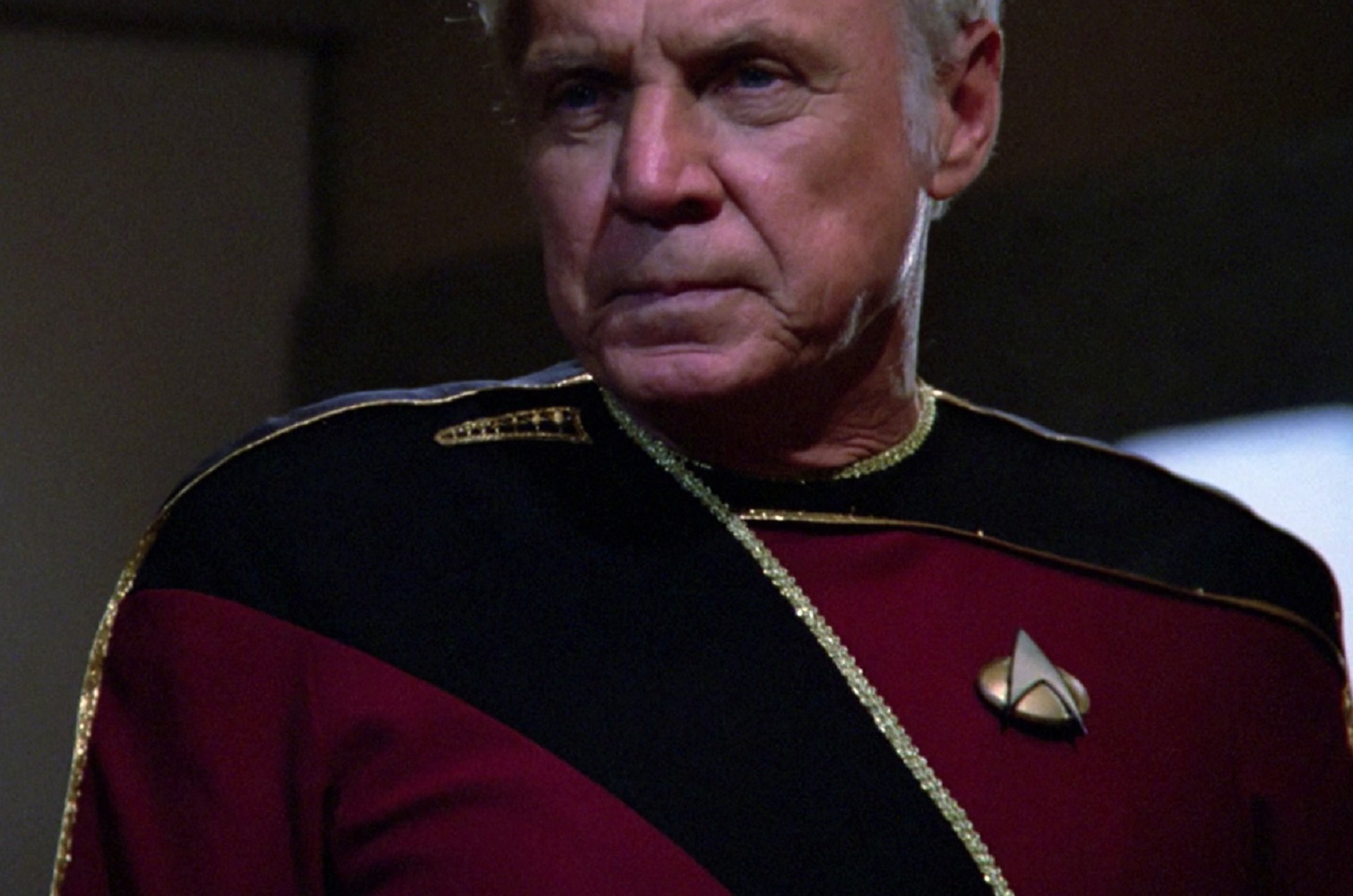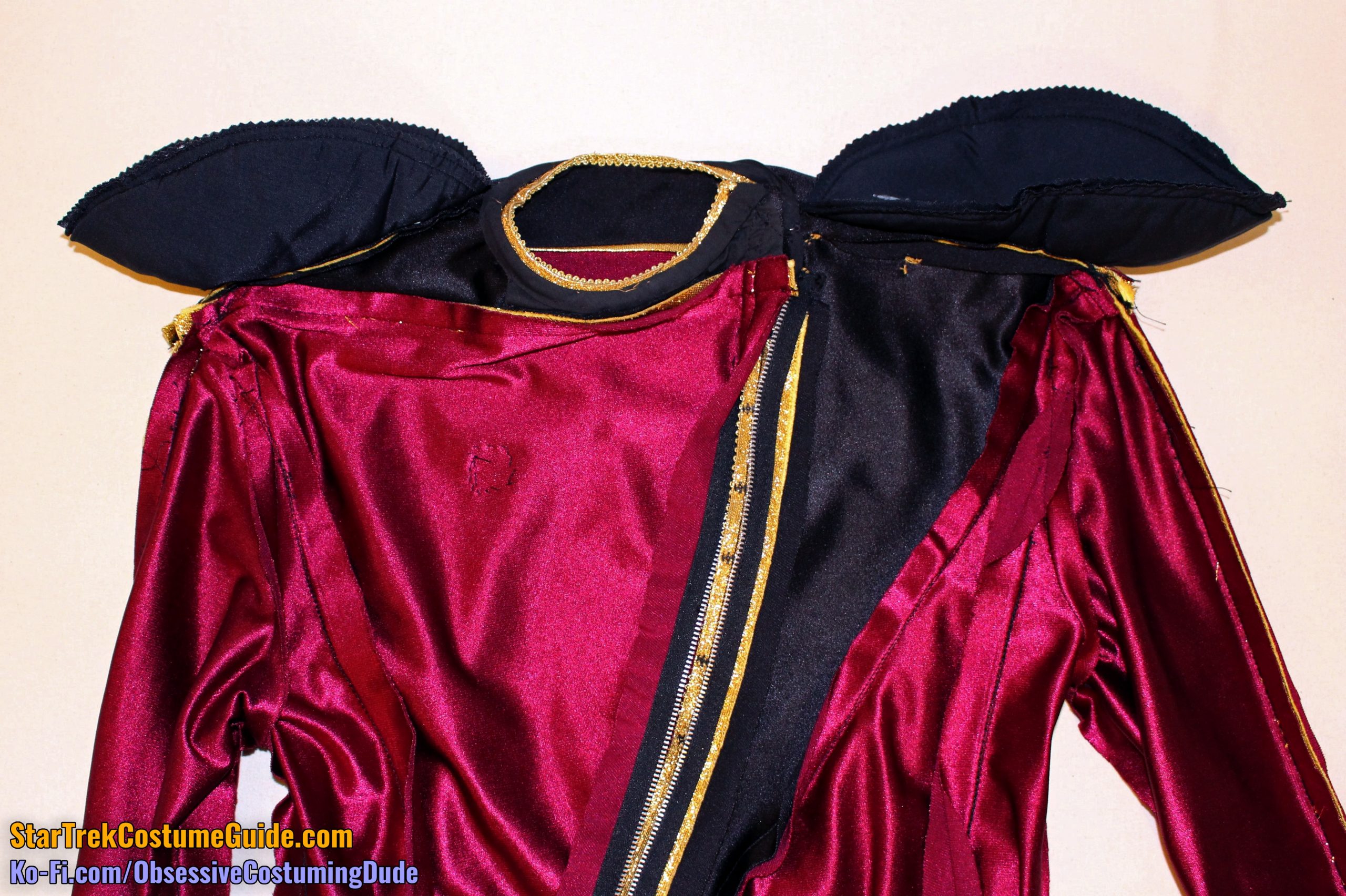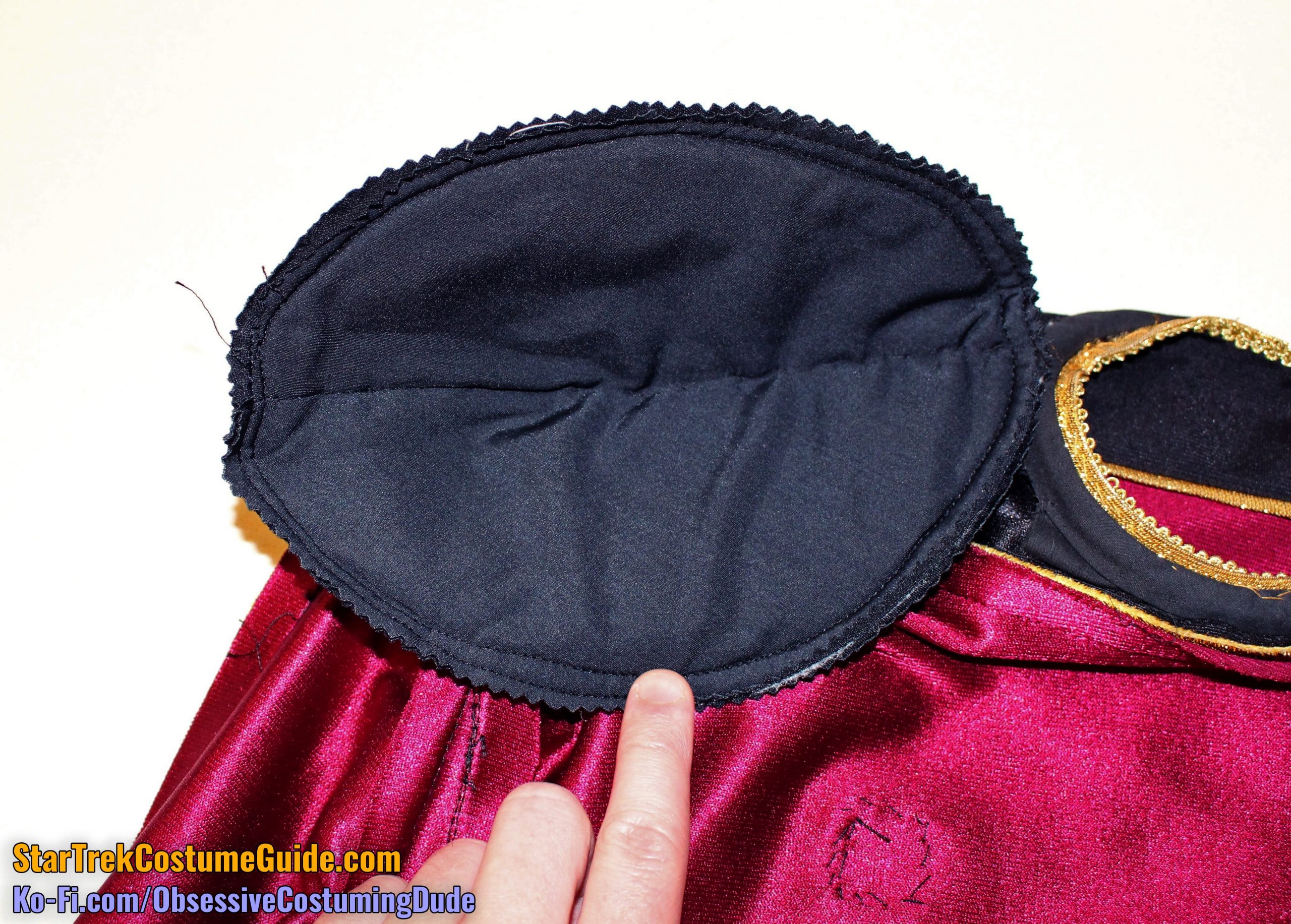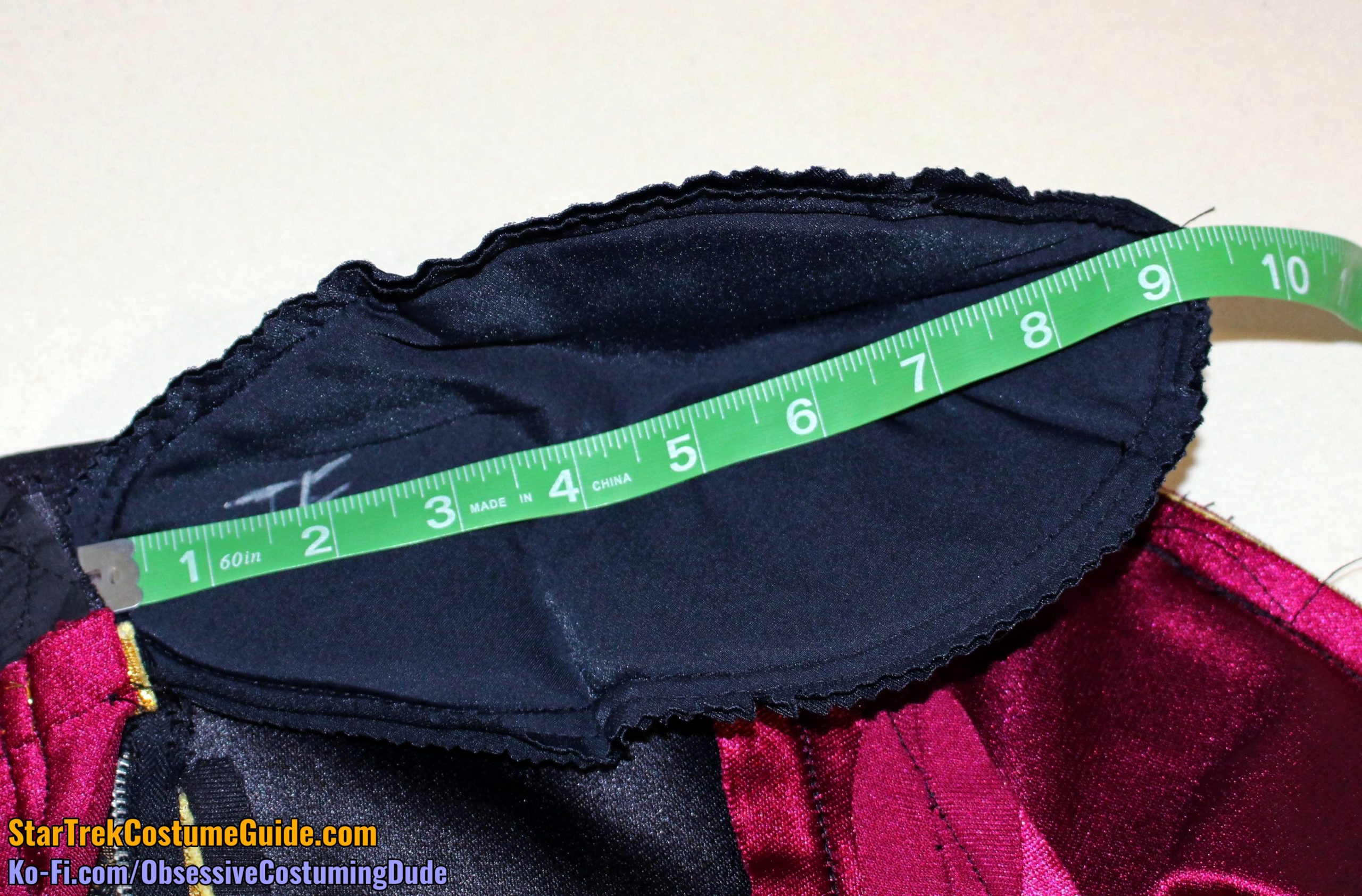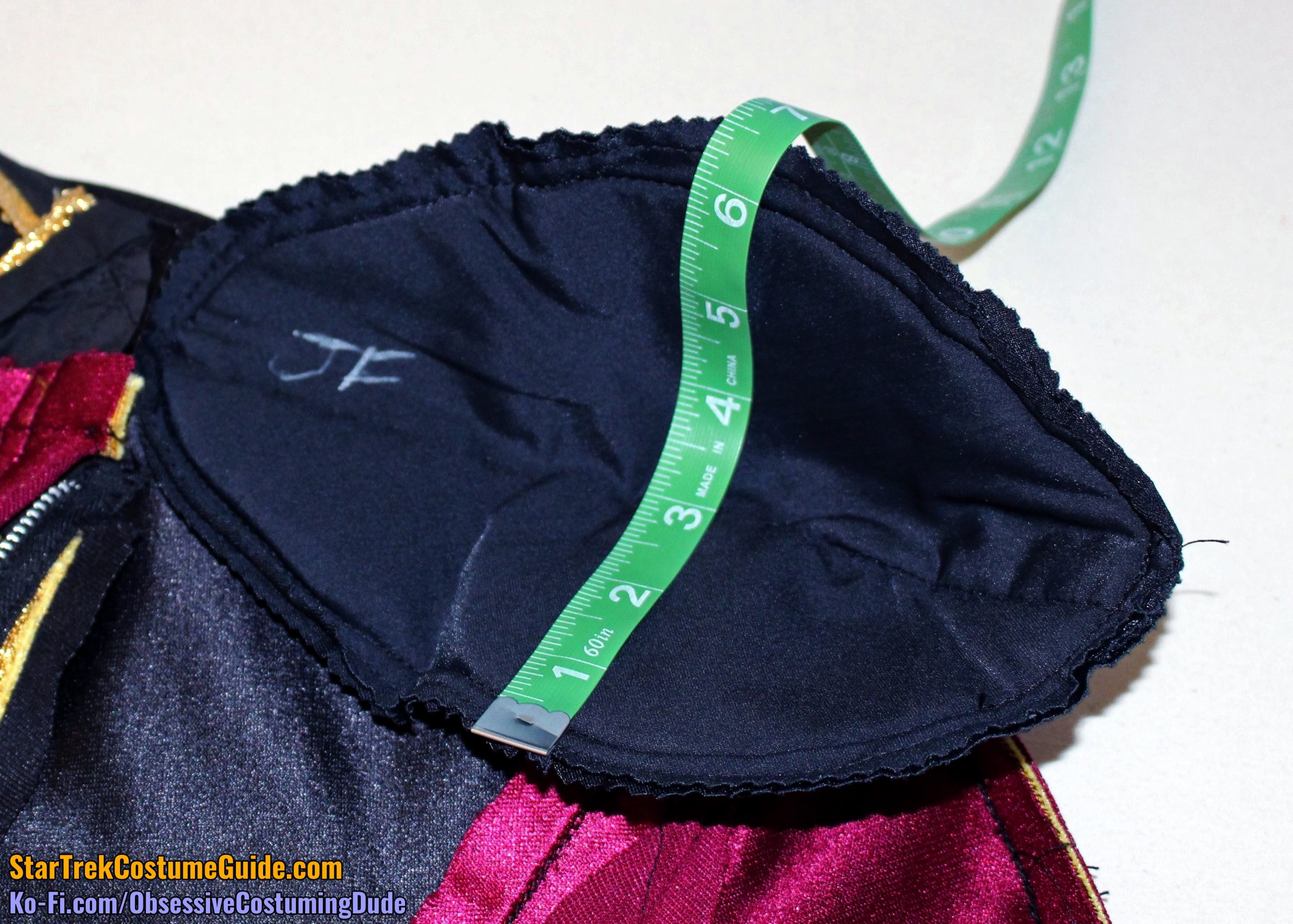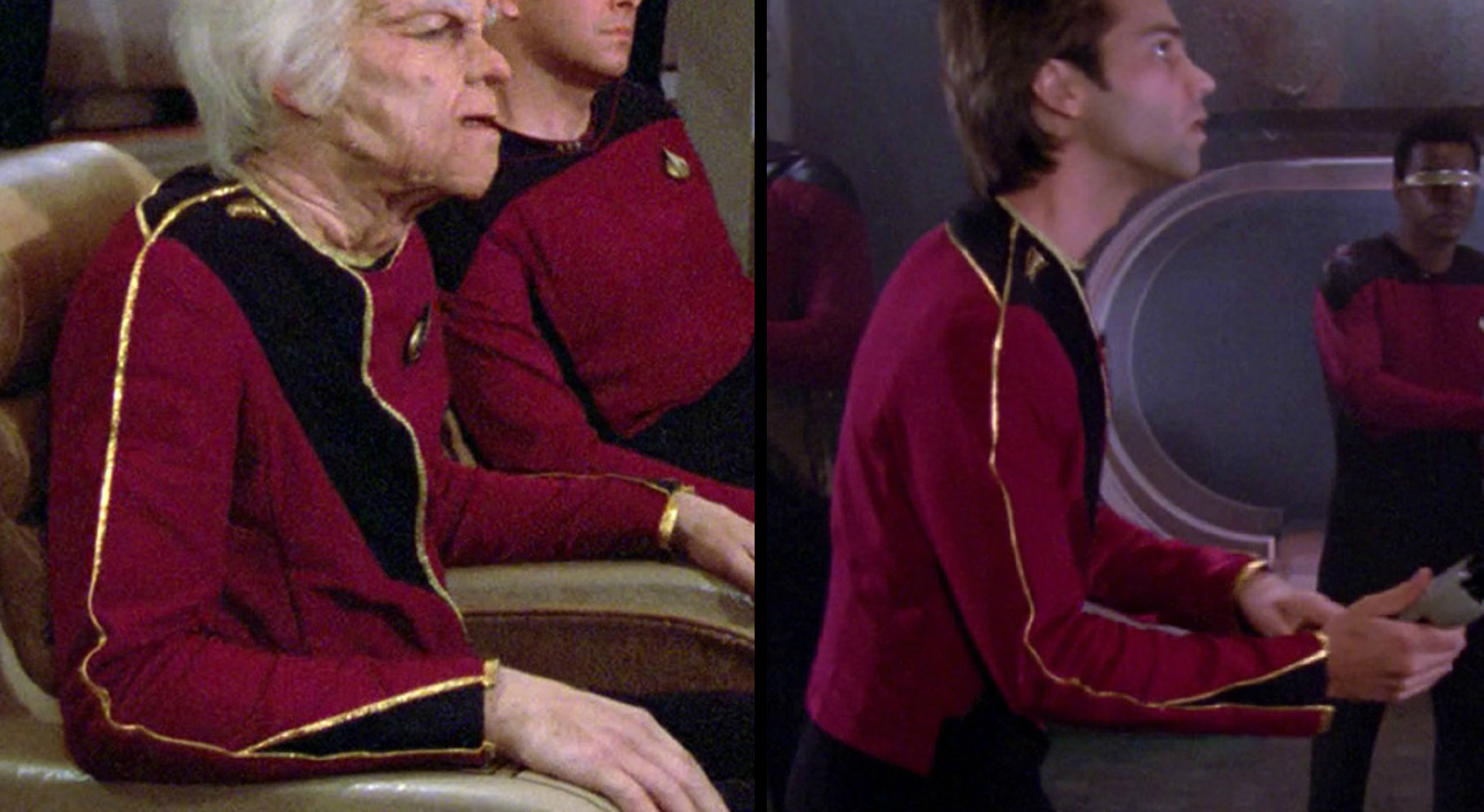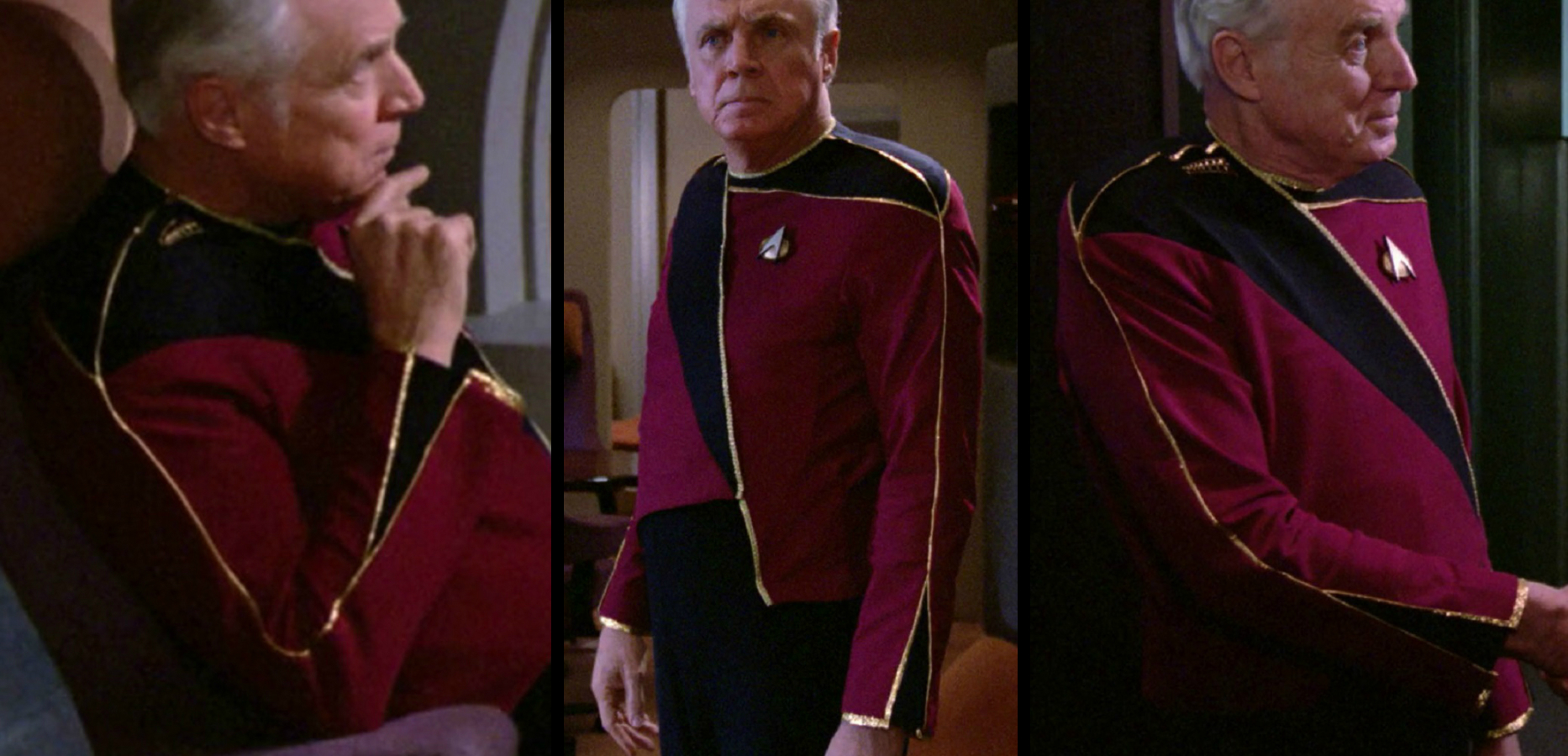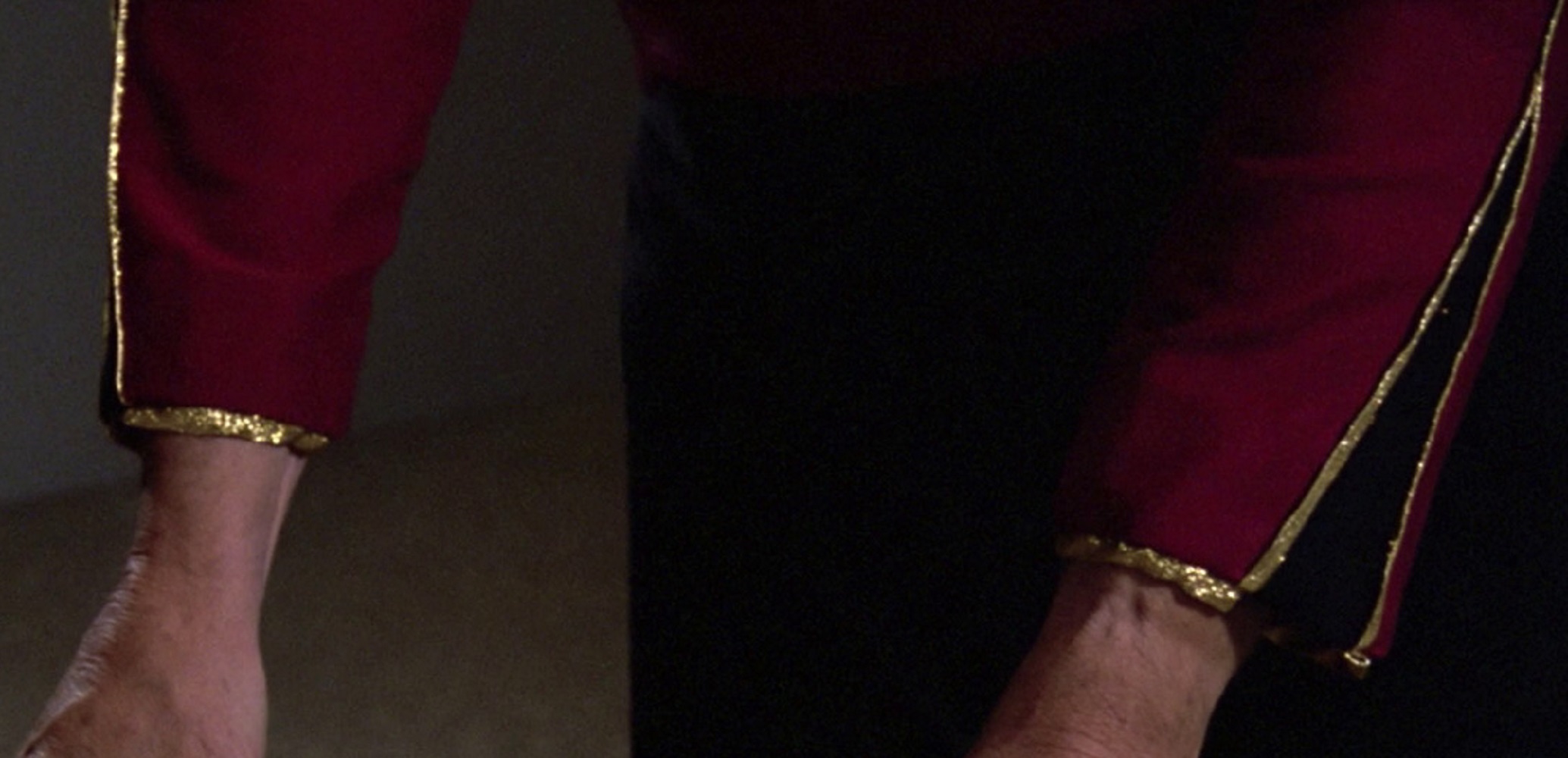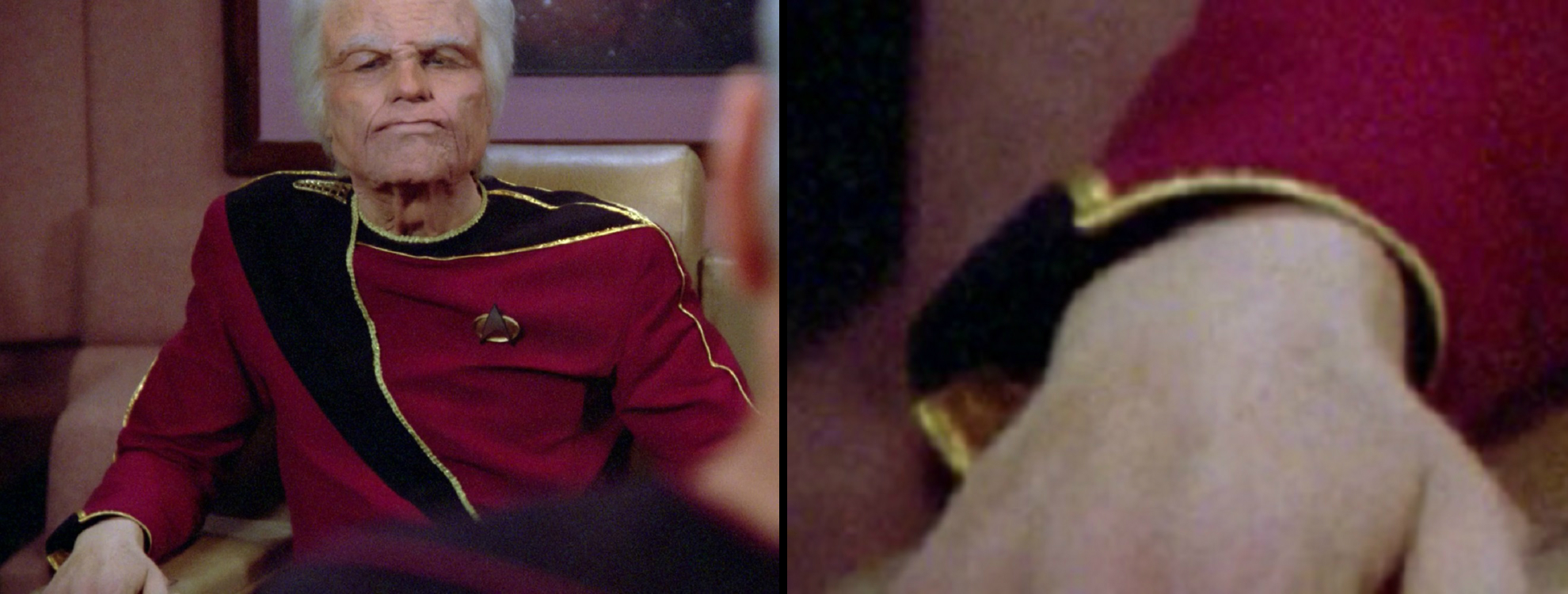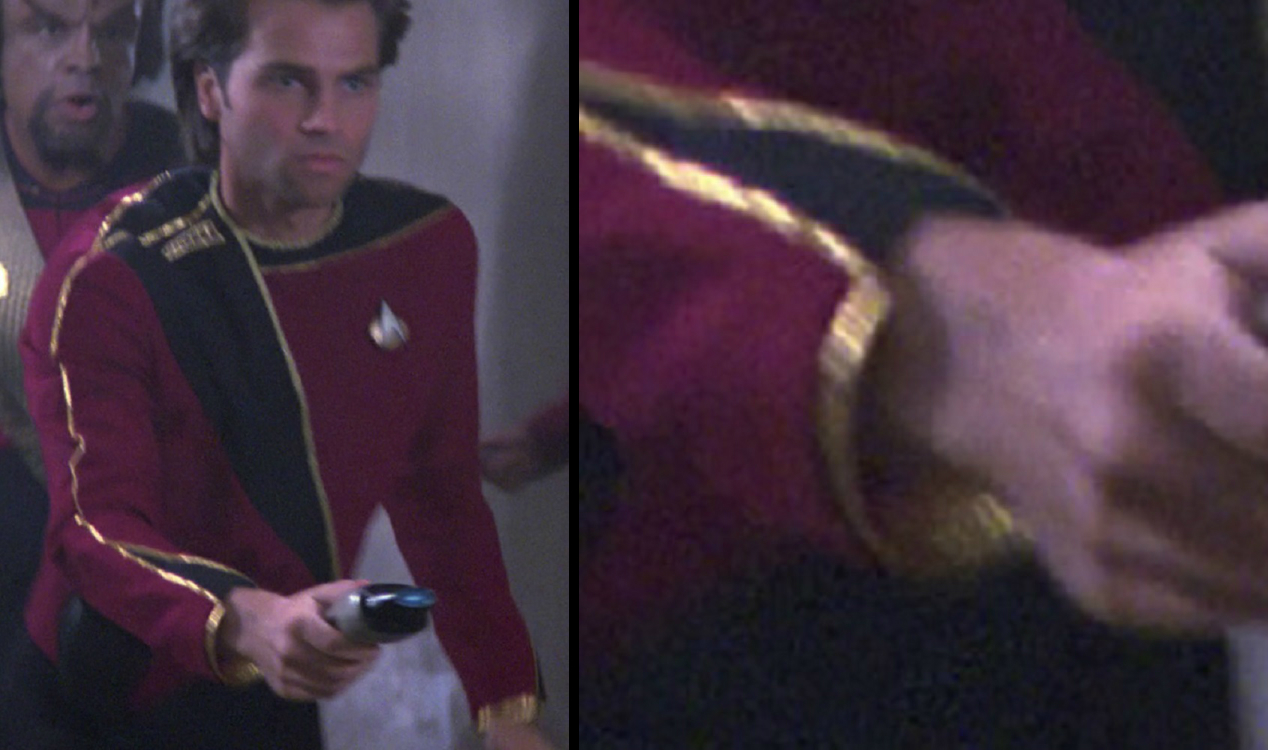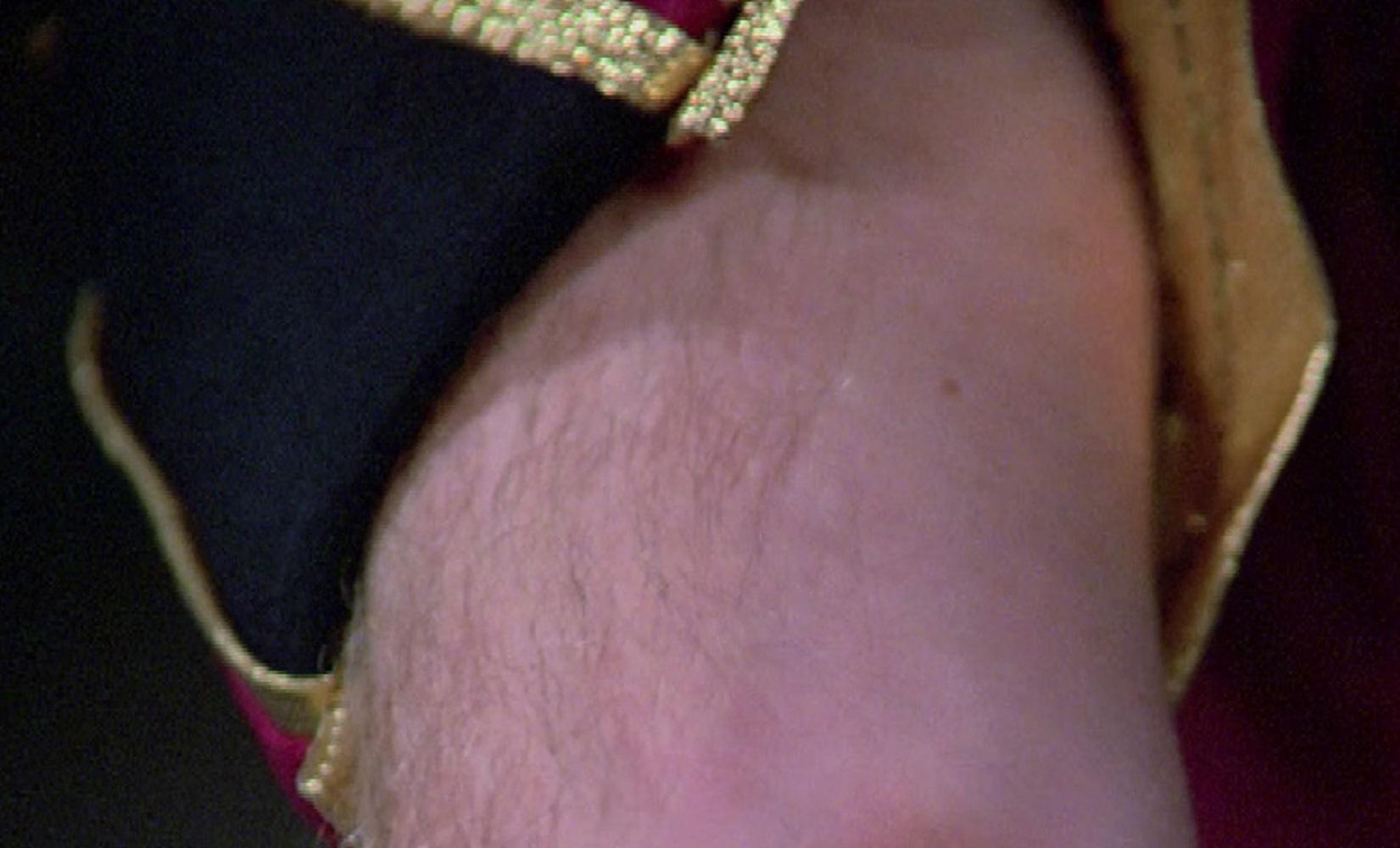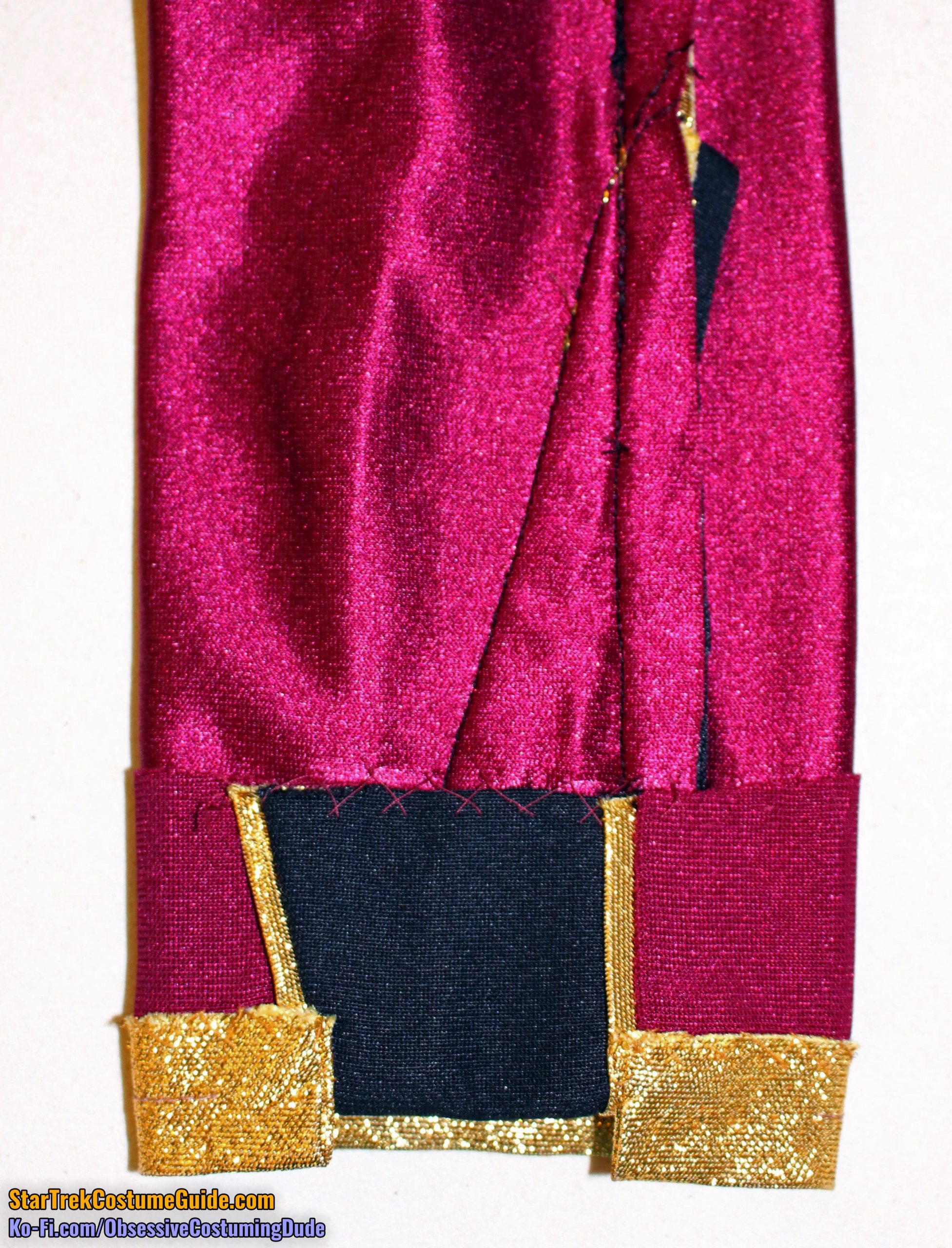Neckline and Yoke
The neckline and front edge of the diagonal panel were accented gold trim.
This trim was approximately ¼” wide and surprisingly similar to standard retail trims still available today.
In fact, the neckline/front trim was actually two separate trims, with the “scroll” trim hand-sewn down onto a gold braid underneath.
The gold trim underneath appears to have been the same trim used in the shoulder/outer sleeve seams, lower yoke seams, and lower sleeve accents.
On Admiral Jameson’s uniform, the yoke extended over to the top of the sleeve, but not onto it.
Here, you can see how the shoulder, front yoke, back yoke, front sleeve, and back sleeve seams all formed a nice intersection at the top of the sleeve.
However, on both of its subsequent appearances, the yoke extended over onto the upper sleeves, in a manner more analogous to that of its counterparts, the TNG jumpsuit and TNG skant.
Here’s a comparison of the two versions:
In every case, though, the back yoke appears to have been fairly shallow.
On the screen-used Admiral Jameson jacket I examined, the yoke was a mere 2” deep at the center back.
Amusingly, this trim often seemed to have a mind of its own, bending every which way …
The metallic gold trim were simply strips of gold fabric, folded in half and sewn into the seams.
(A similar approach could be seen on Commodore Stone’s TOS-era formal uniform.)
Rank Insignia
Of course, a thorough examination of the season 1 admiral uniforms would be incomplete without a look at the infamous brooch worn on the upper right shoulder area.
Here are some close-up auction photos:
And here’s a photo of the brooch on the screen-used Admiral Jameson jacket I examined:
Although all admiral appear to have worn the brooch, the actual rank appears to have been indicated by standard TNG-era rank pips worn beneath the brooch.
Rear Admirals Jameson and Quinn, for instance, wore no pips – just the brooch.
Admiral Vulcan wore a single pip beneath his brooch, and Admiral Whitey wore two.
Another fun fact – the infamous brooches popped up a couple more times over the course of the series.
This Tau Cygna V colonist’s coat featured a half-dozen or so, albeit in silver:
Special thanks to Jörg Hillebrand for bringing that one to my attention.
The other appearance was in the series finale; a trio of them adorned alternate future Data’s smoking jacket.
Special thanks to Michael Cowart for catching this one and pointing it out to me.
Good eye, fellas! 🙂
Body Panels
The jacket body was comprised of eight panels – five across the front, and three across the back.
(Its “skeleton” is of six-panel construction – front and two side fronts, back and two side backs – but the asymmetrical diagonal panel across the front divides the front into three separate pieces.)
The side panel seams were difficult to spot (especially amidst all the pleats), but they were there, and similarly positioned to the corresponding seams on the TNG jumpsuits.
Another characteristic unique to Admiral Jameson’s jacket was a series of pleats across the lower front.
Once he was up and about, though, his uniform switched to the pleated style.
I have two theories as to why this might’ve happened: it could’ve been to keep his uniform looking “cleaner” while he was in the wheelchair (the pleats and their little “bubbles” at the top might’ve looked too messy), or perhaps Theiss initially designed the uniform one way then changed the design partway through filming the episode.
I did, however, come across these photos of what appears to be that same uniform (with the characteristic darts) in Robert Withrow’s album on Photo Bucket:
http://s189.photobucket.com/user/RealGoldfinger/library/?sort=6&page=1
However, the subsequent season 1 admiral jackets had no pleats (or darts) across the lower front.
Both versions of the jacket had pleats across the side and back, though.
In addition to the different yoke and lower front styles, the actual contour of the asymmetrical black front panel was slightly different on the two uniform styles.
Observe how the black panel on Admiral Jameson’s jacket “drooped” downward (sagging toward the middle), whereas Admiral Quinn’s had the opposite curve (more like a tornado).
Closure System
The jacket closed up the front via a separating zipper, just inside of the diagonal front trim.
Above the zipper was a hook-and-eye closure to fasten the neck to the shoulder.
These precautions were mostly effective, and clearly necessary, since the diagonal front edge was prone to pulling back away from the zipper.
Beneath the zipper were two more hook-and-eye closures.
Armscye and Sleeves
Like the other TNG-era uniforms, the shoulder/armscye area on both versions of the season 1 admiral jackets were smooth and rounded, raglan-style.
Like the other early TNG-era uniforms I’ve examined, the shoulders were supported by raglan shoulder pads, which appear to have been custom-made.
And boy, were these pads huge! Don’t you miss the 80s?!?
Unlike the shoulder pads on the ladies’ TNG skant, which had a large surface area but only a slight amount of loft, the shoulder pads on this admiral uniform had quite a bit of loft to them.
They appear to have been constructed in an identical manner: ovular, with padding enclosed between two layers of black lining, a dart establishing the rounded shape, stitched twice around the perimeter, and edges trimmed with pinking shears.
However, they were also considerably larger – approximately 9 ¼” x 6 ½”.
The shoulder and outer sleeve seams were accented with the same gold trim as the lower yoke, and at the bottom of each sleeve was a small, black, triangular insert, also accented with gold trim.
The sleeve hem was also accented with gold trim, wider than that on the rest of the garment.
The lower sleeve trim was simply sewn onto the sleeve hem.

